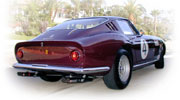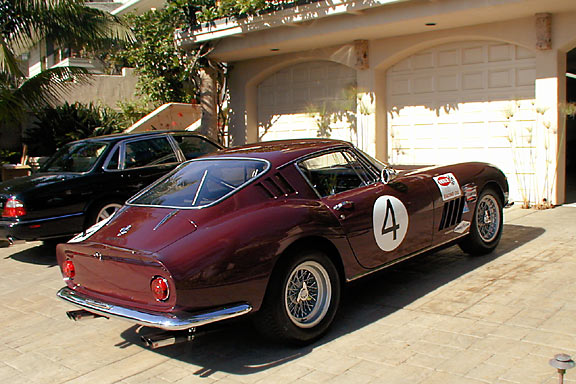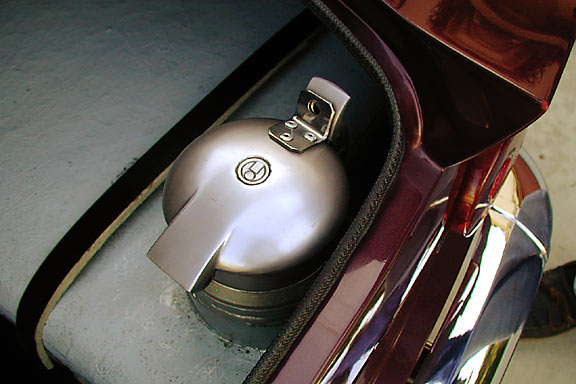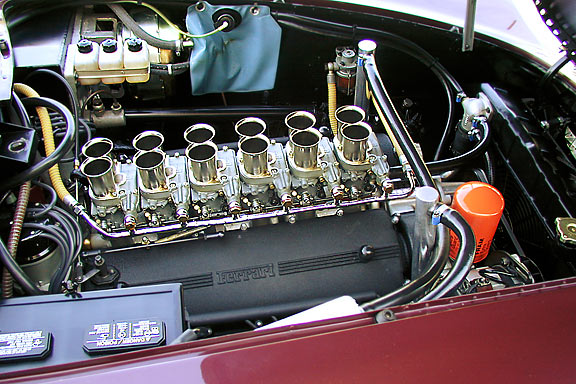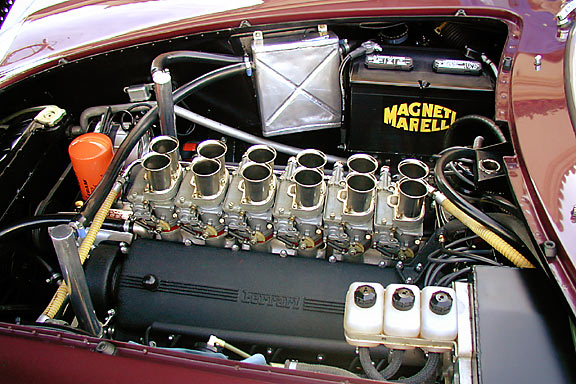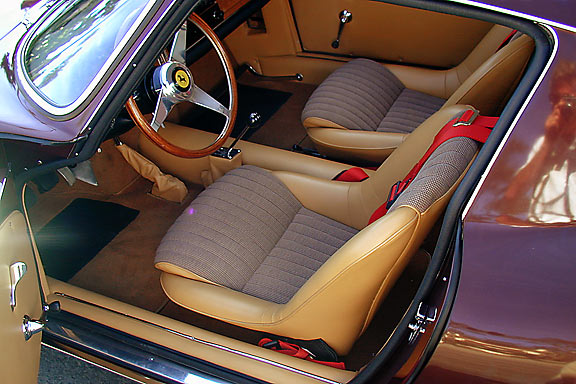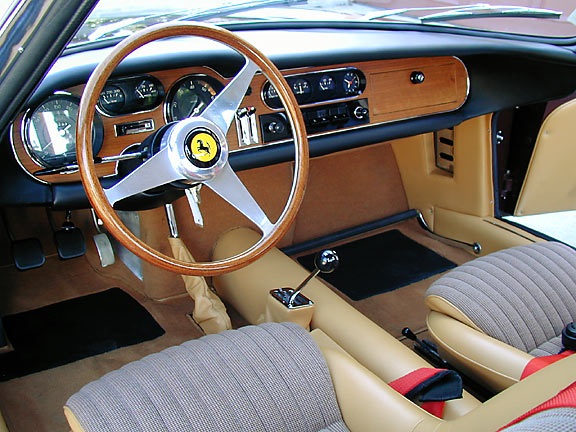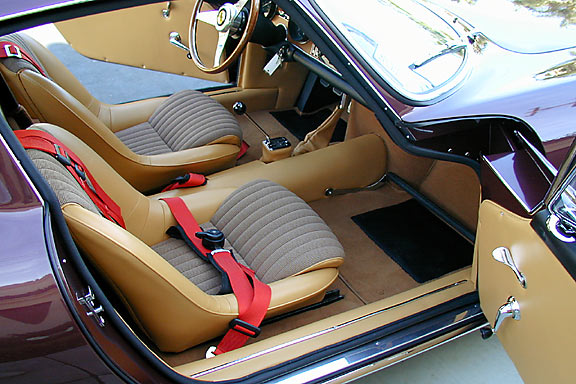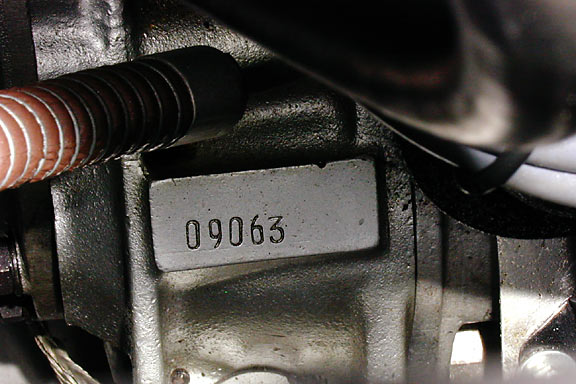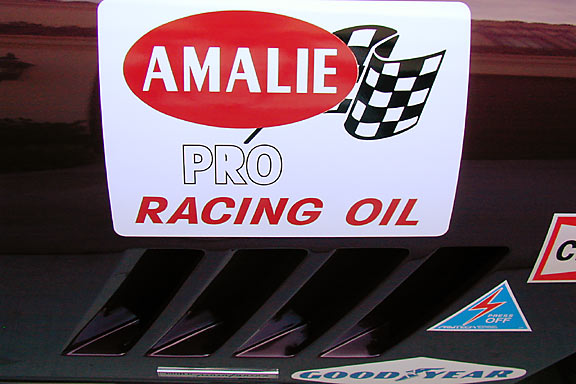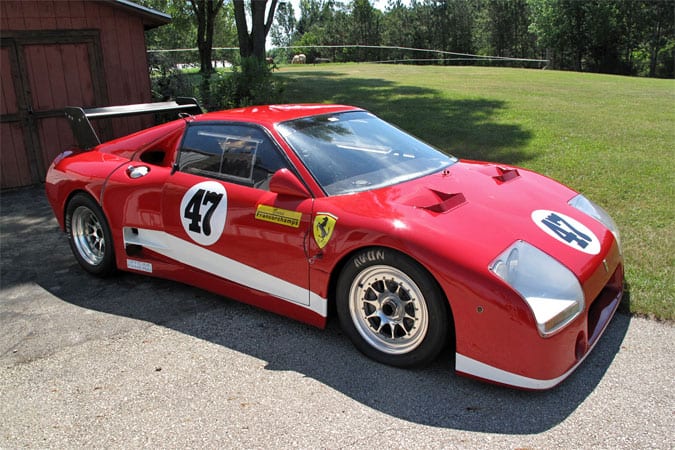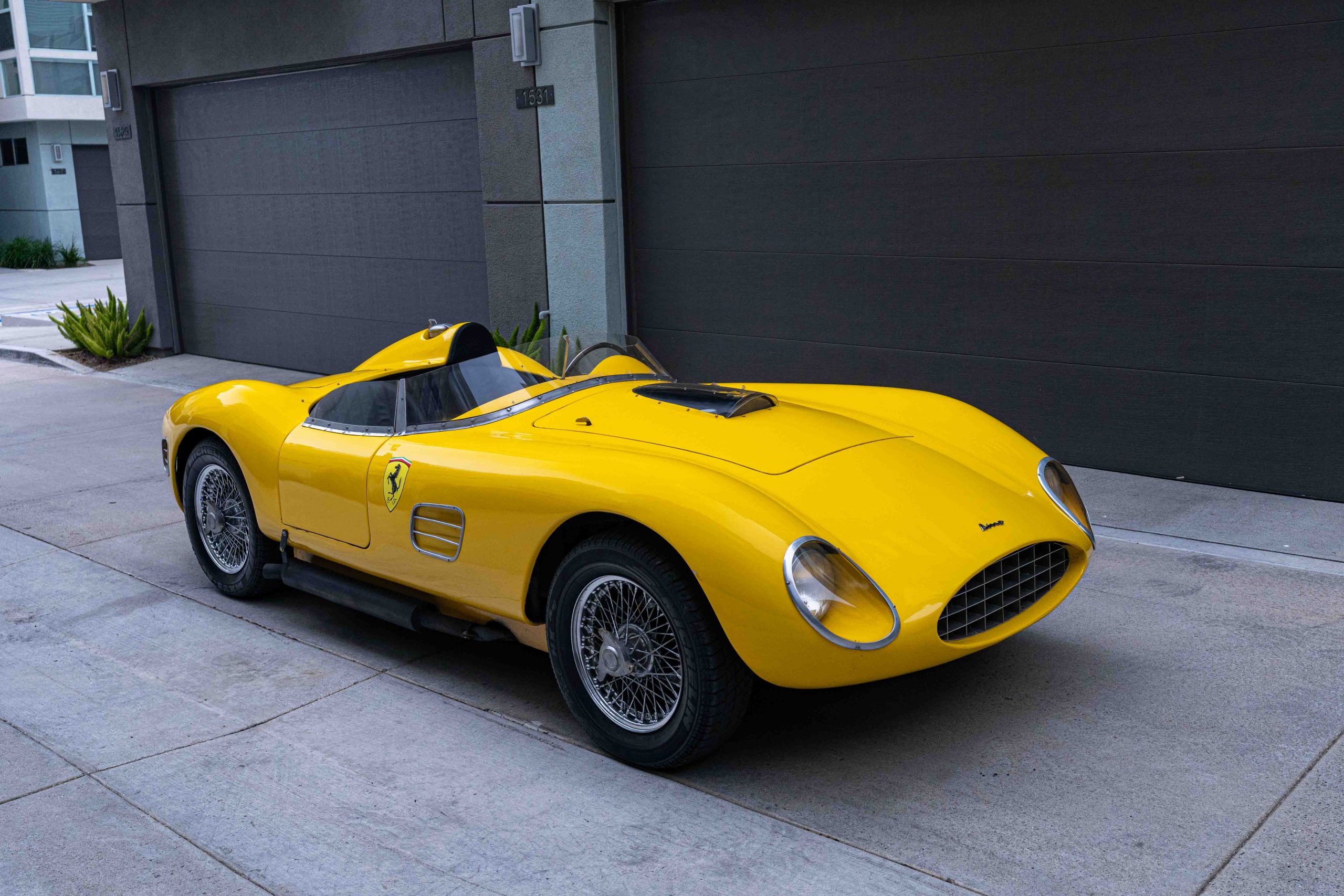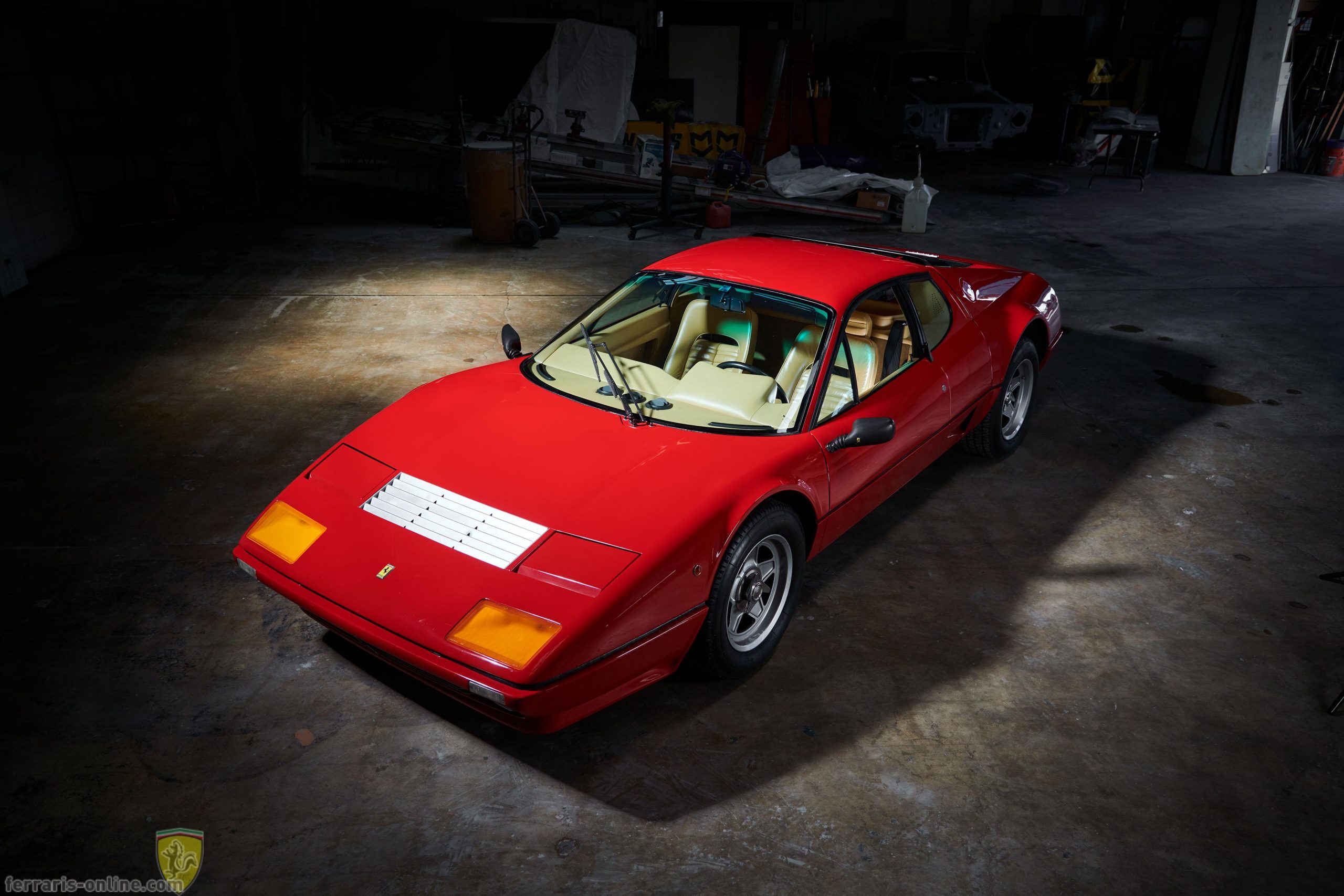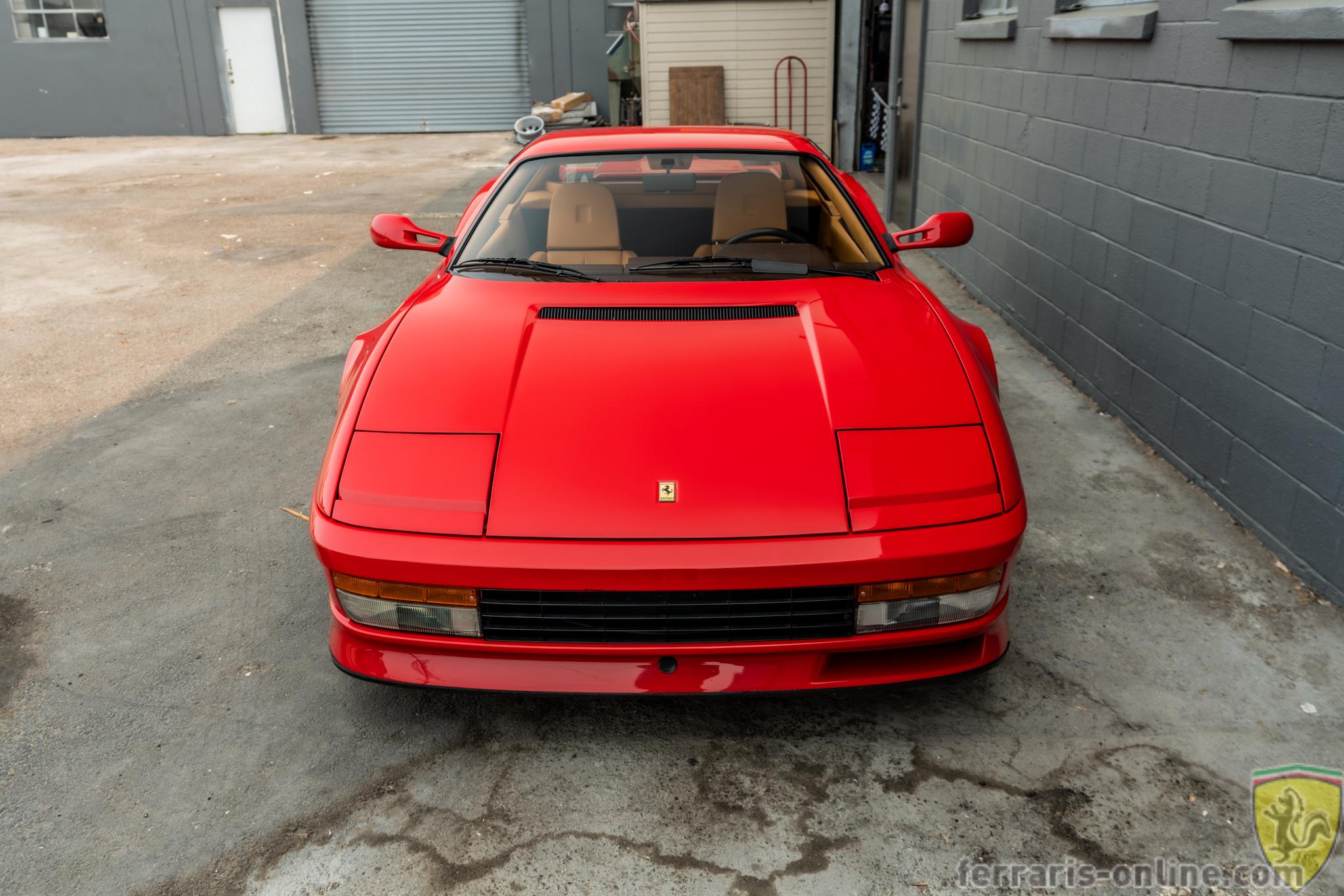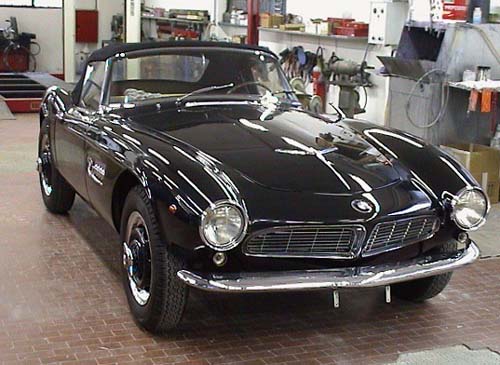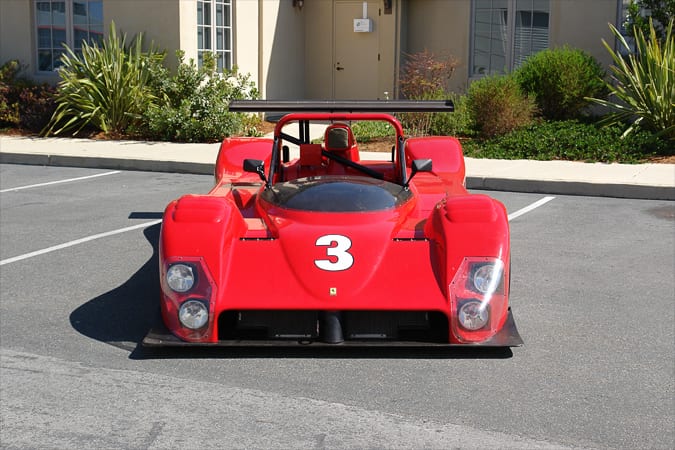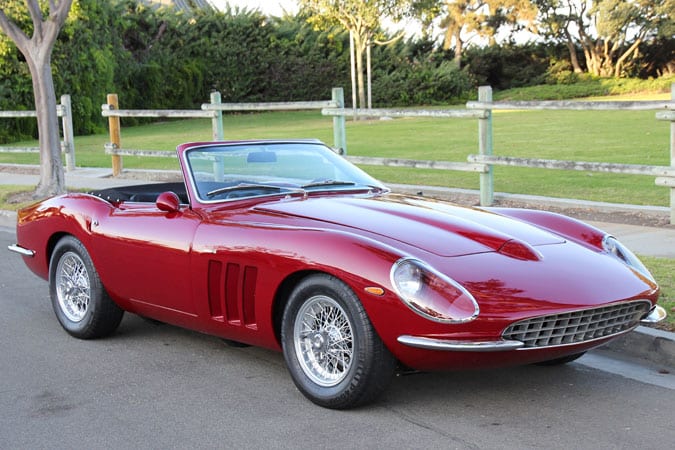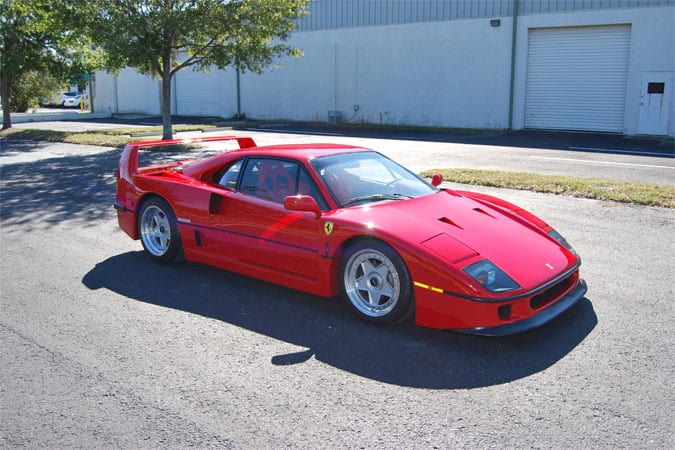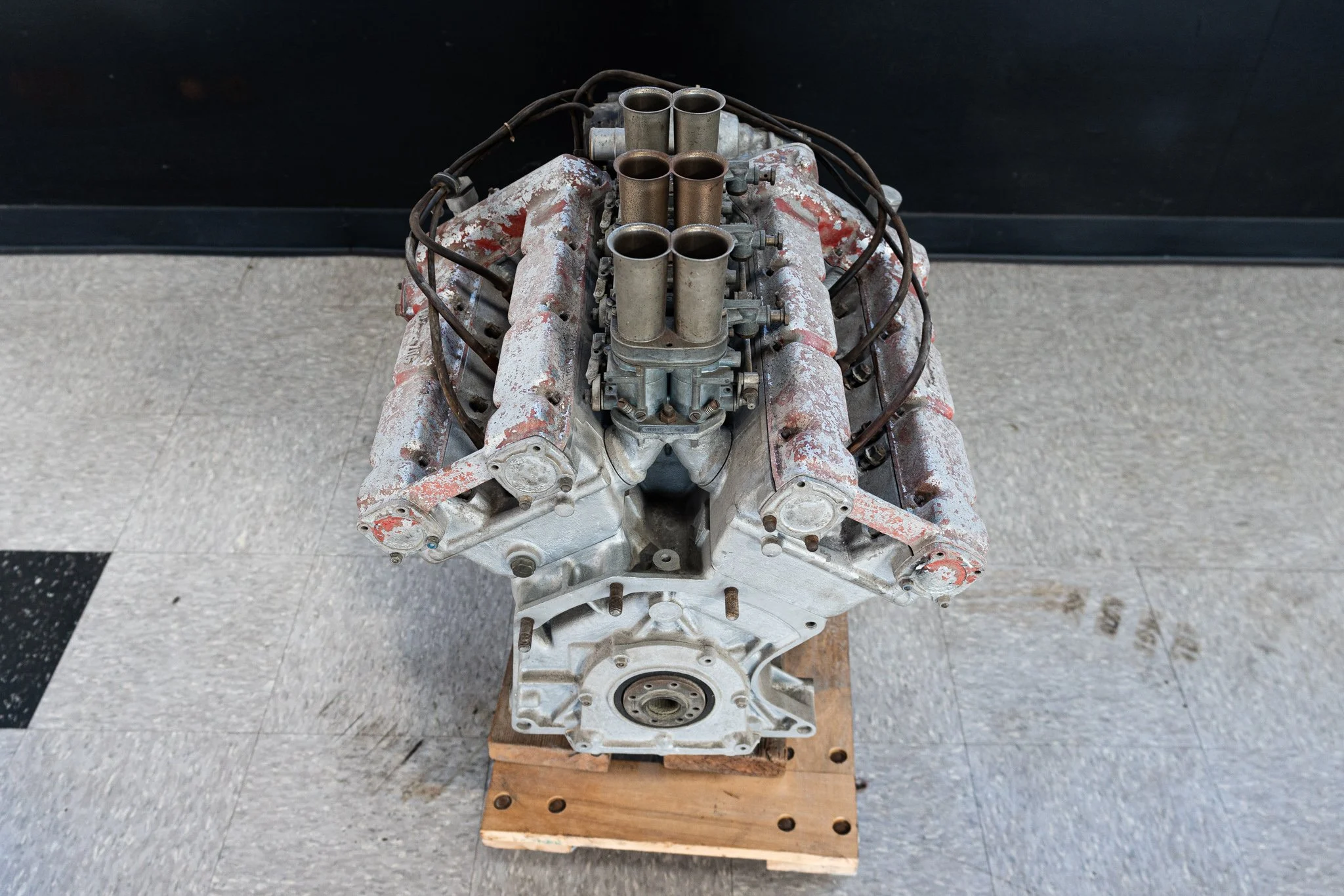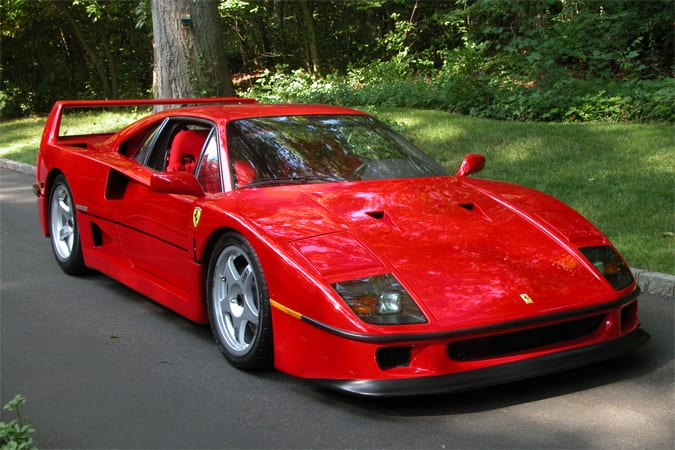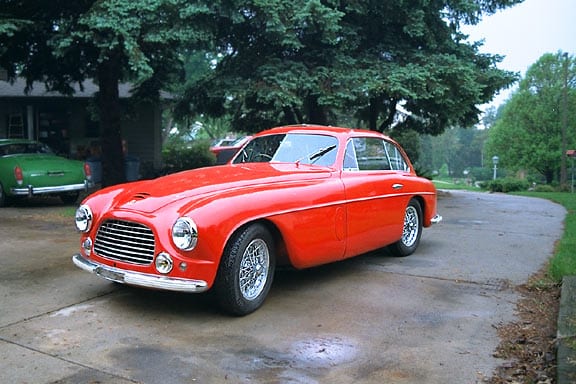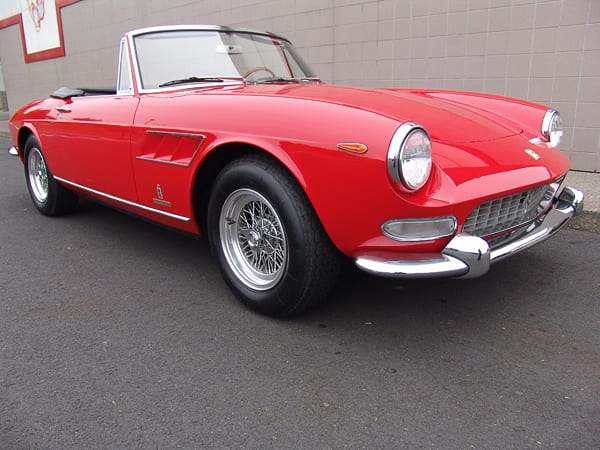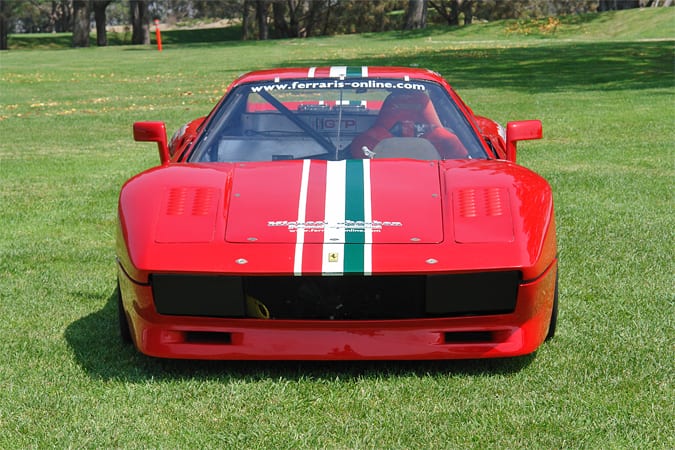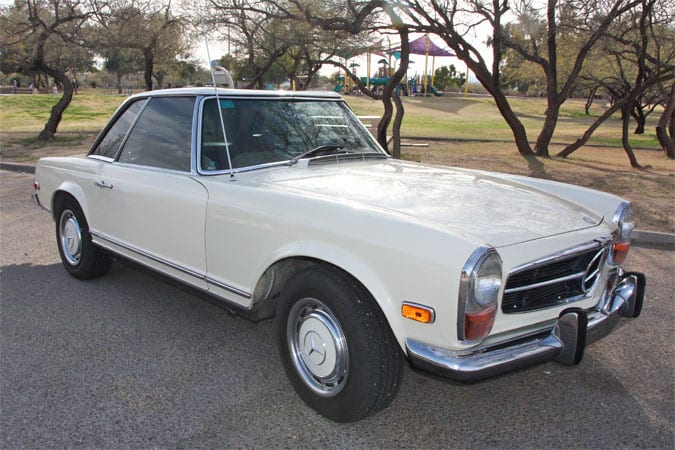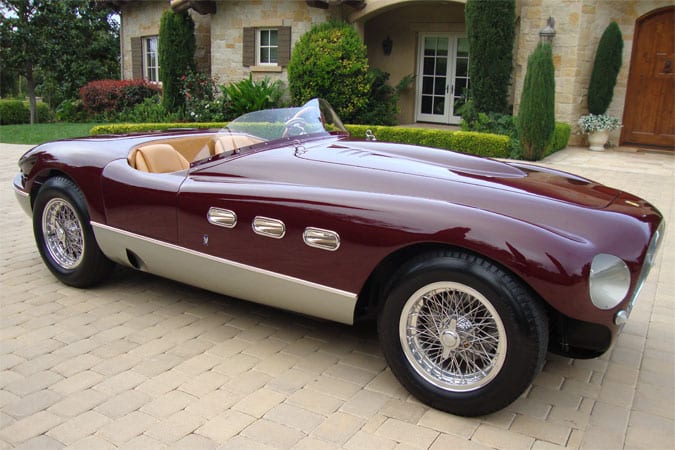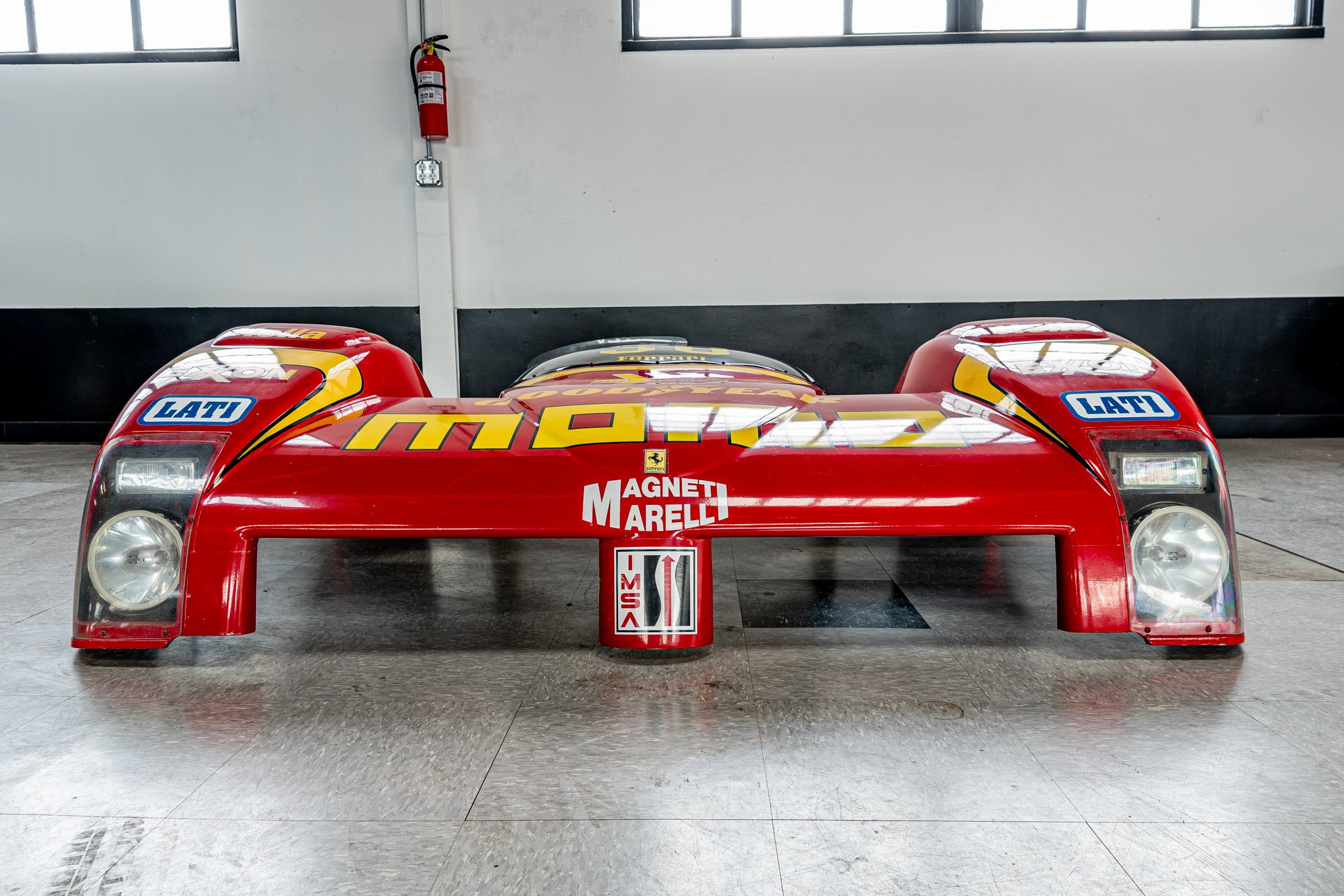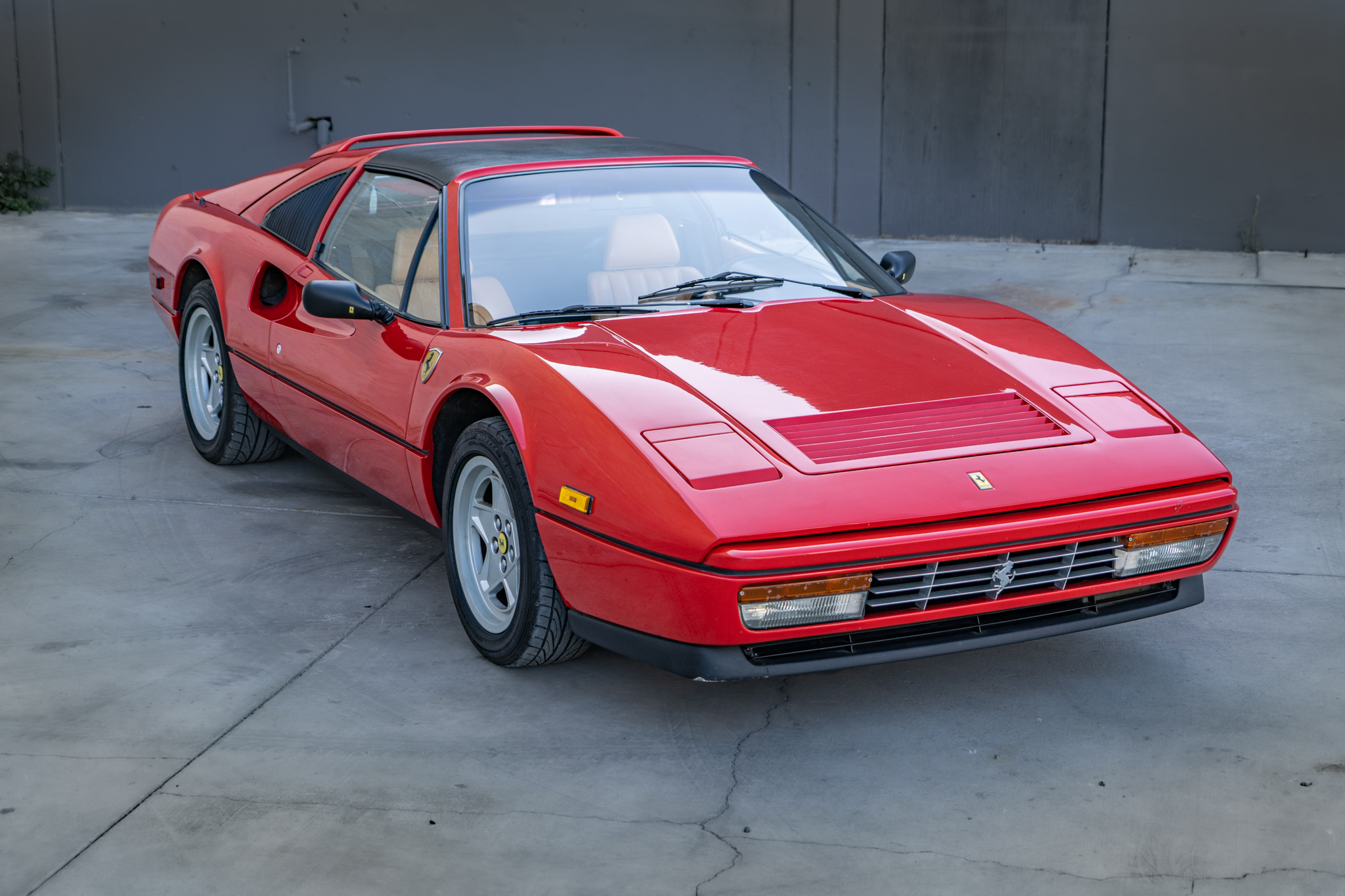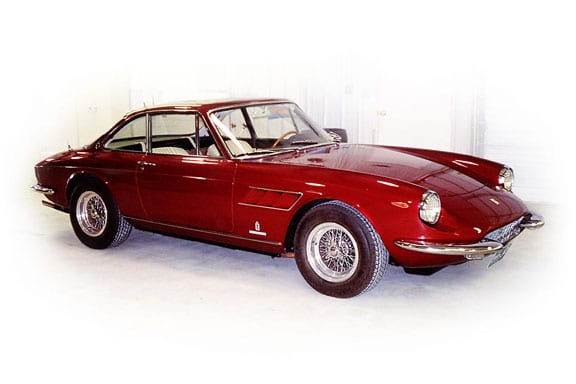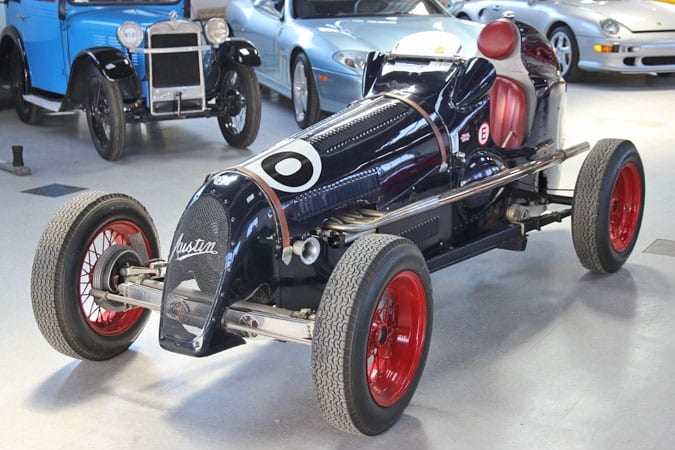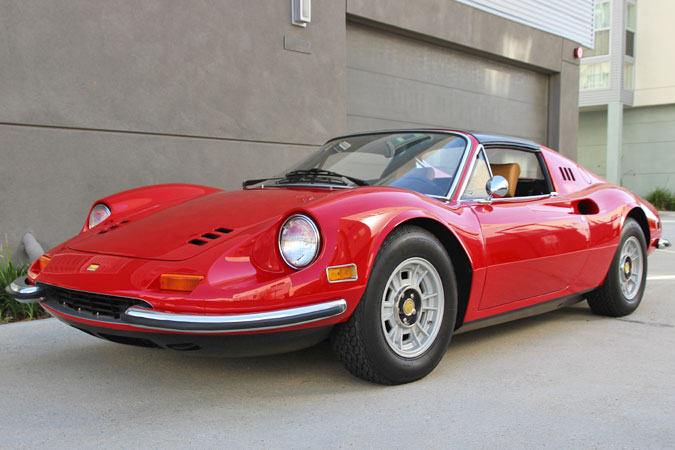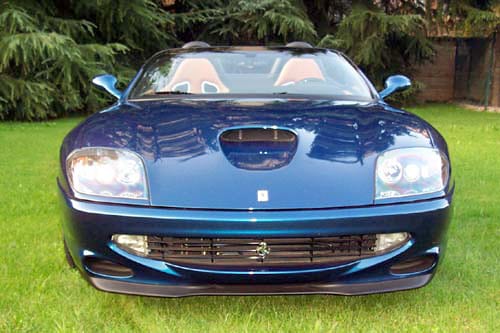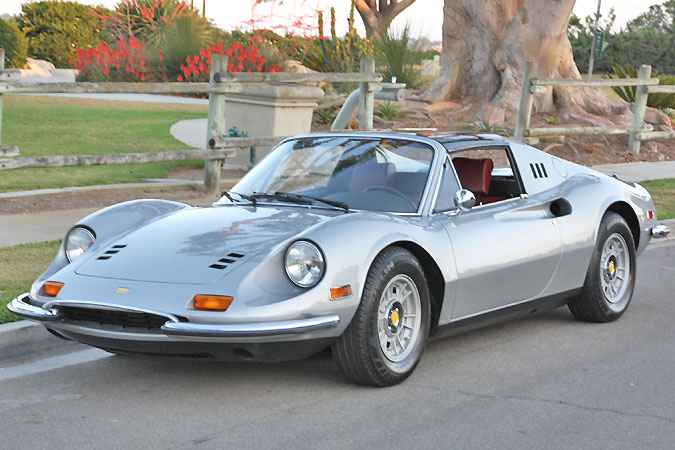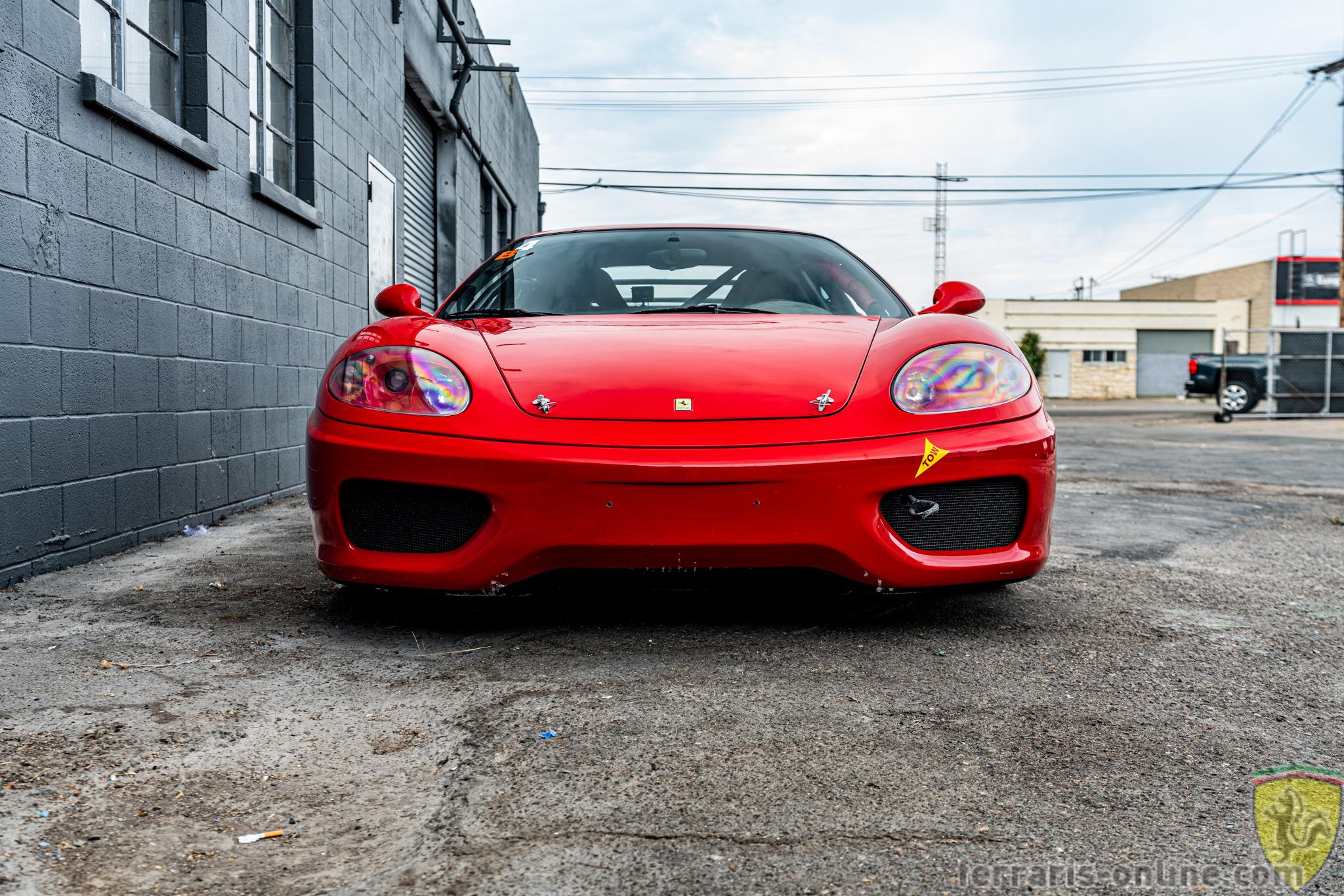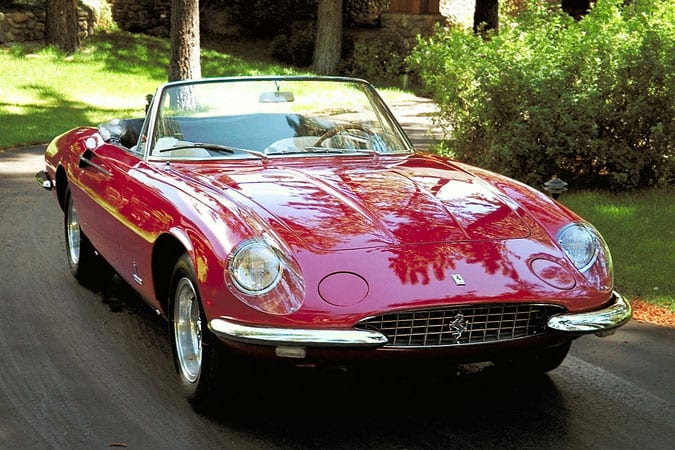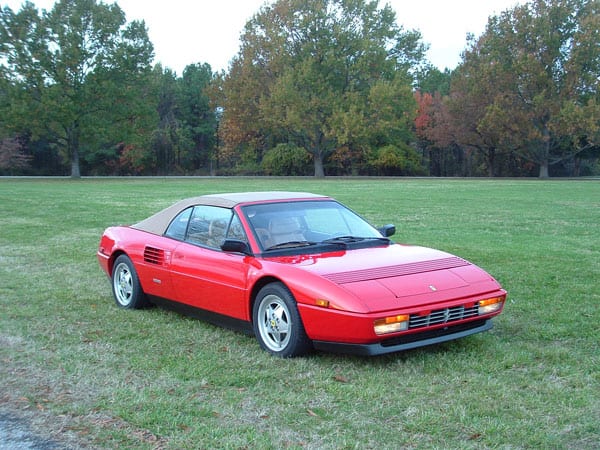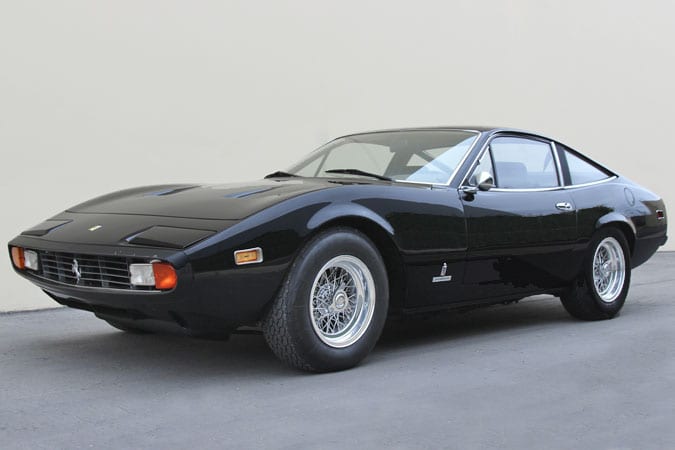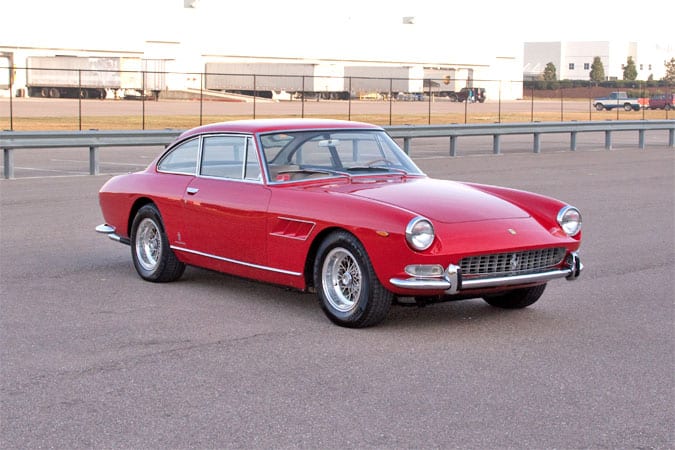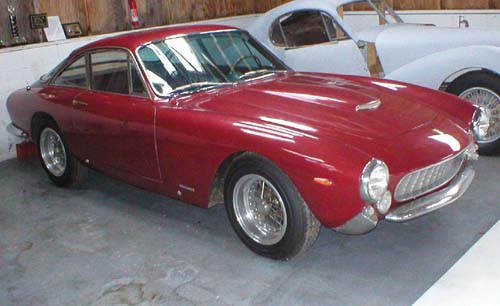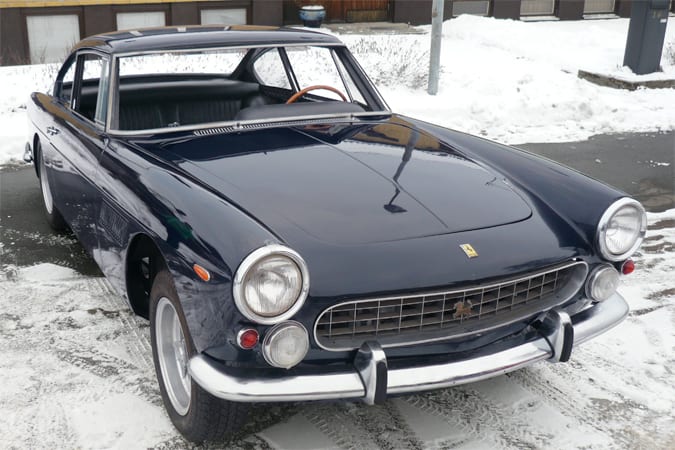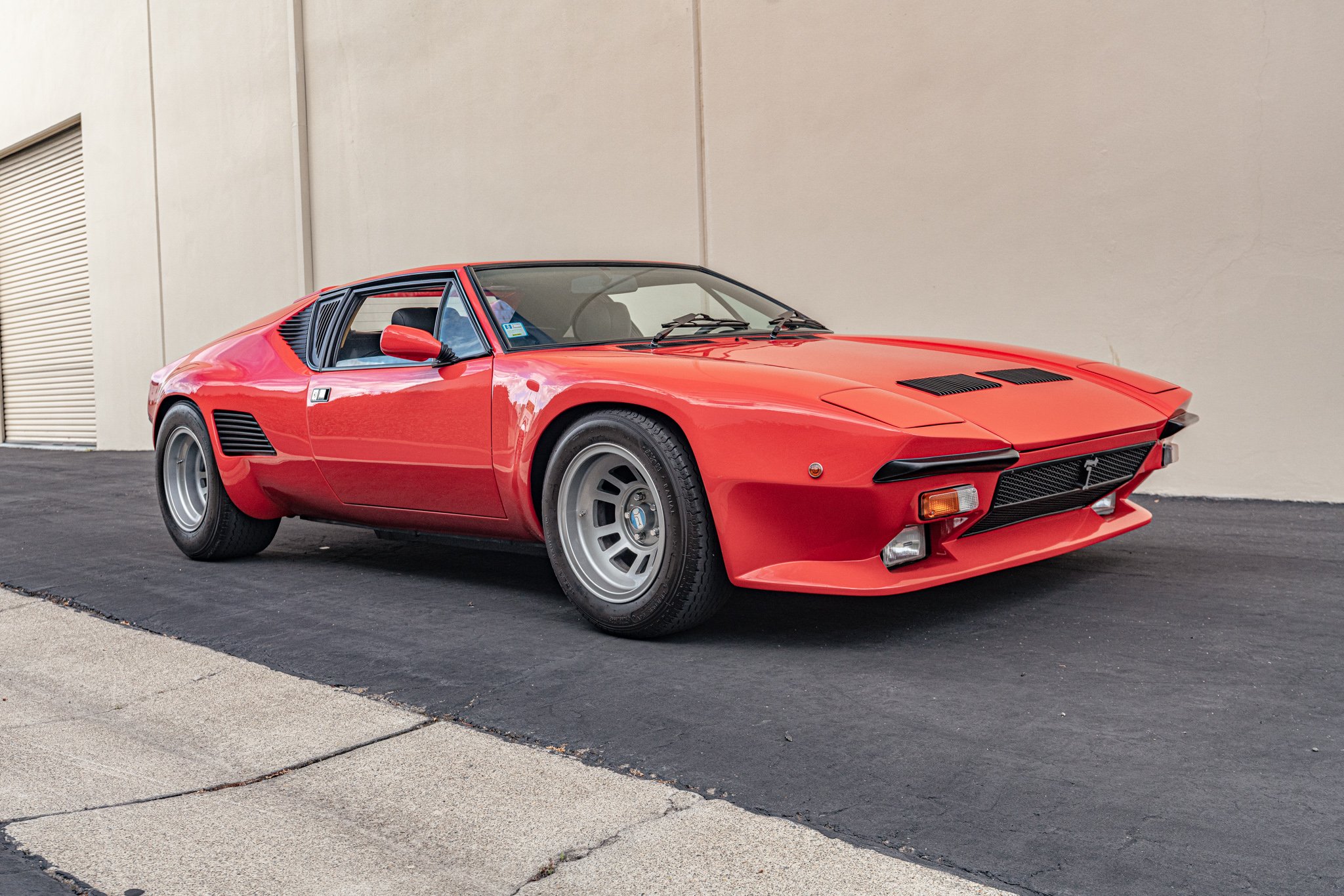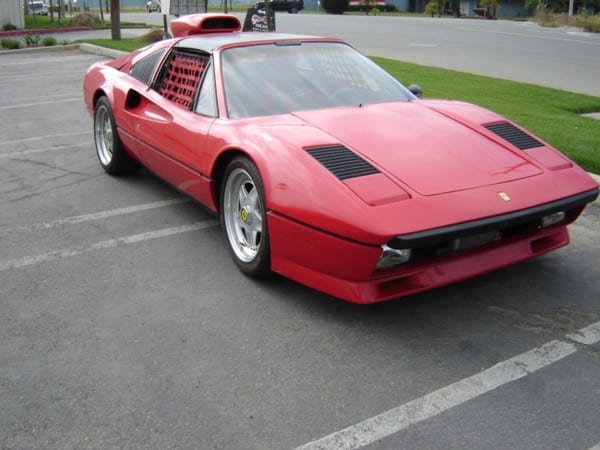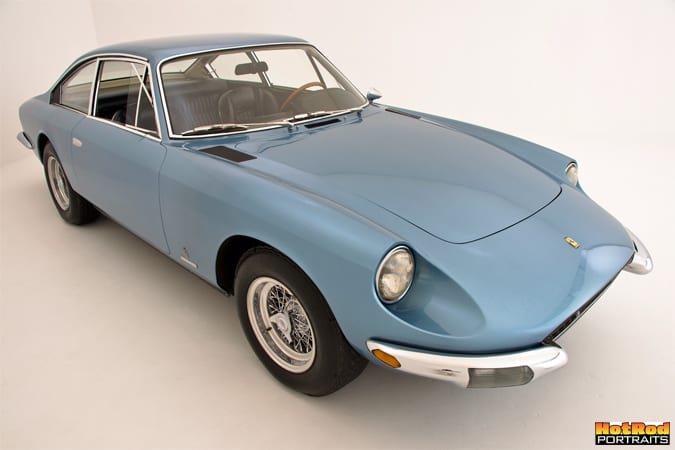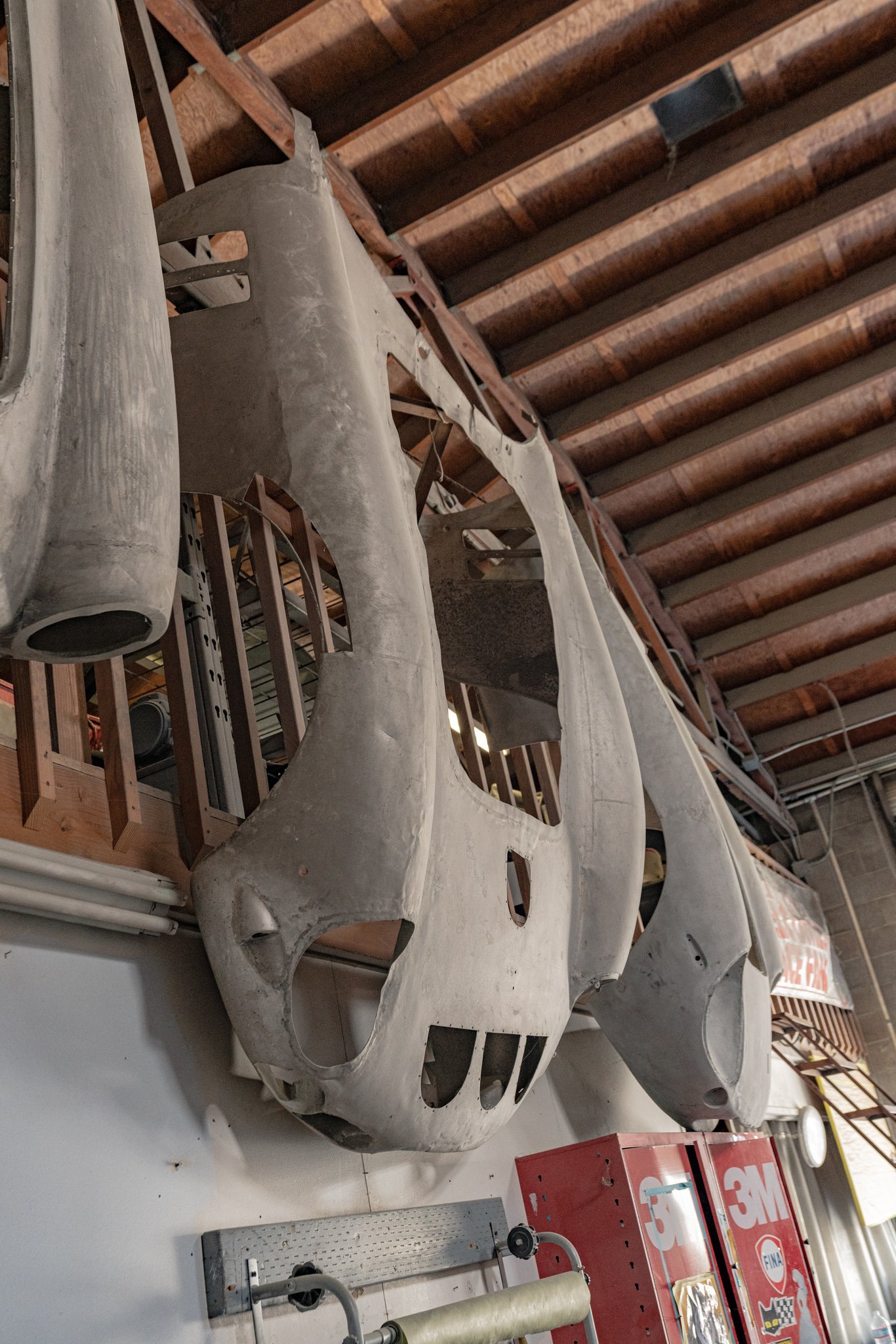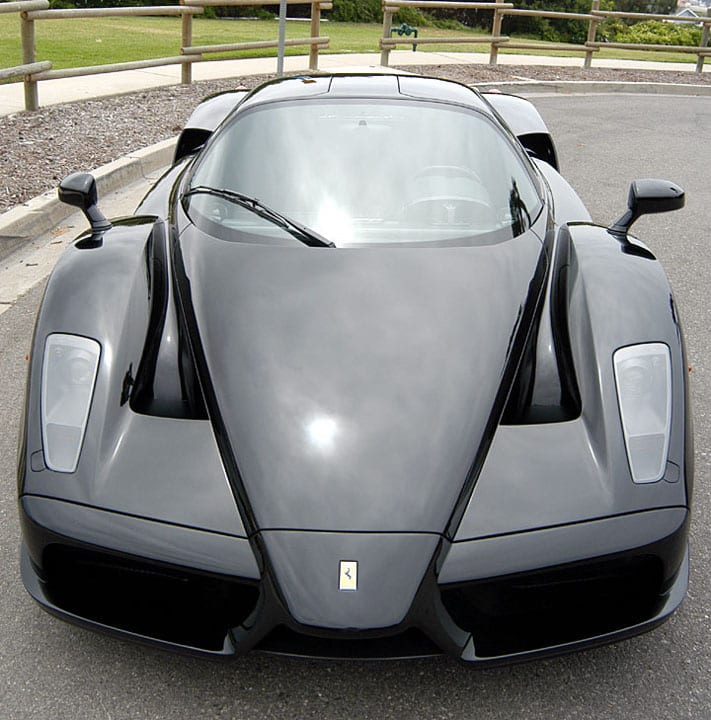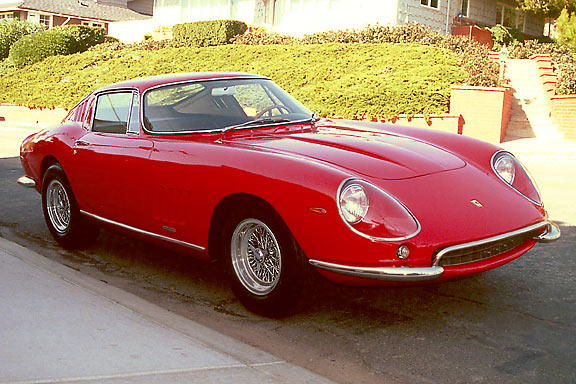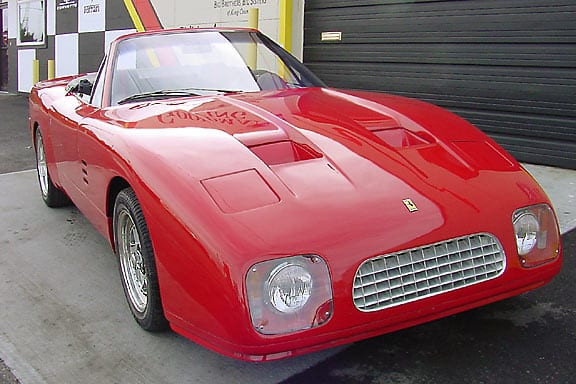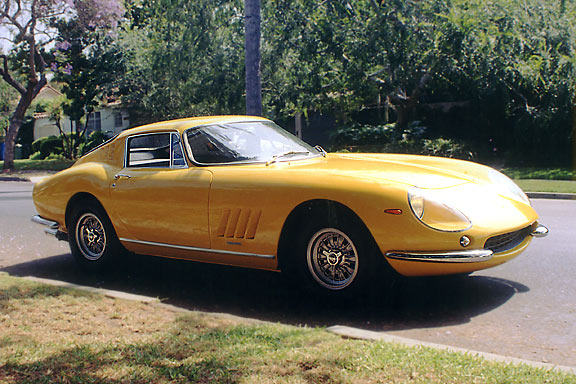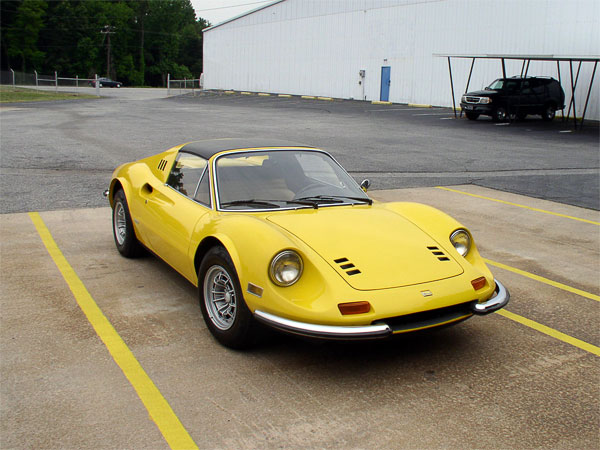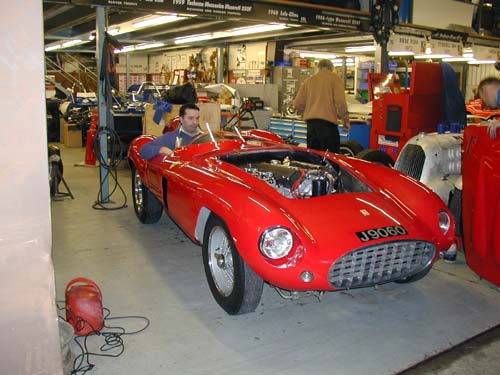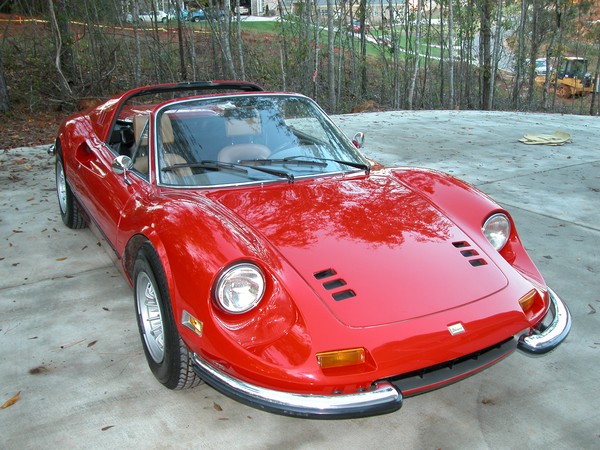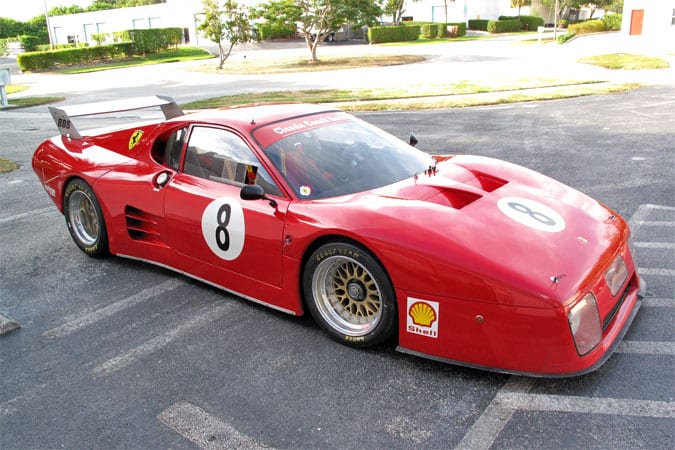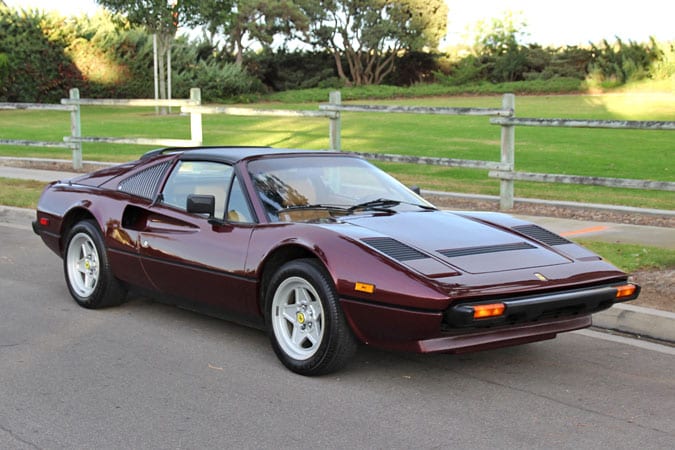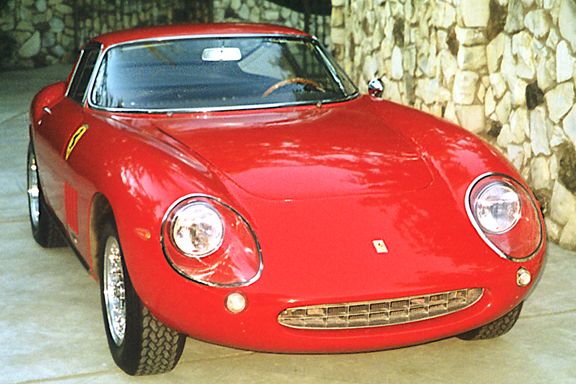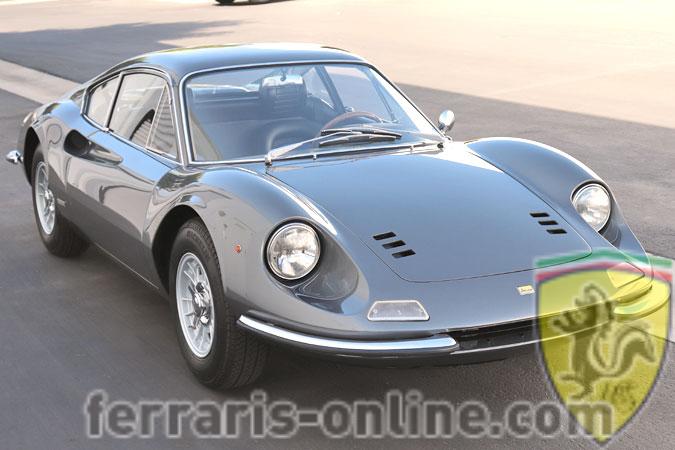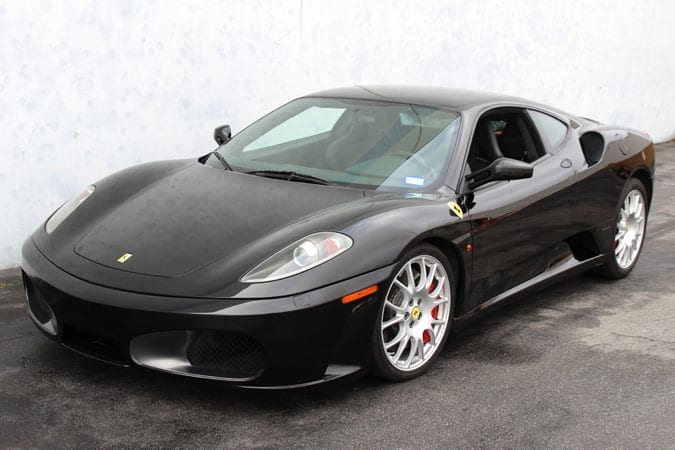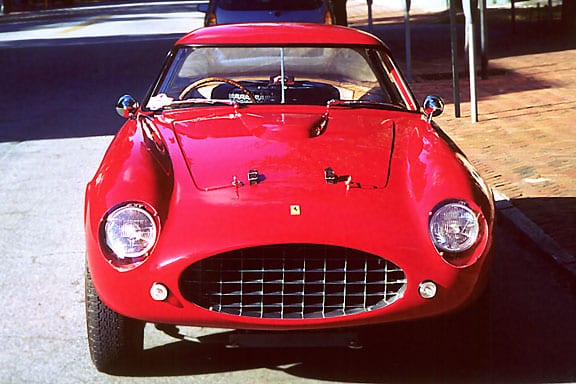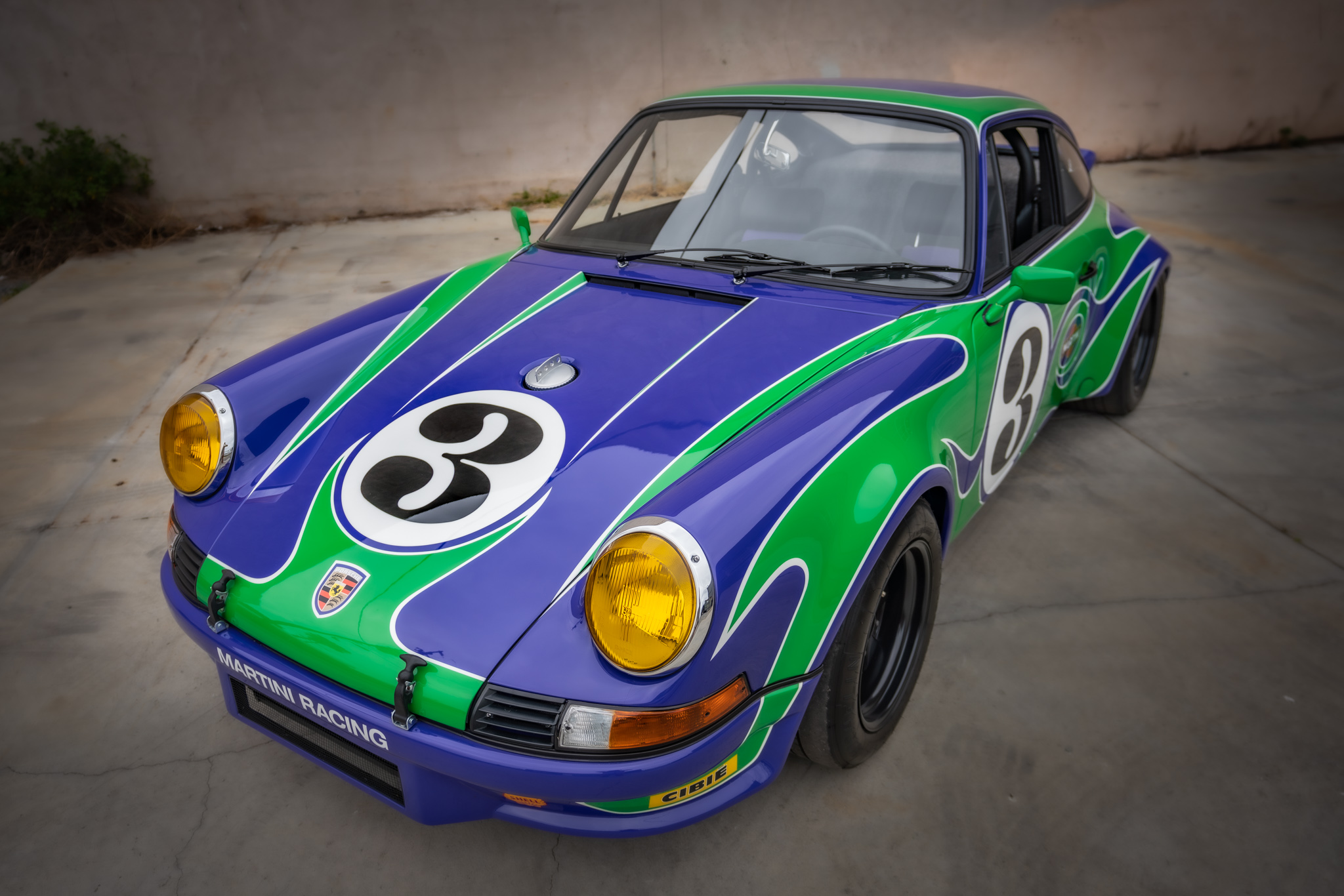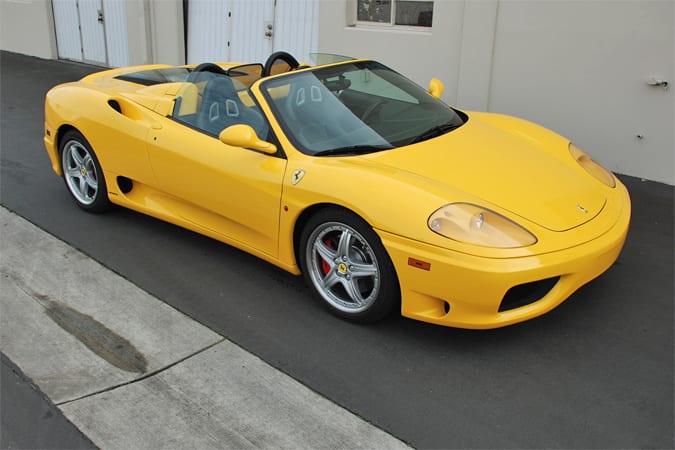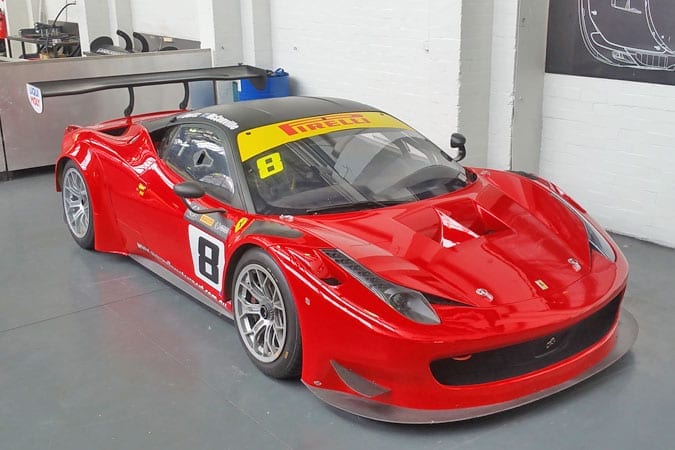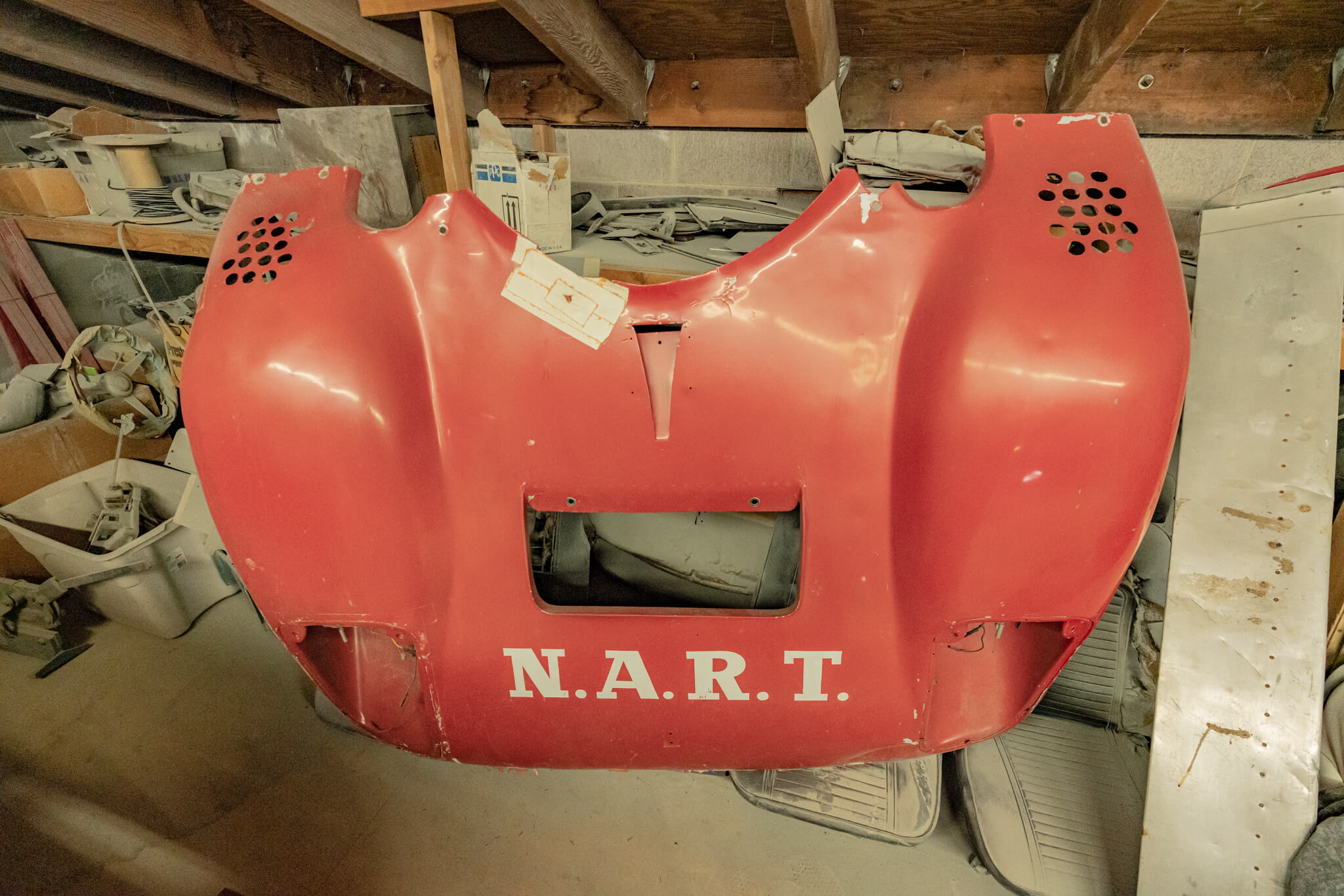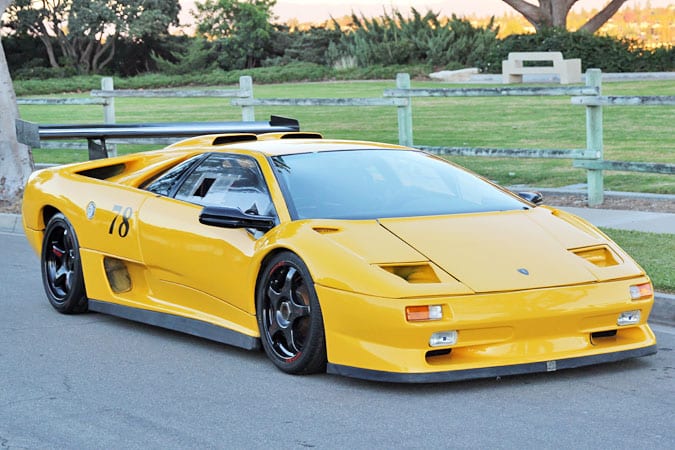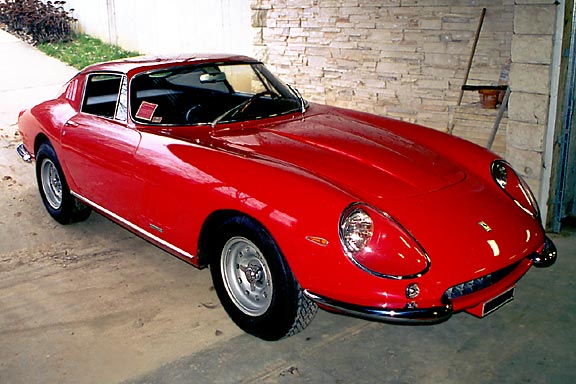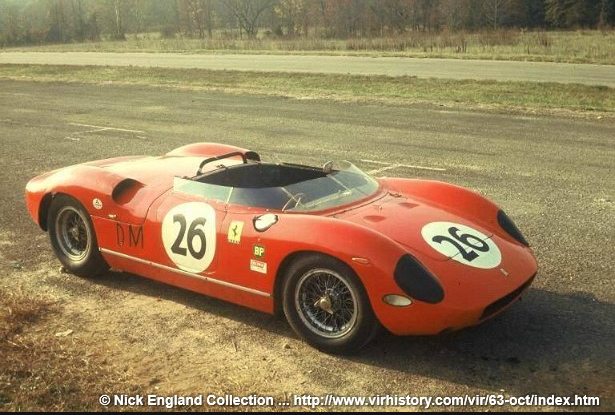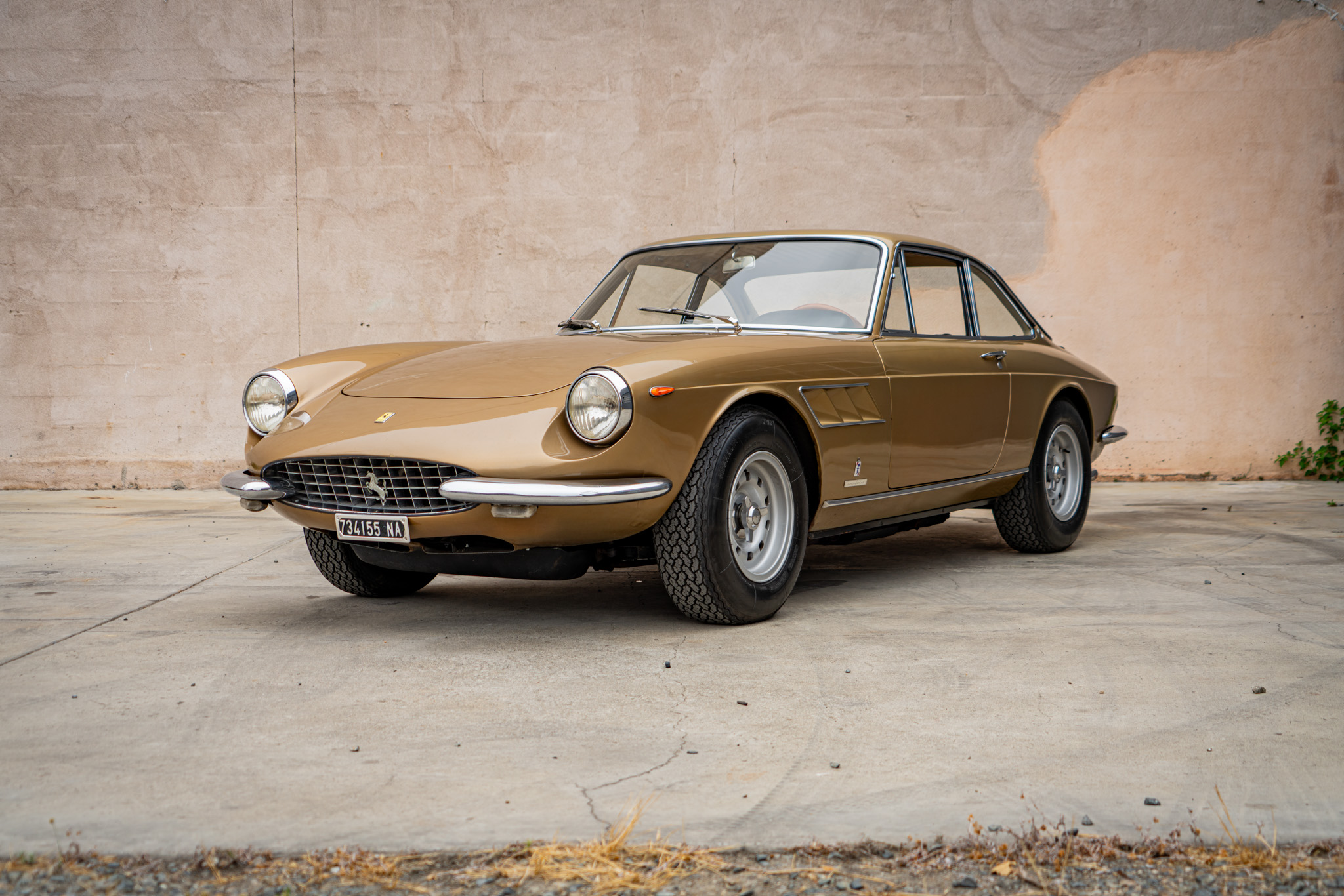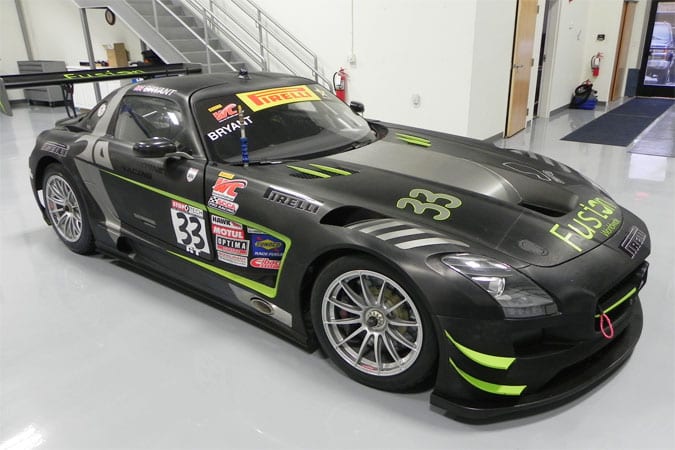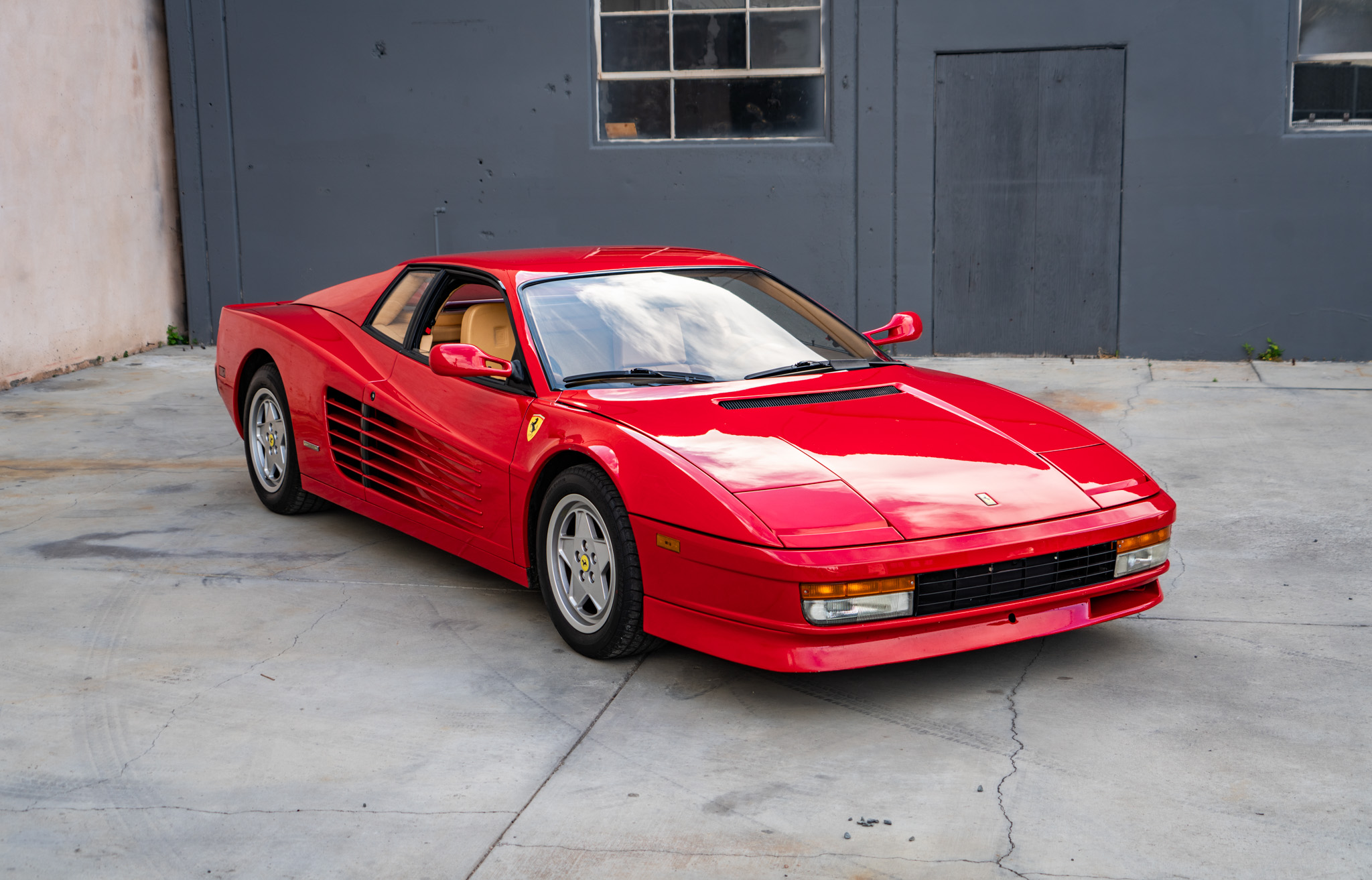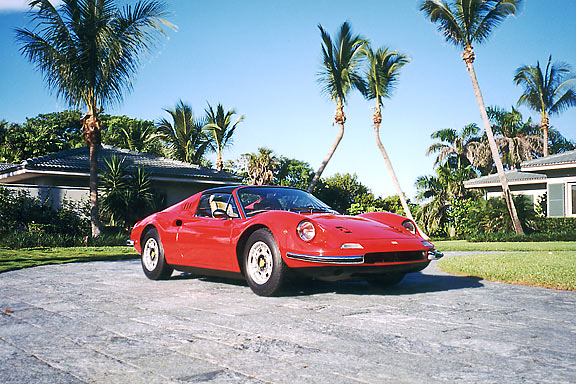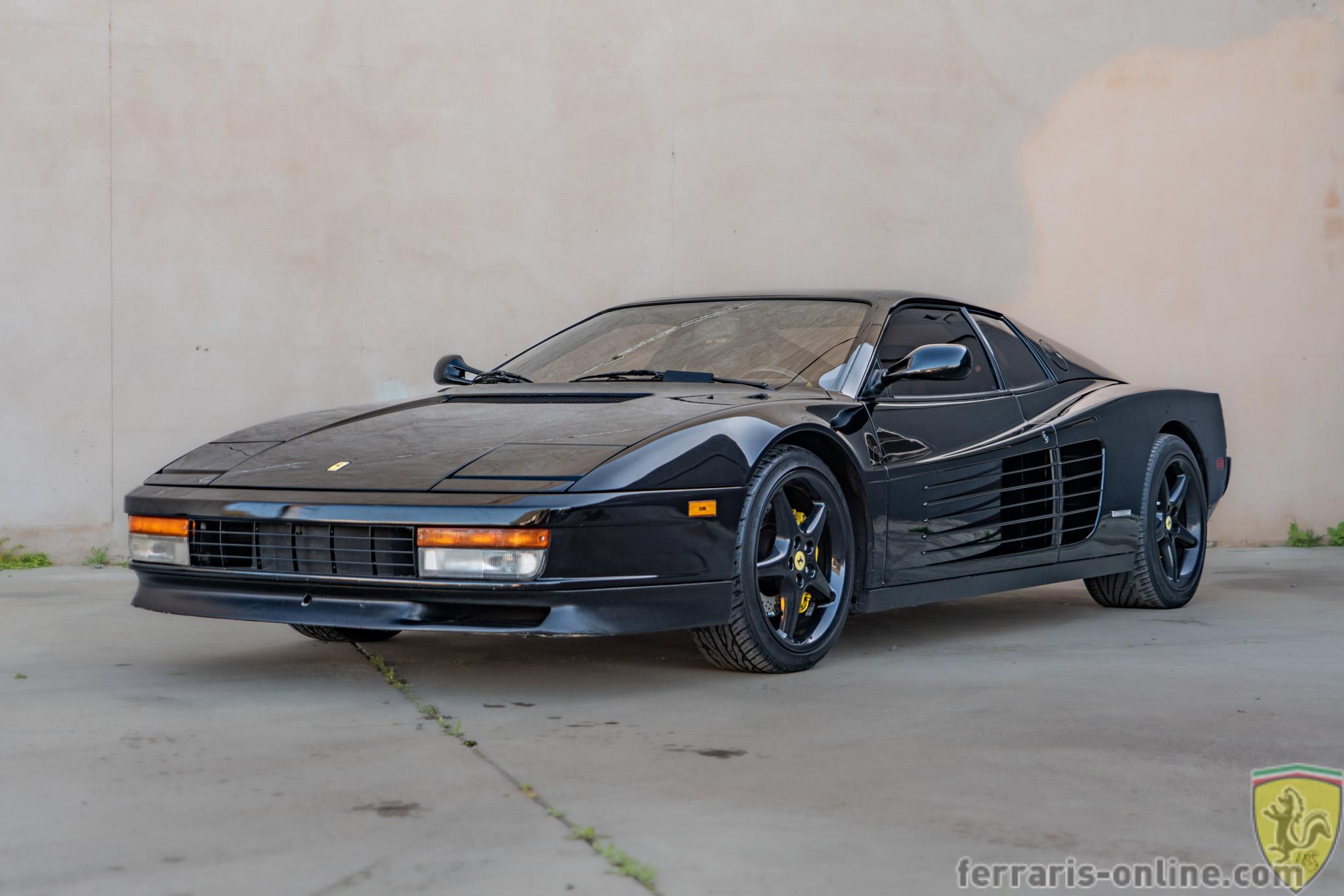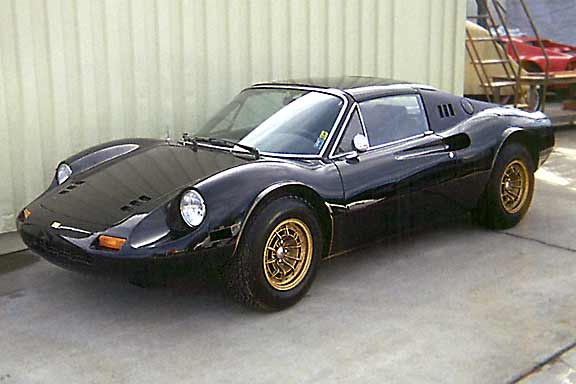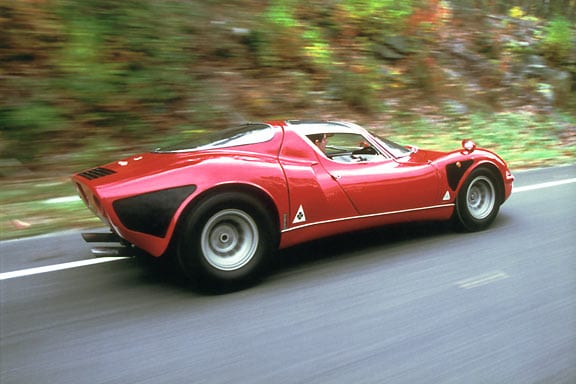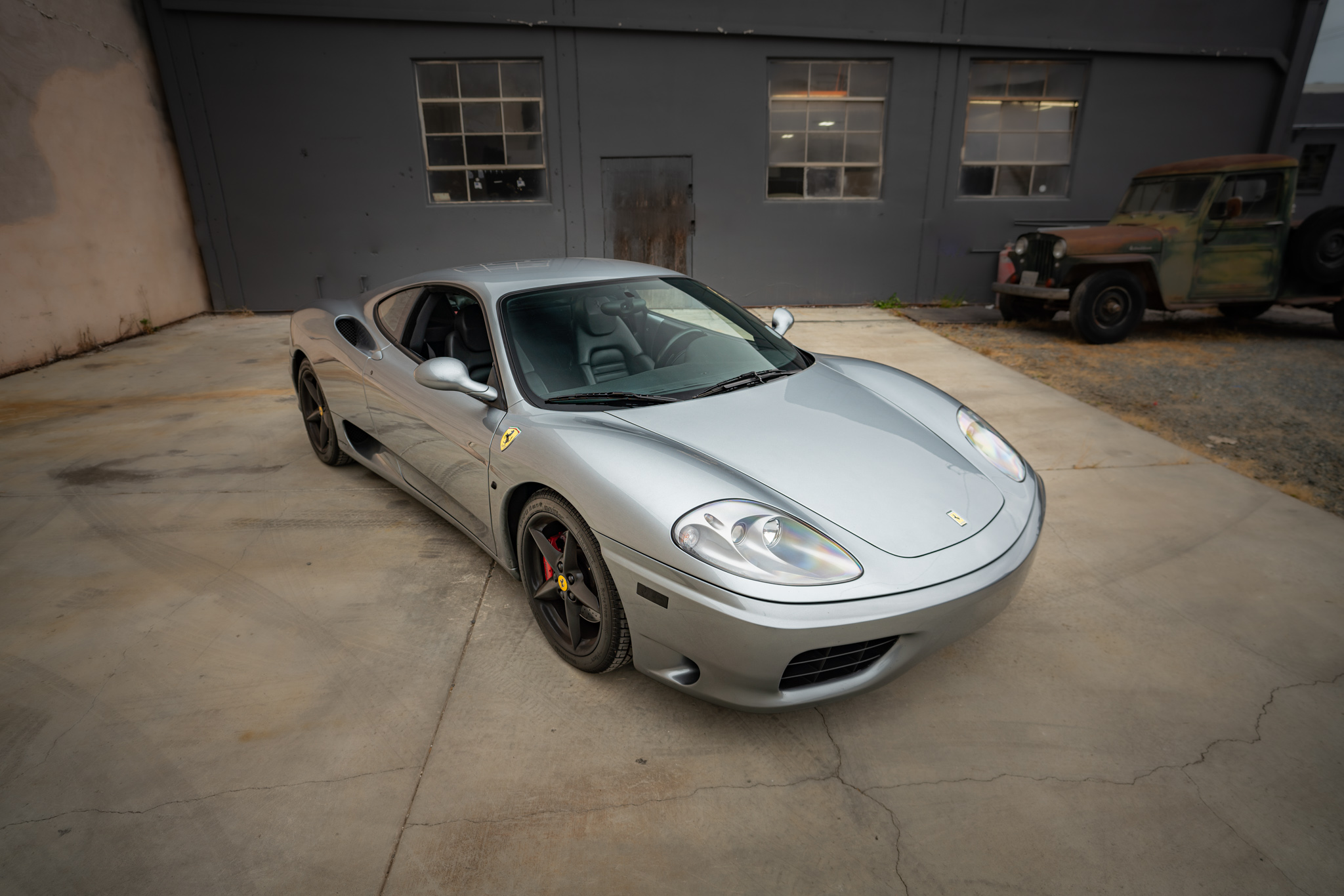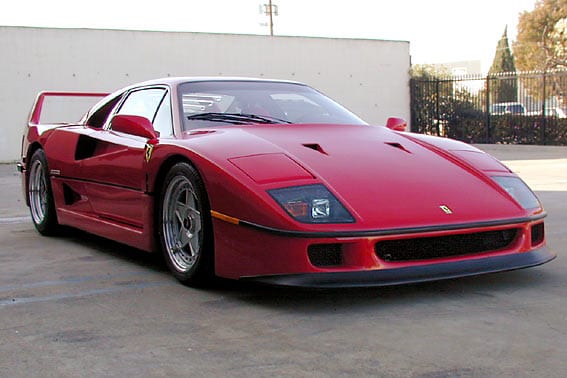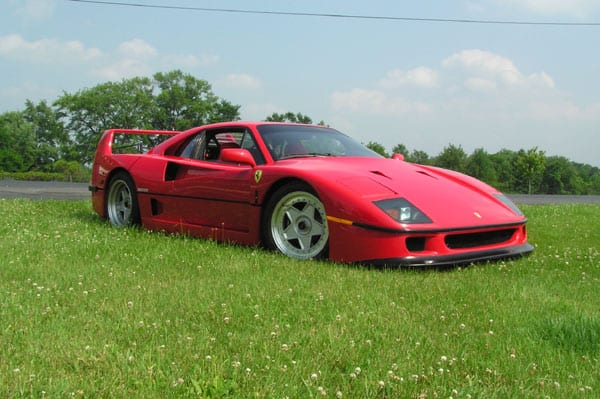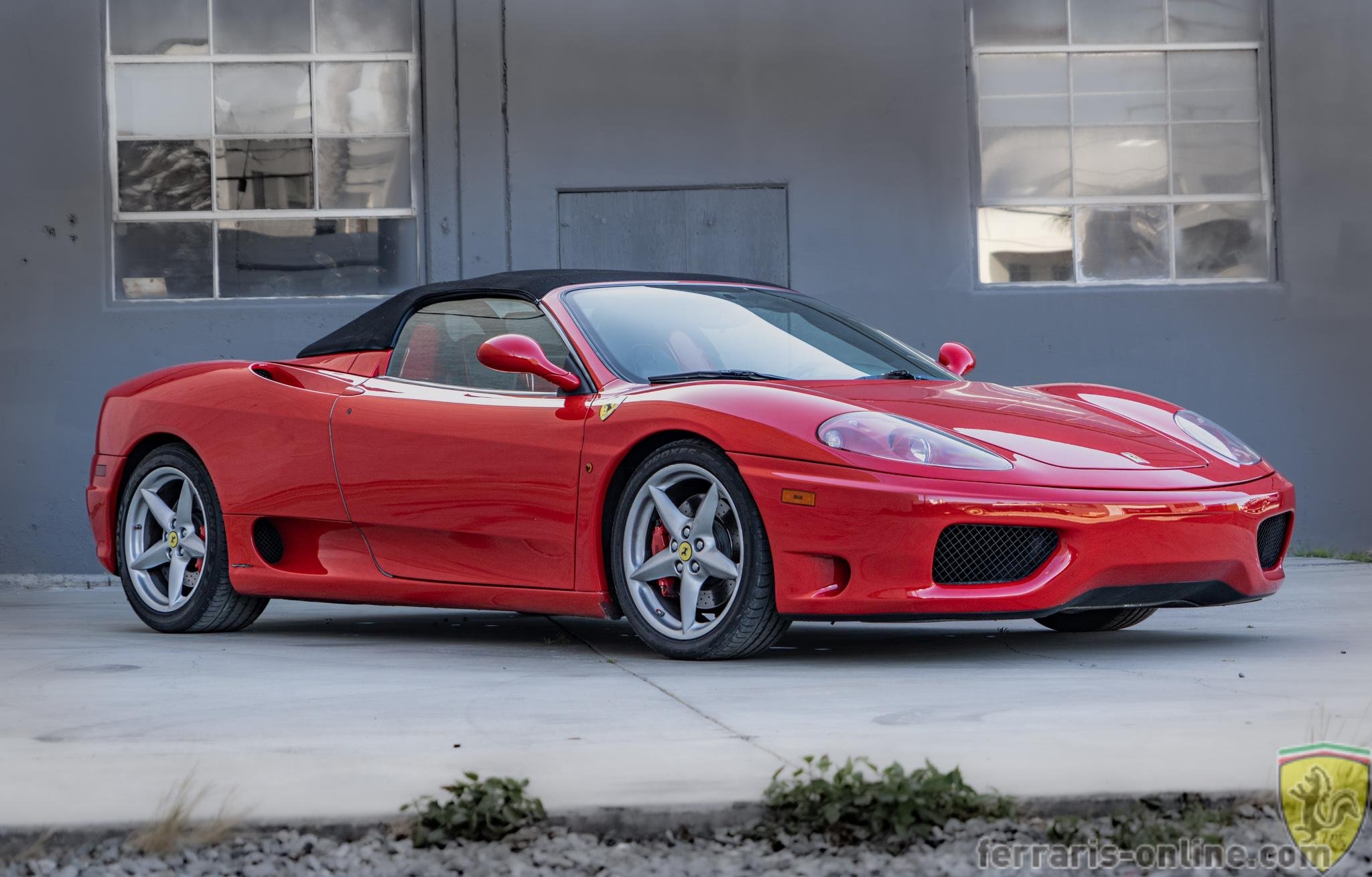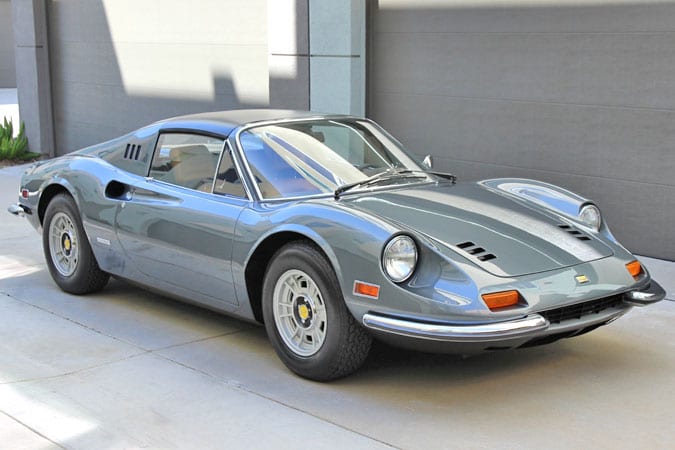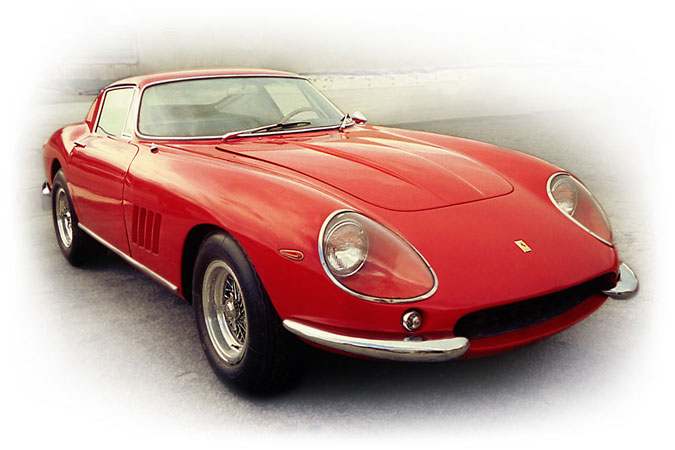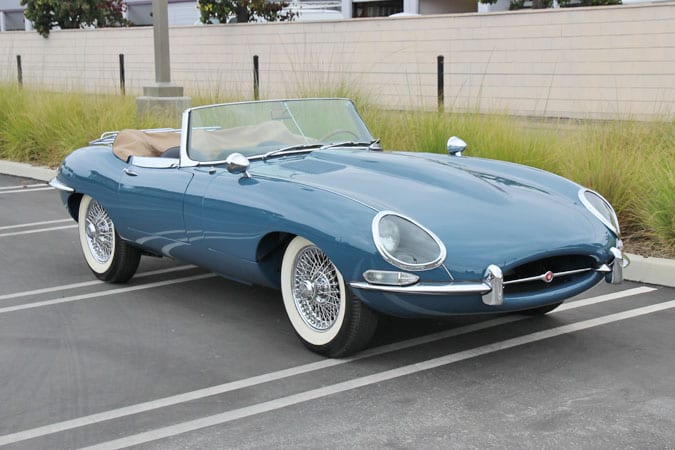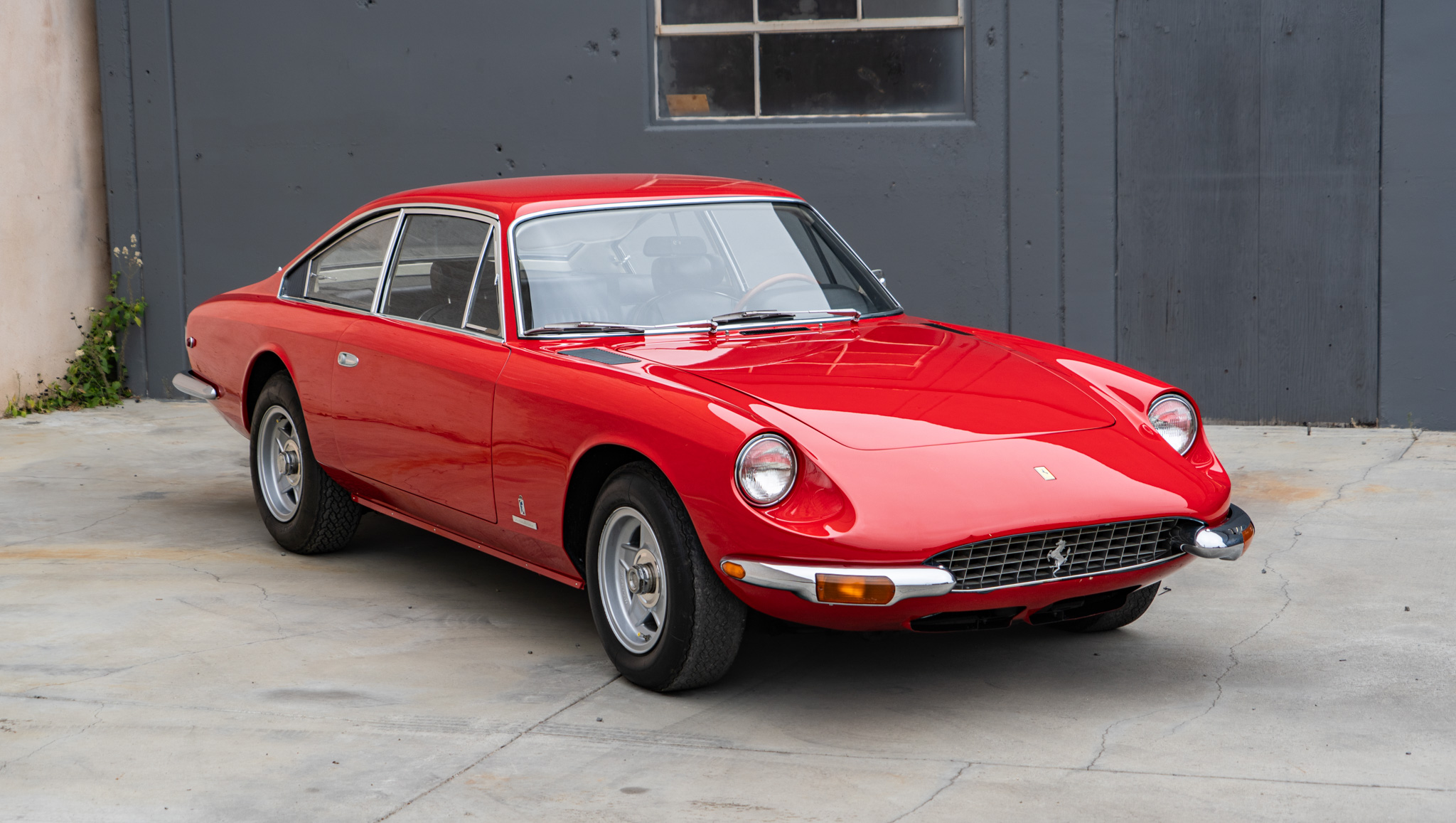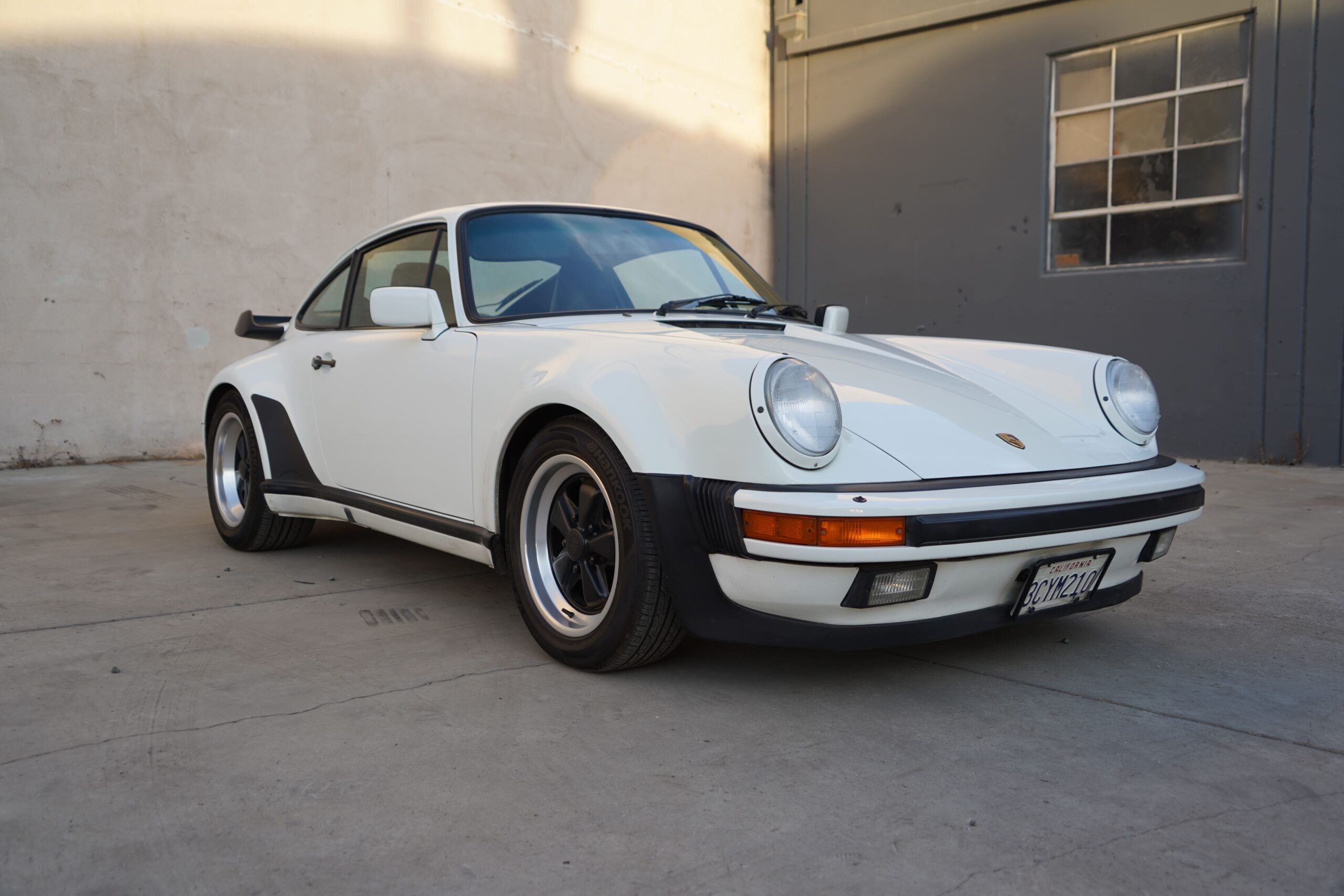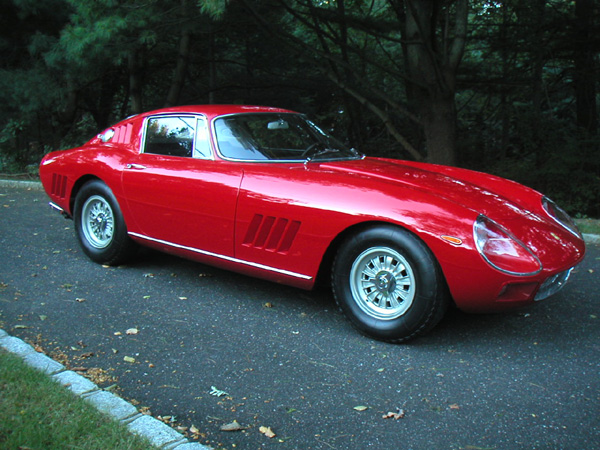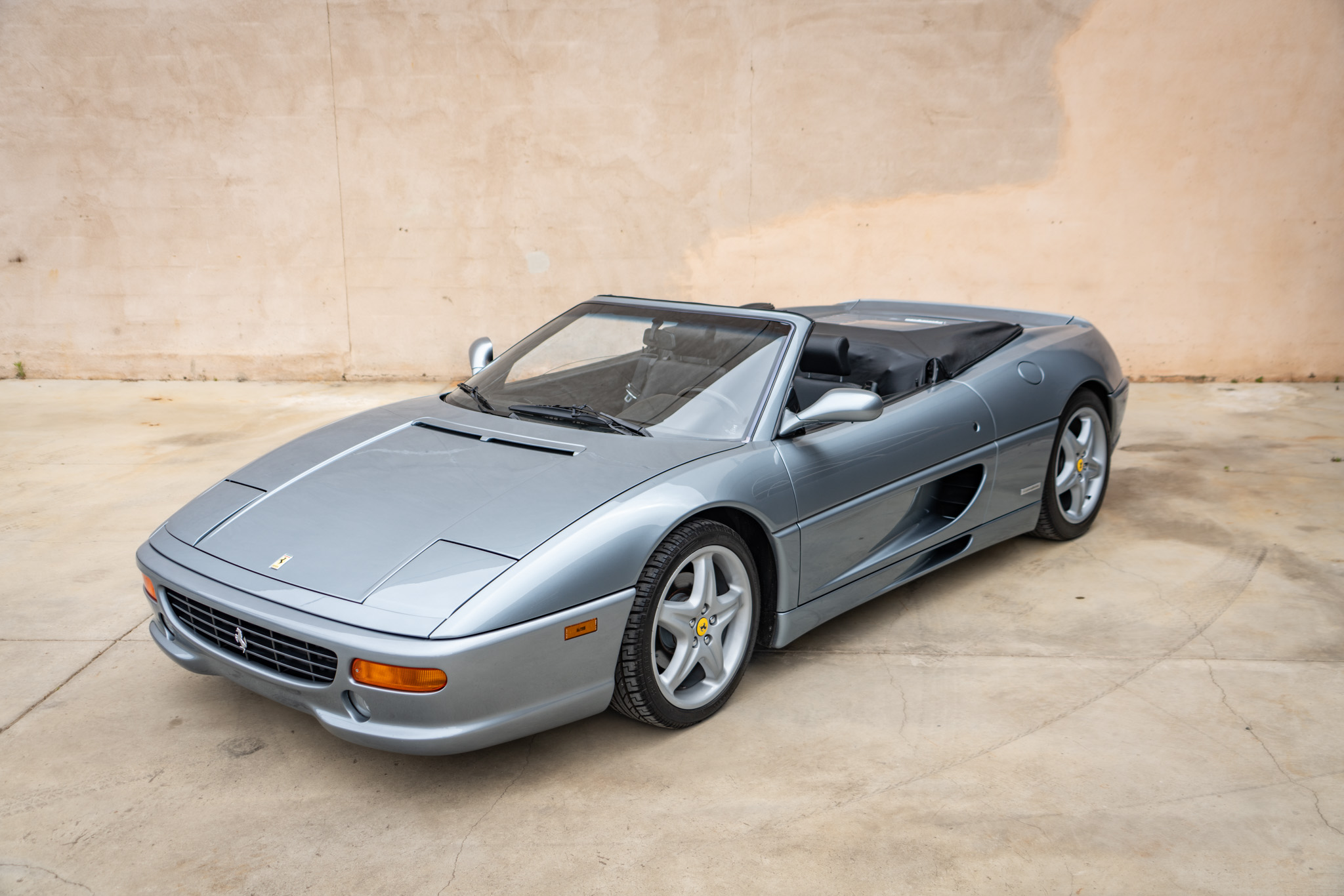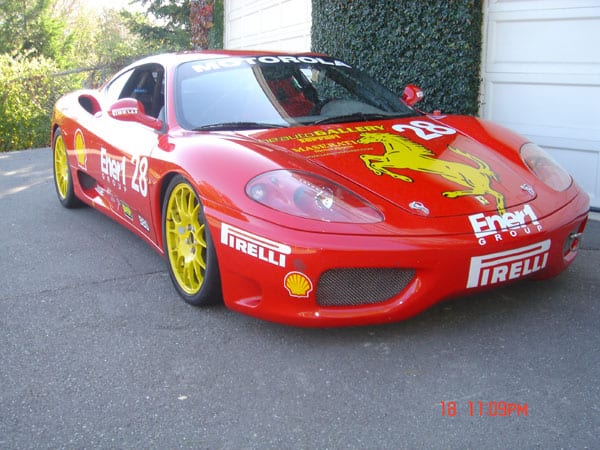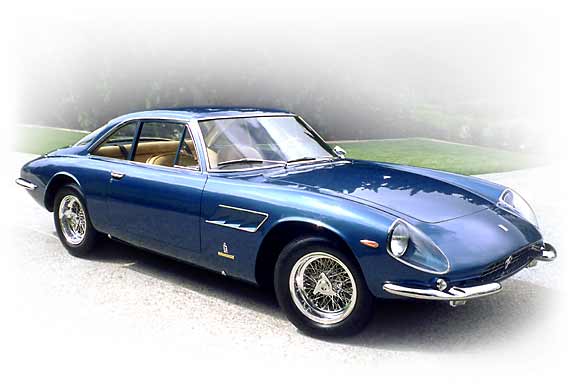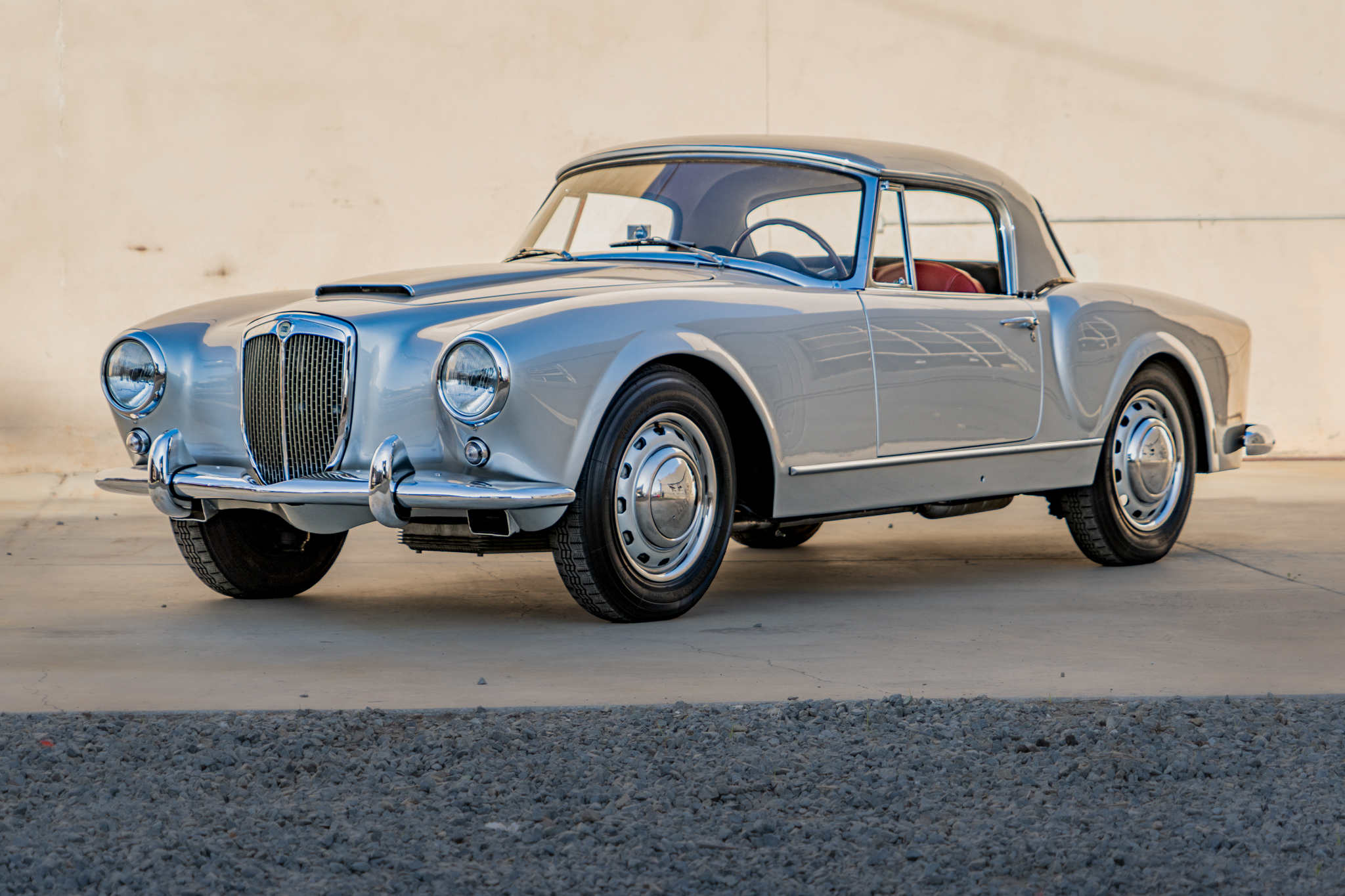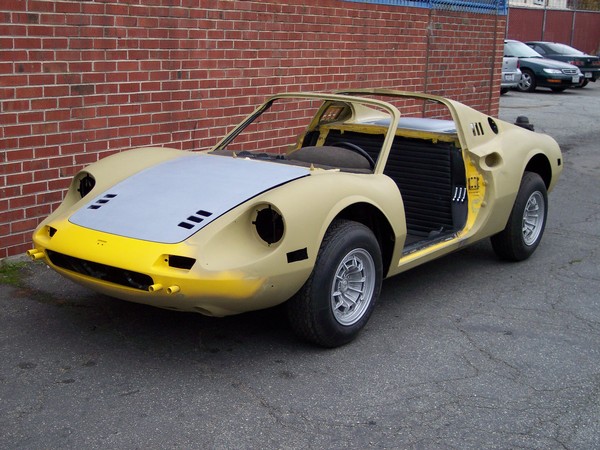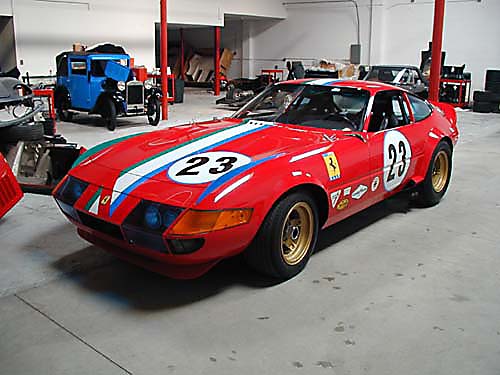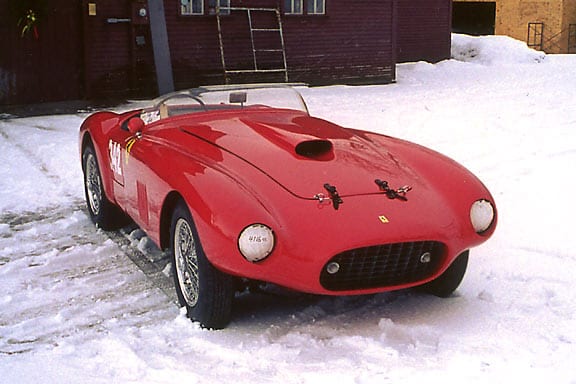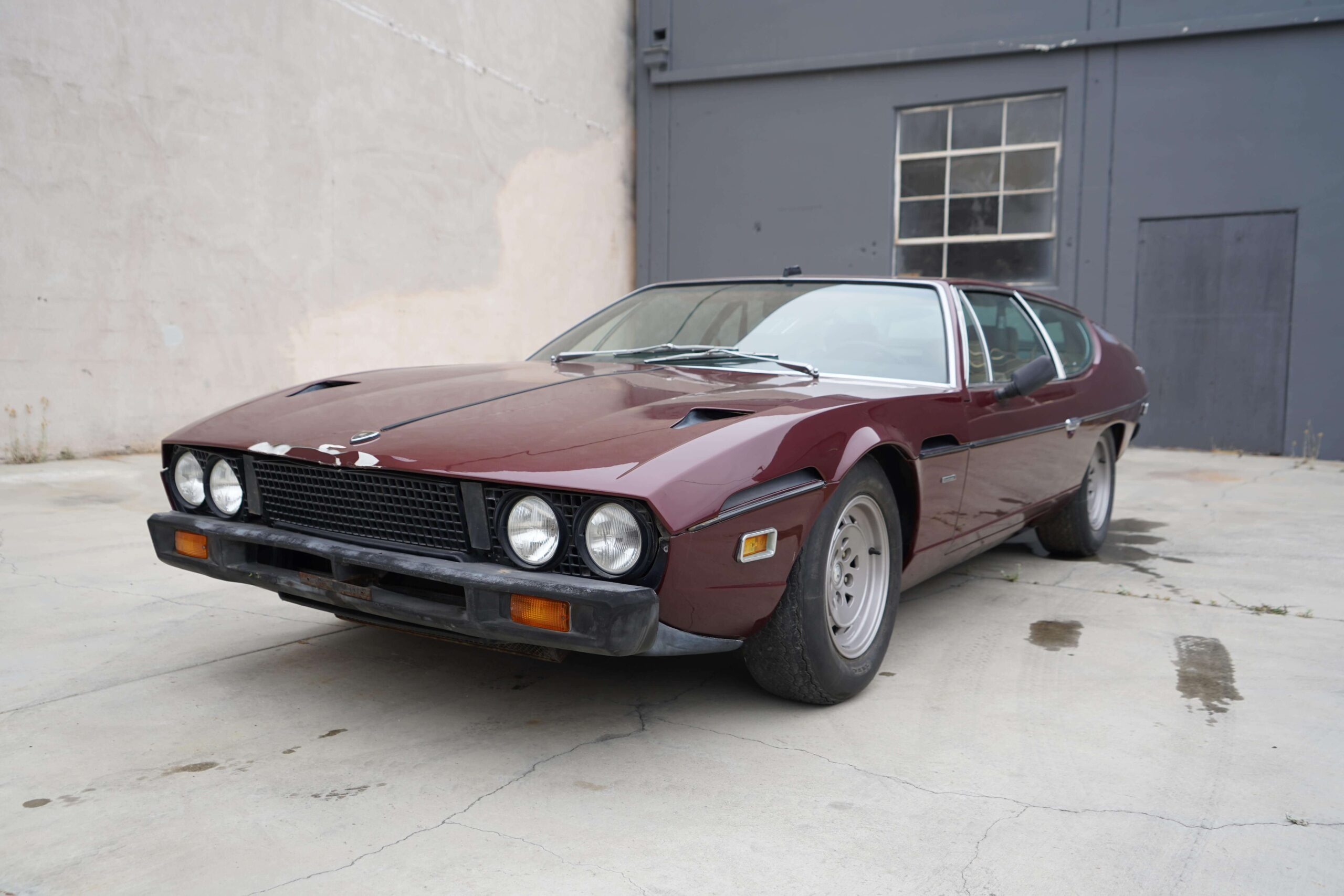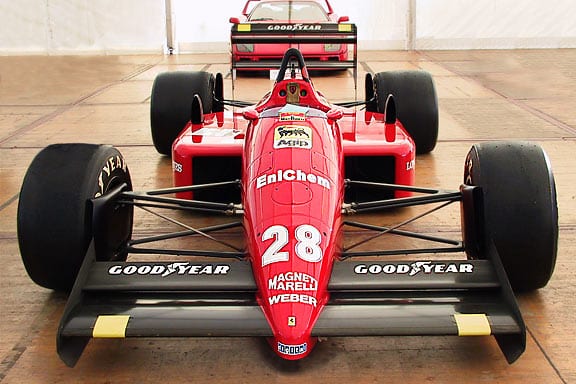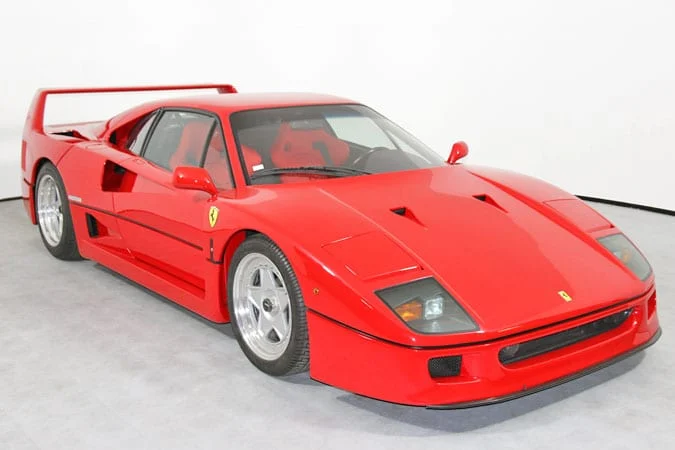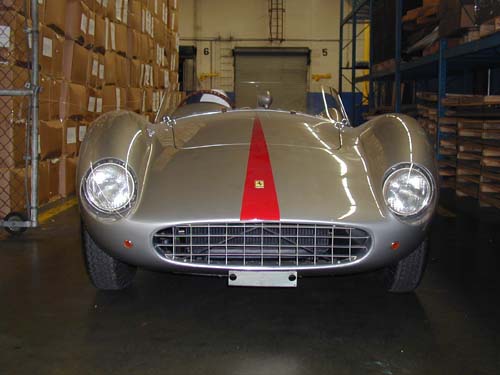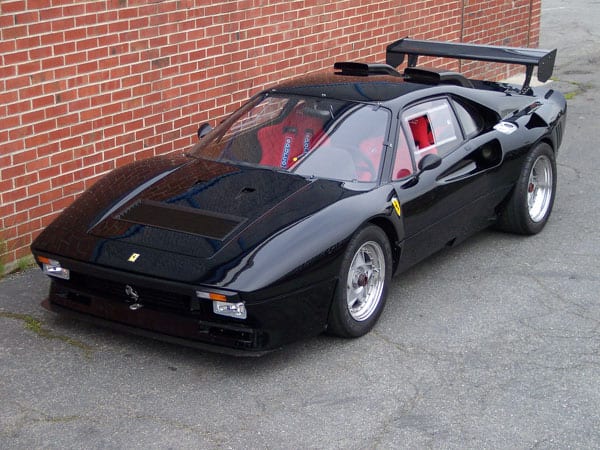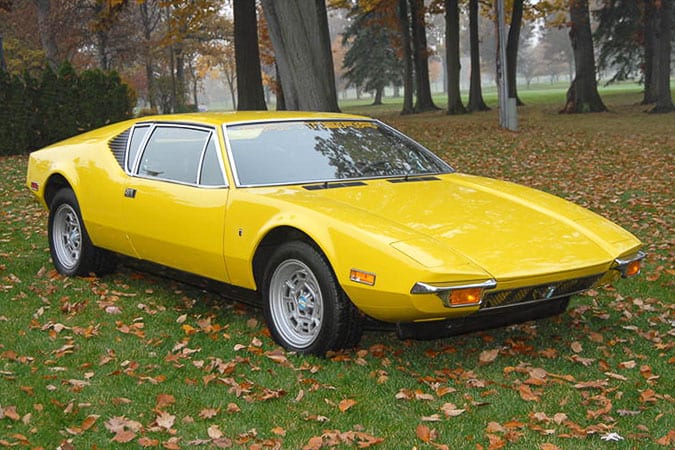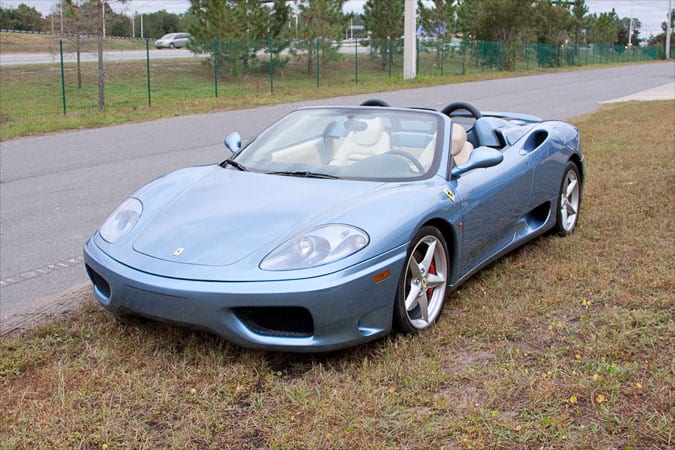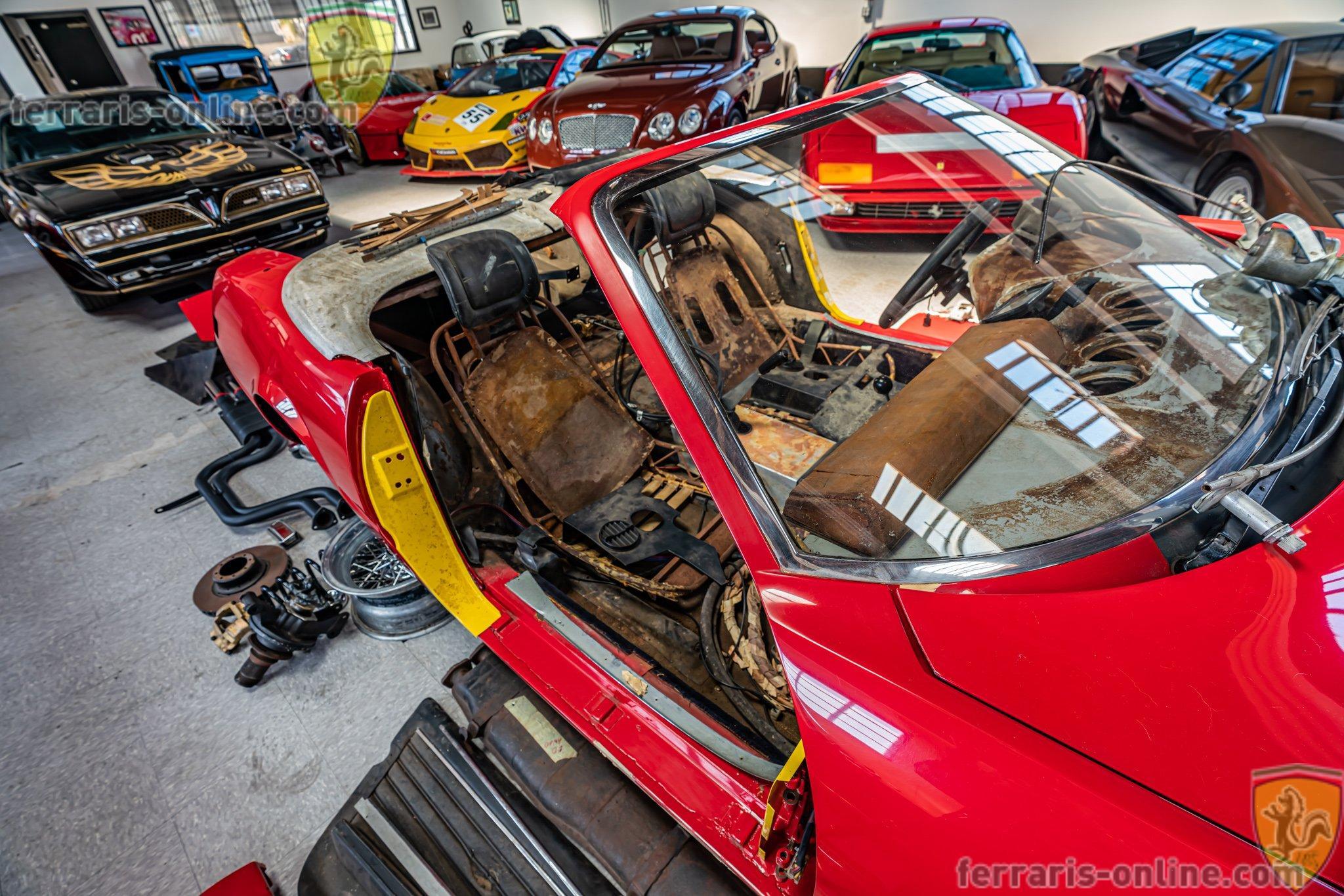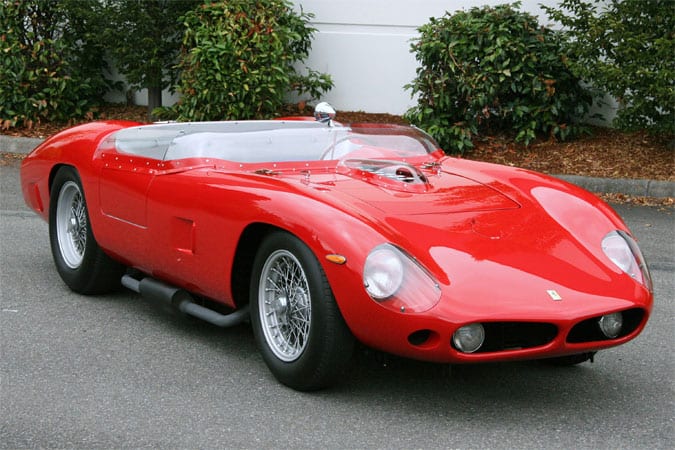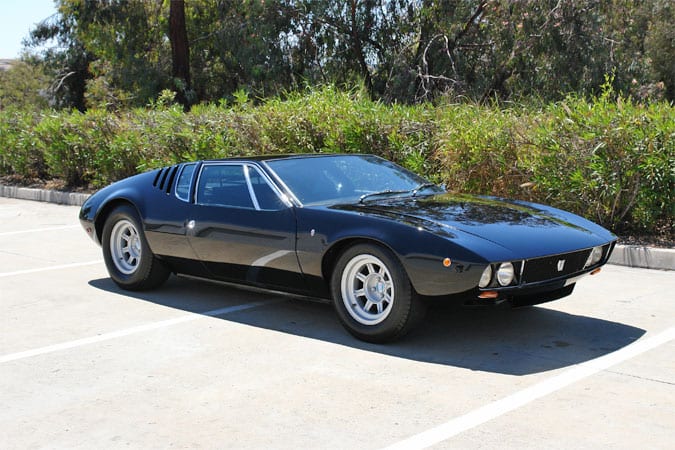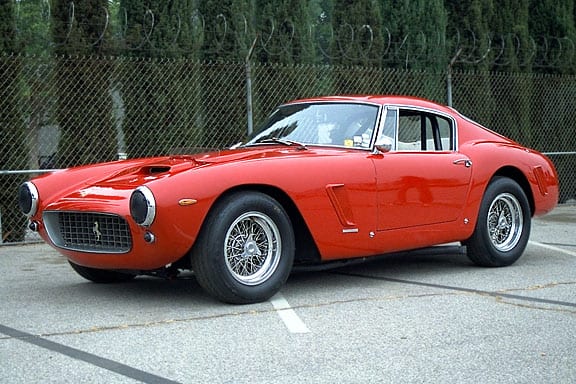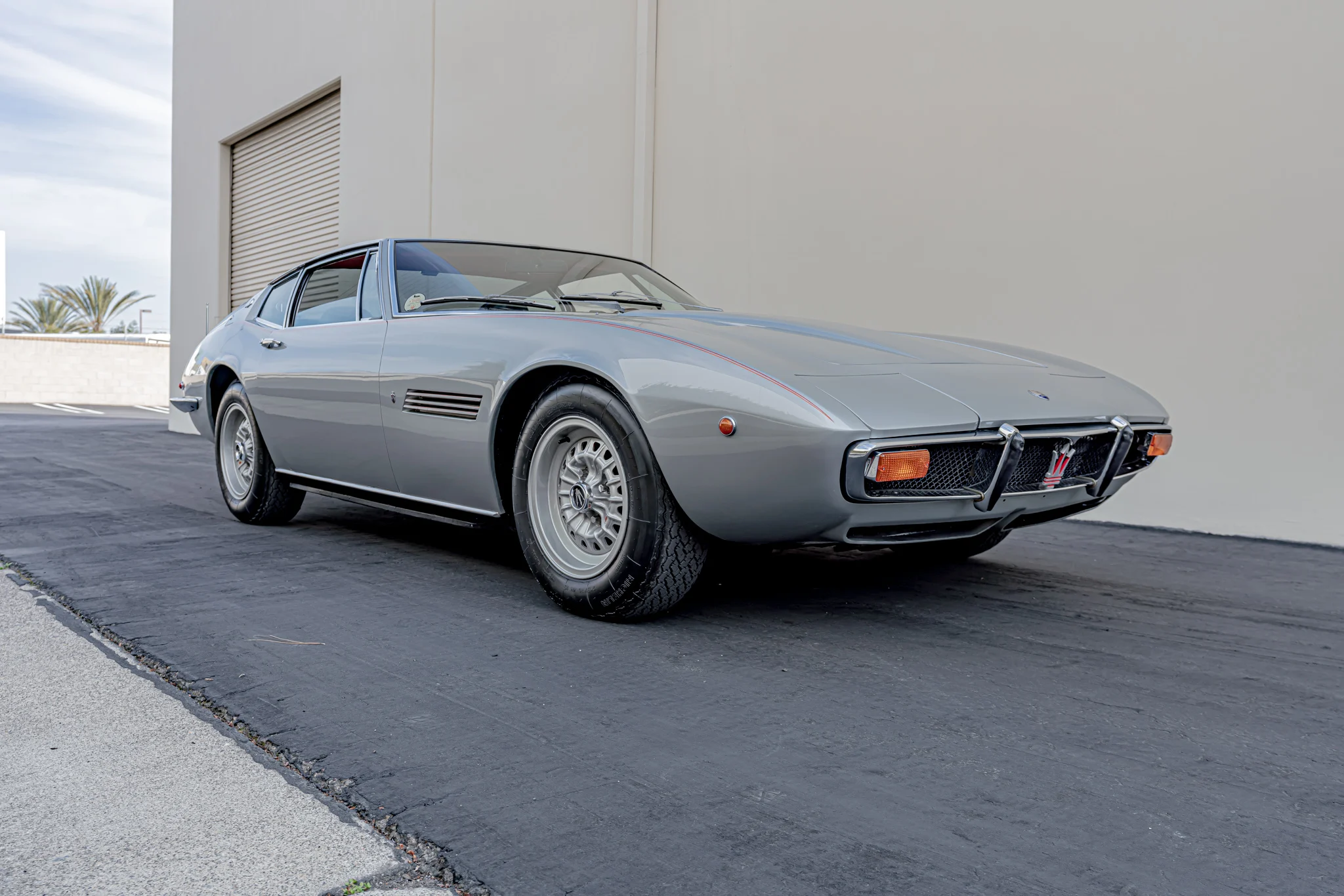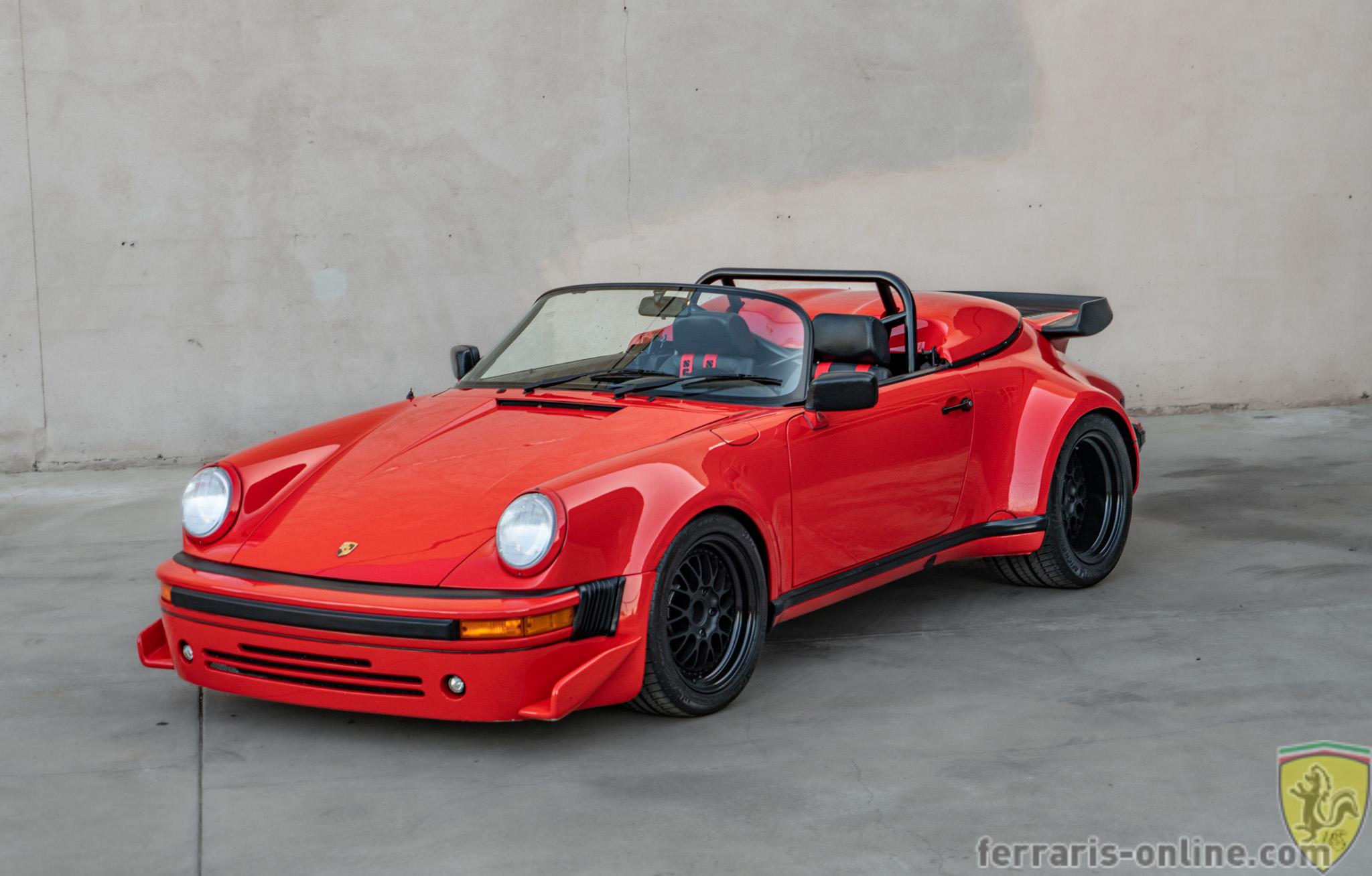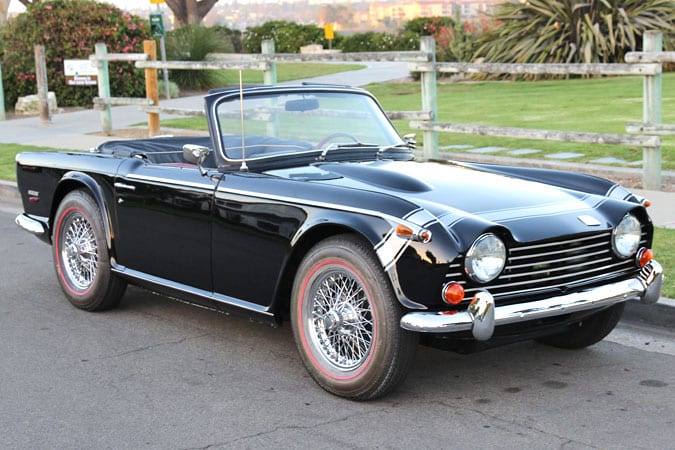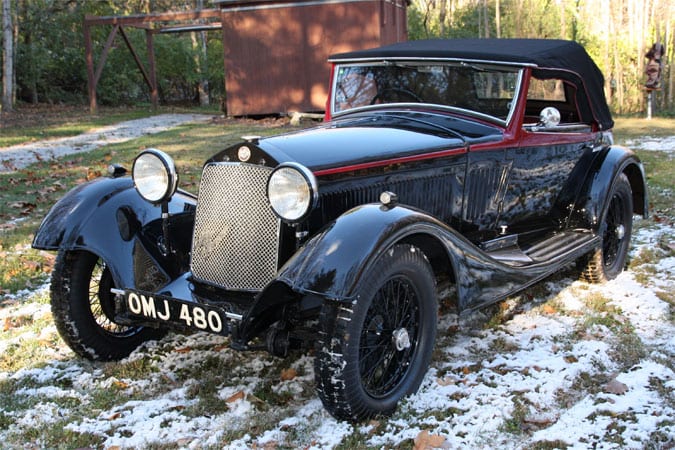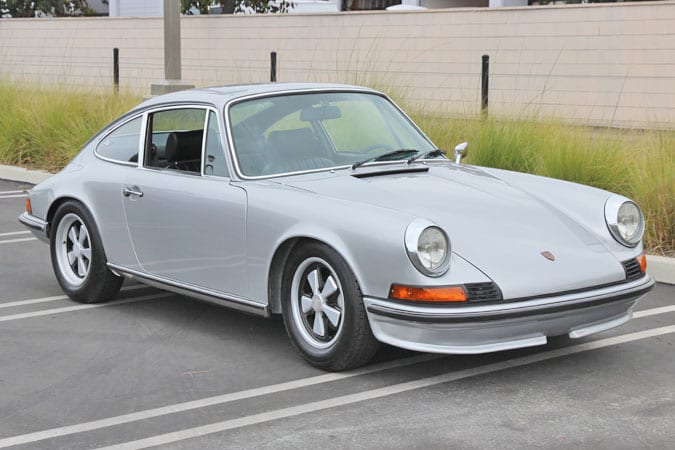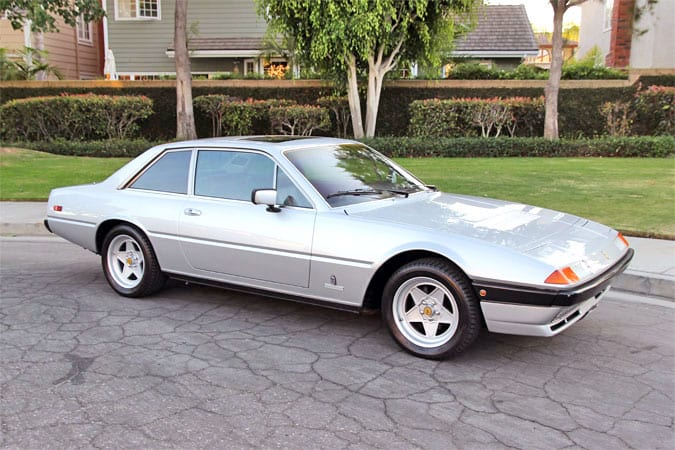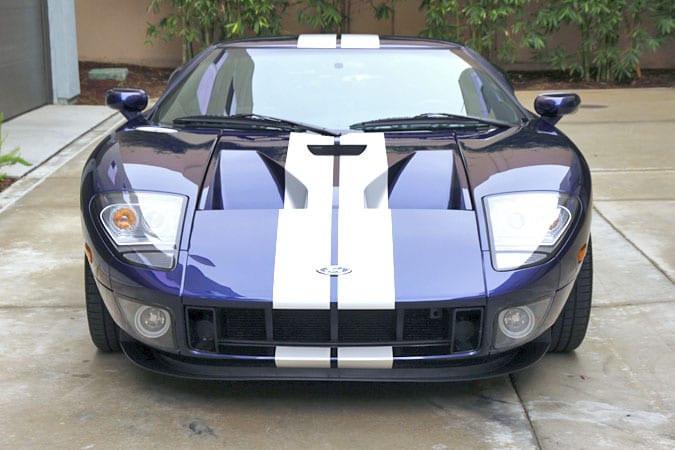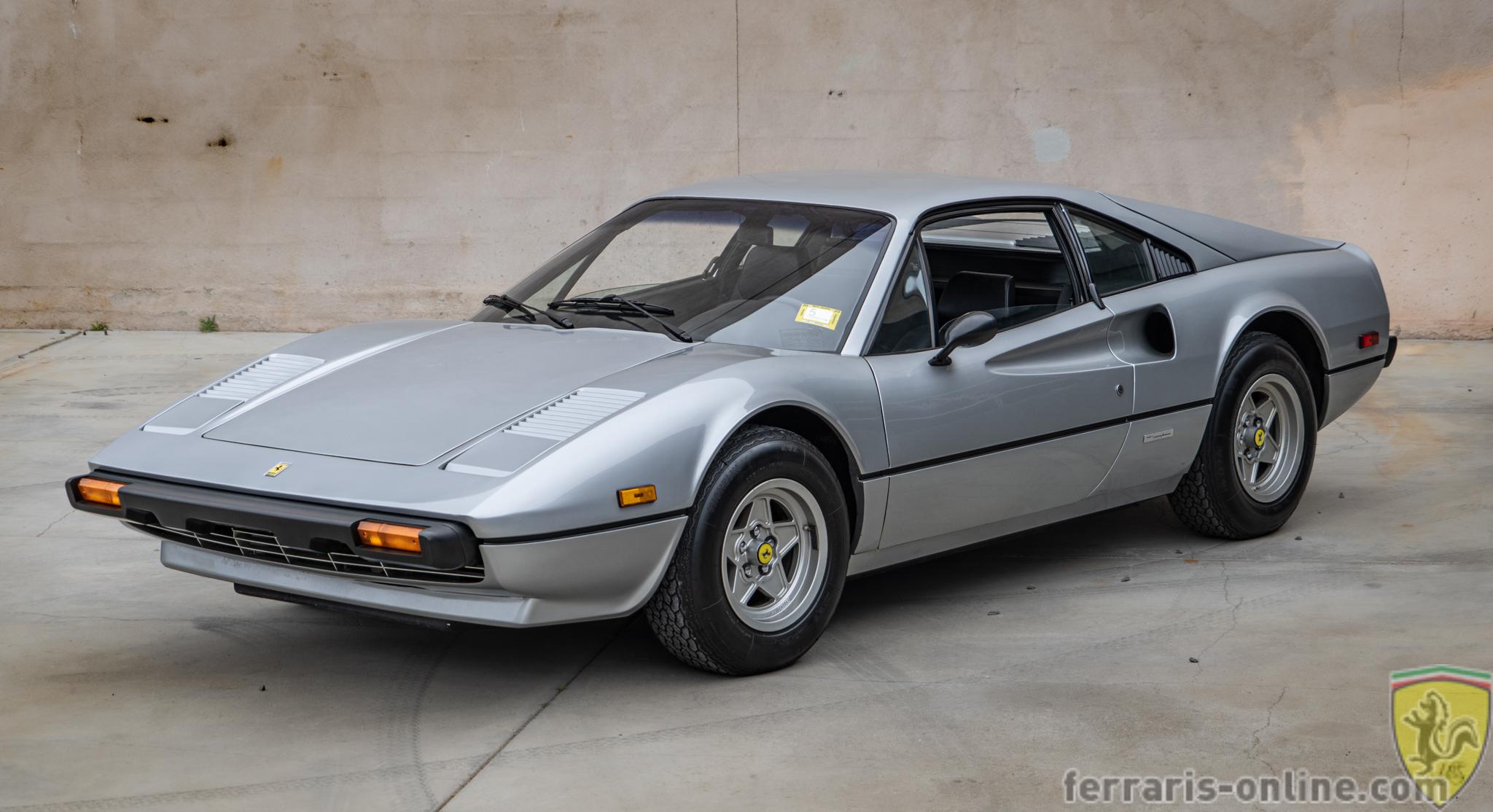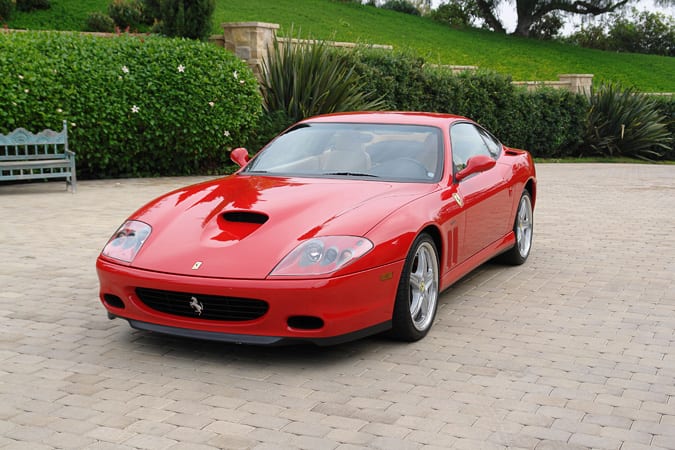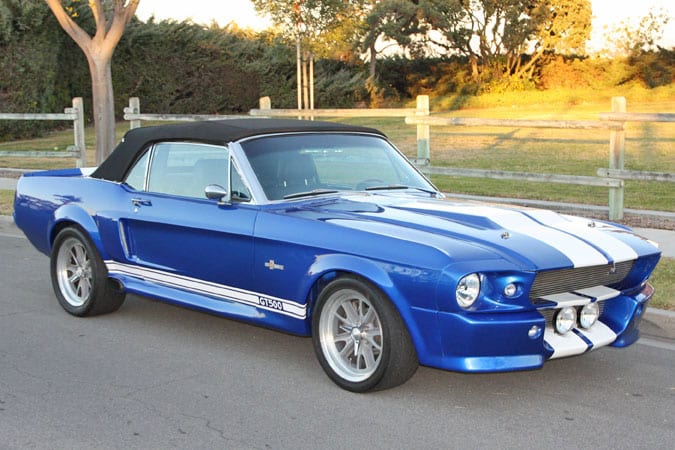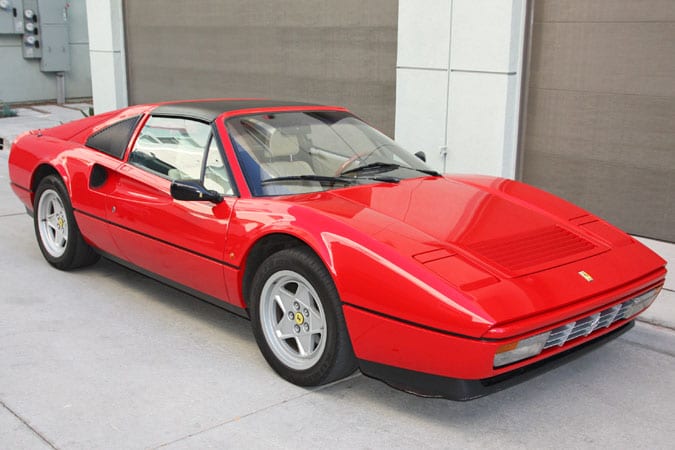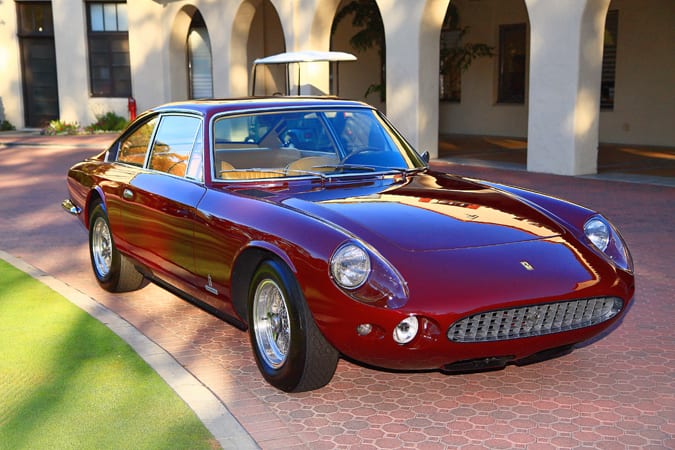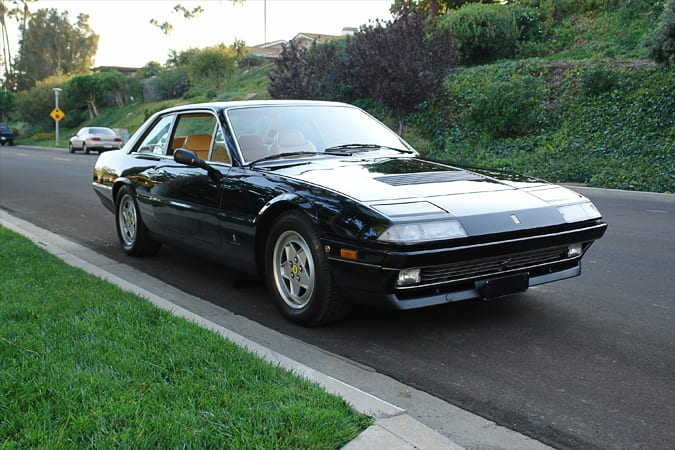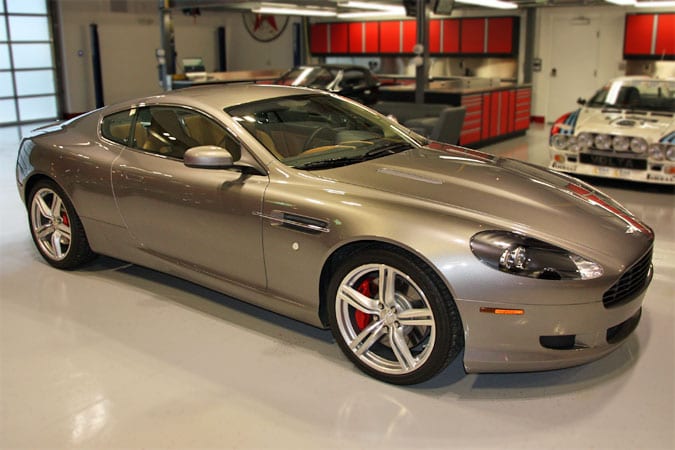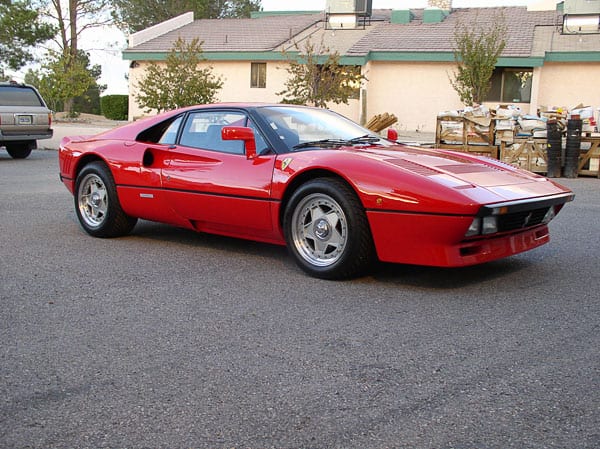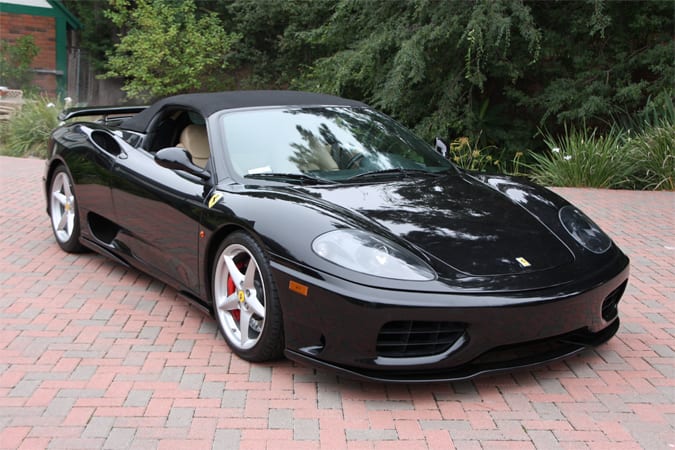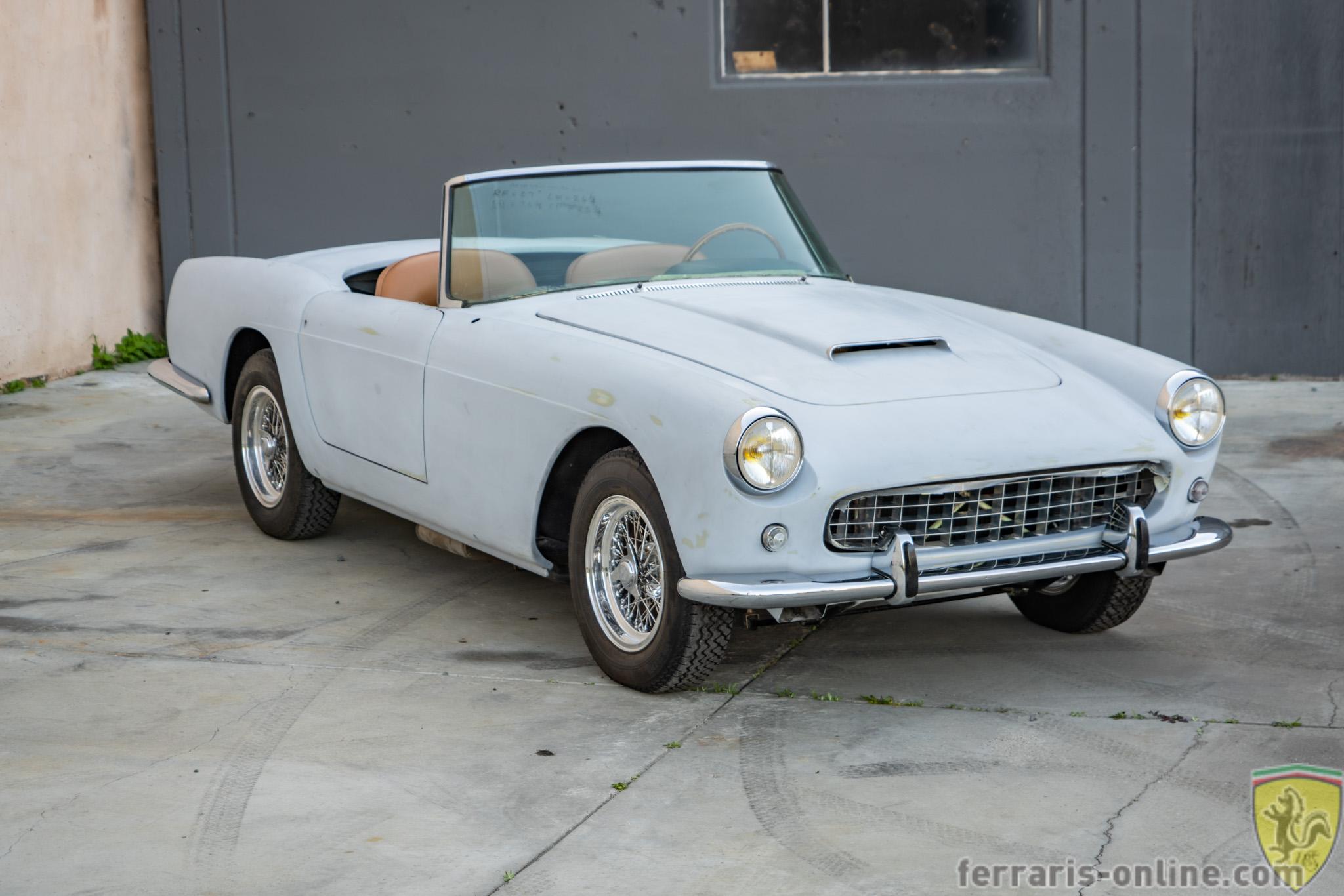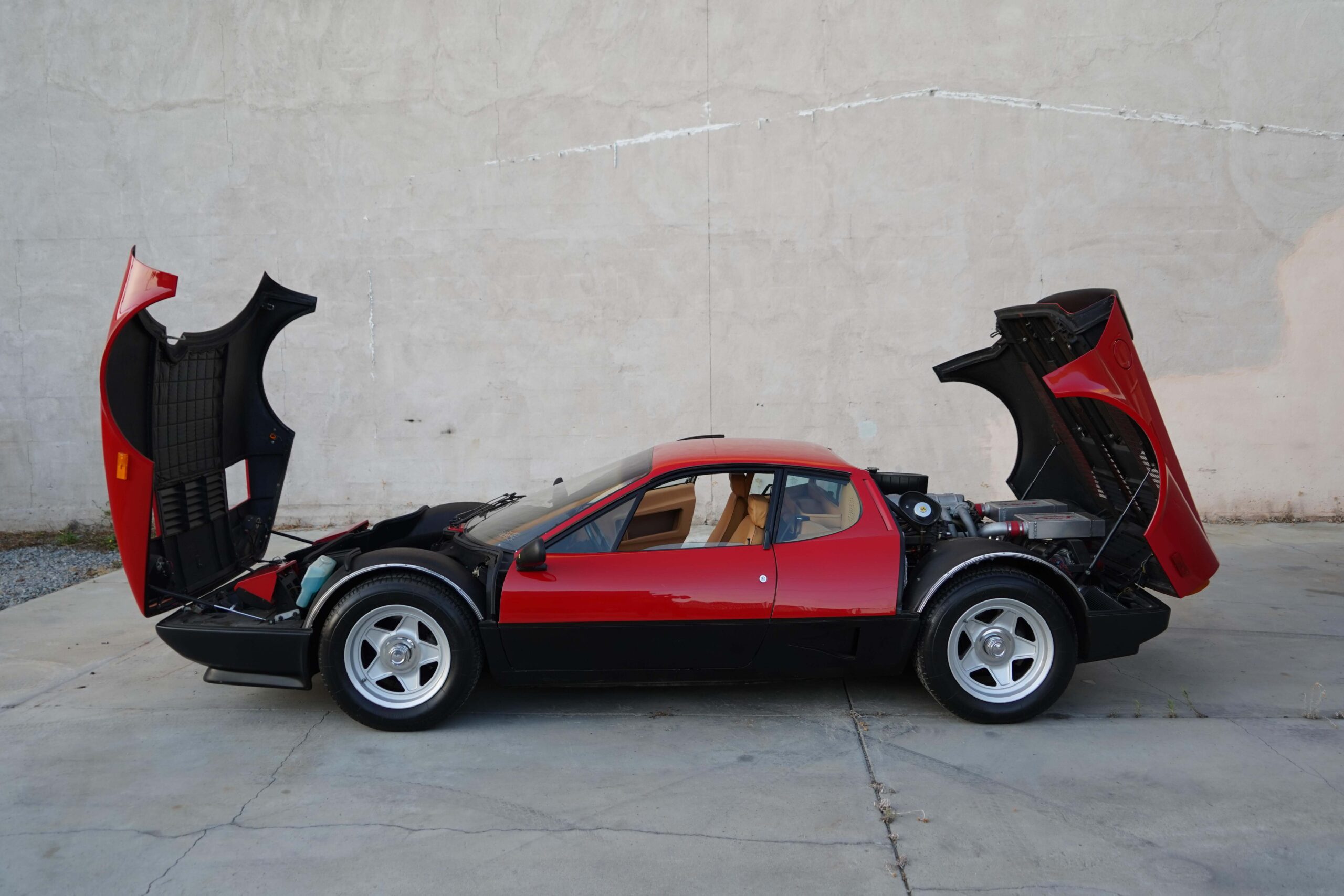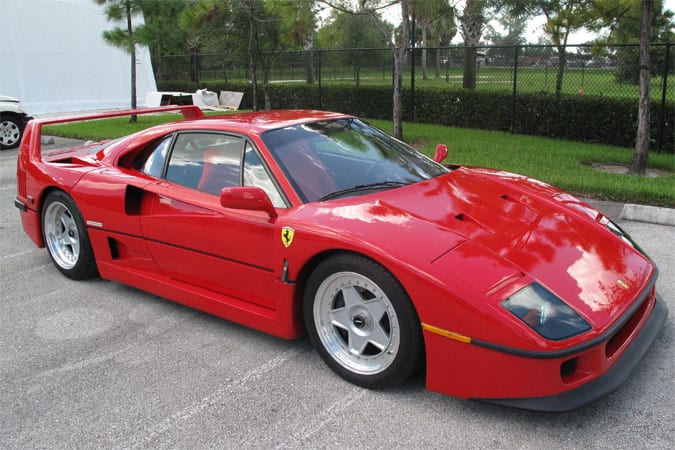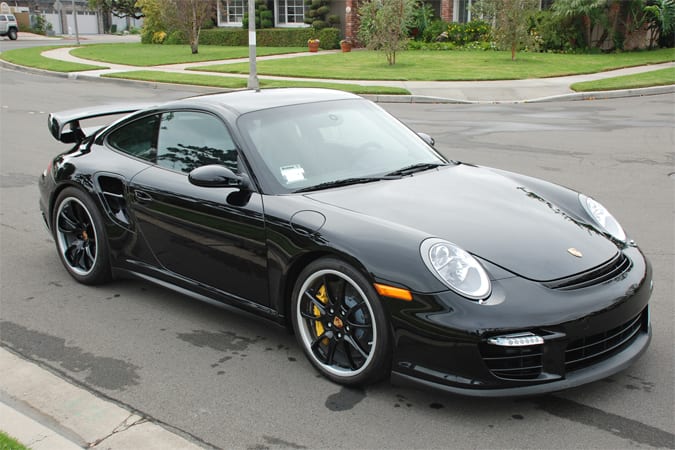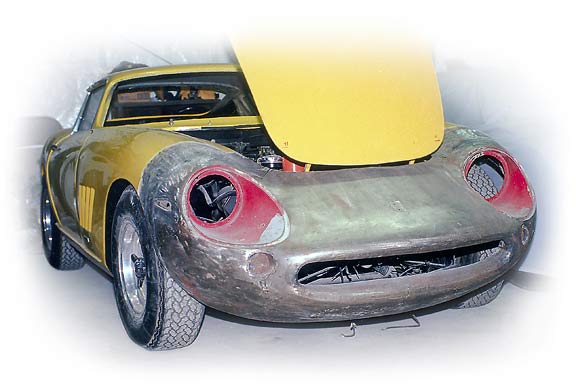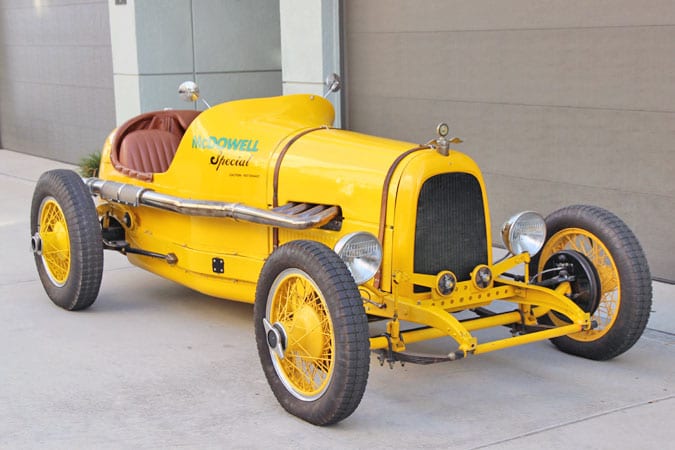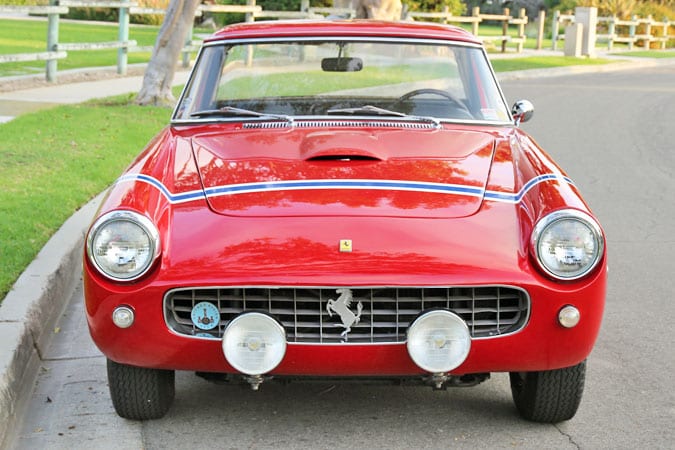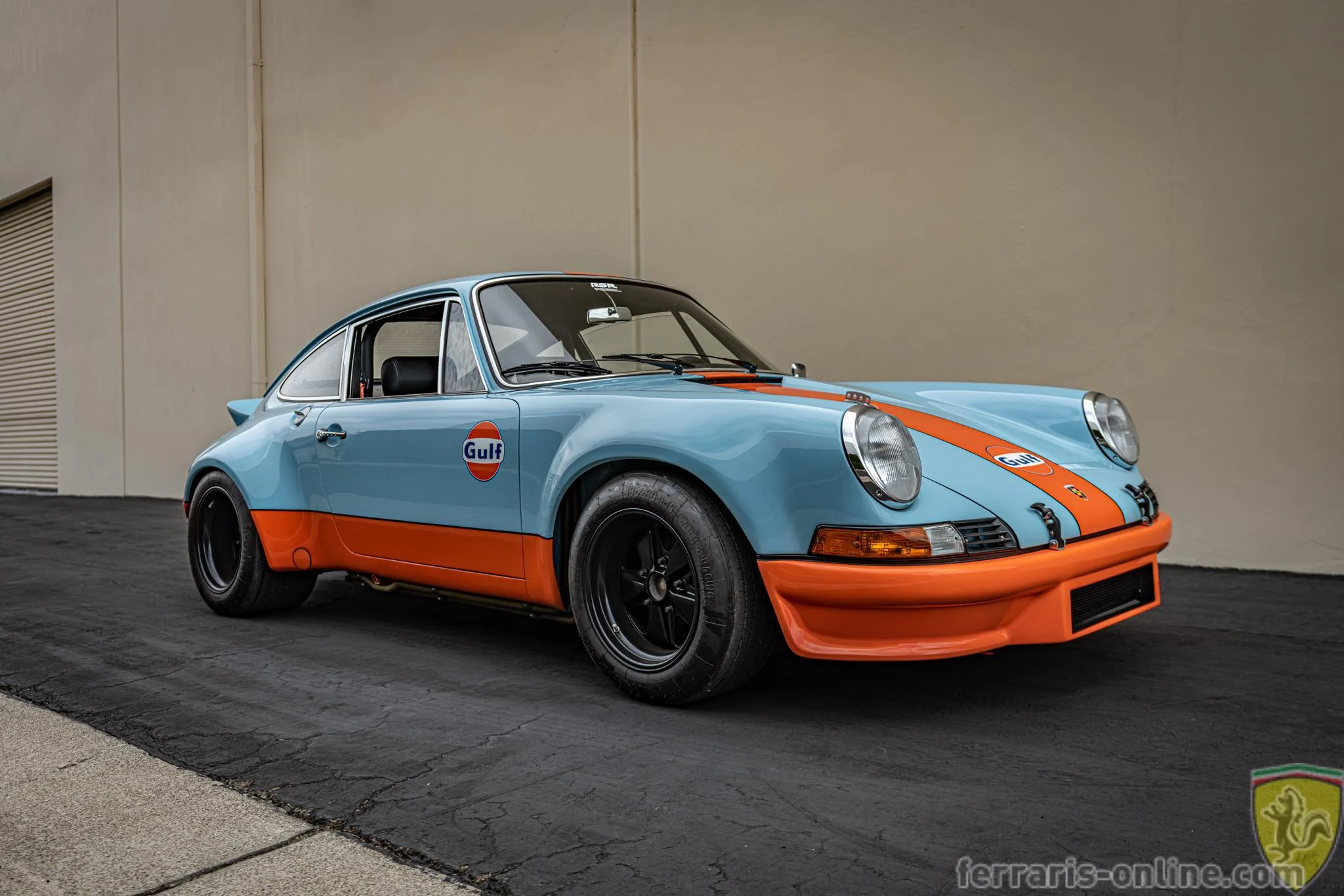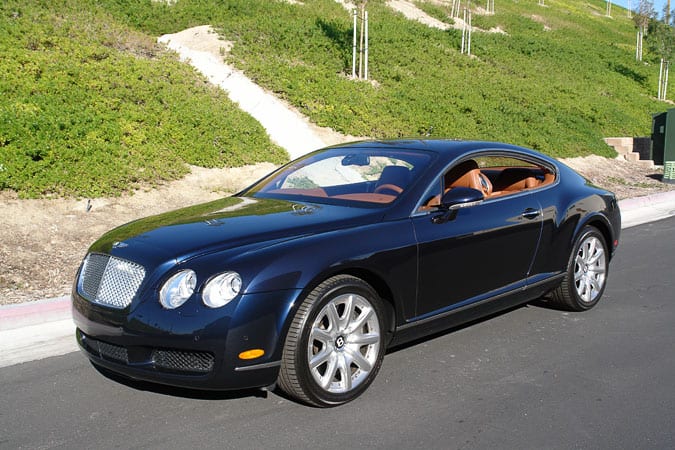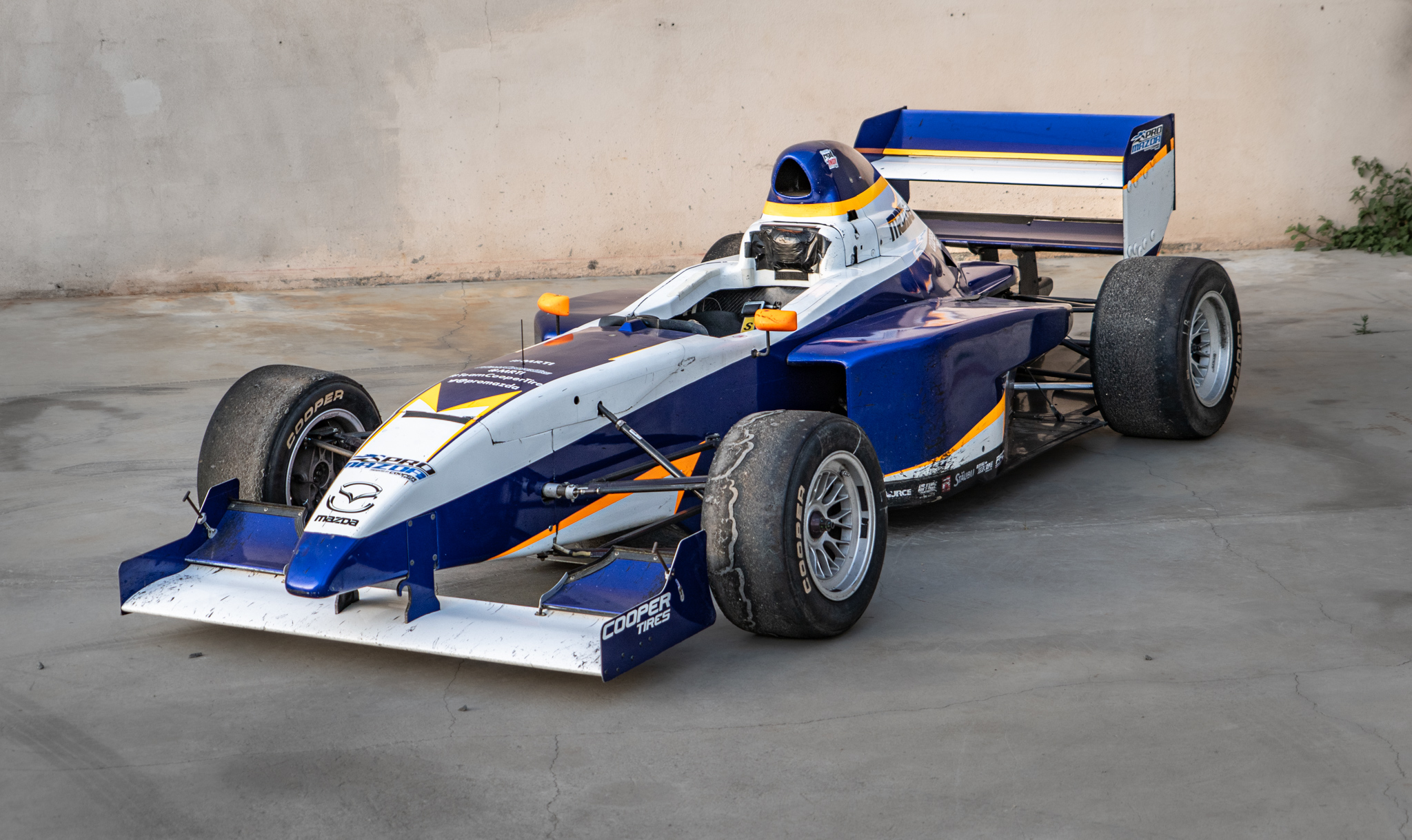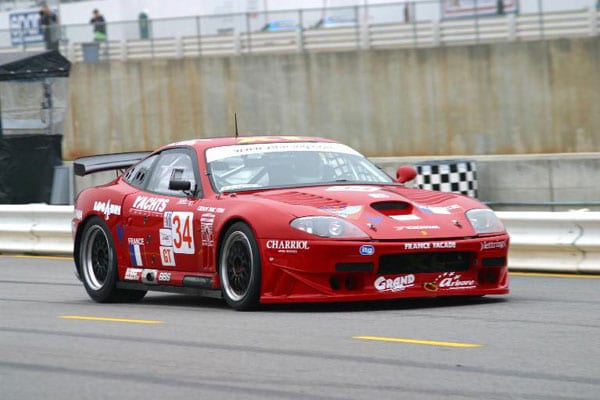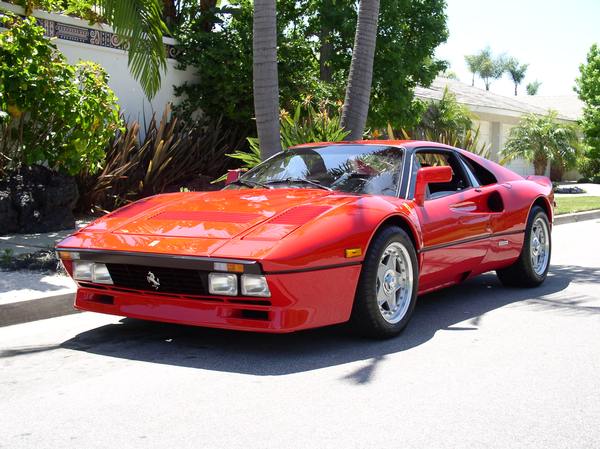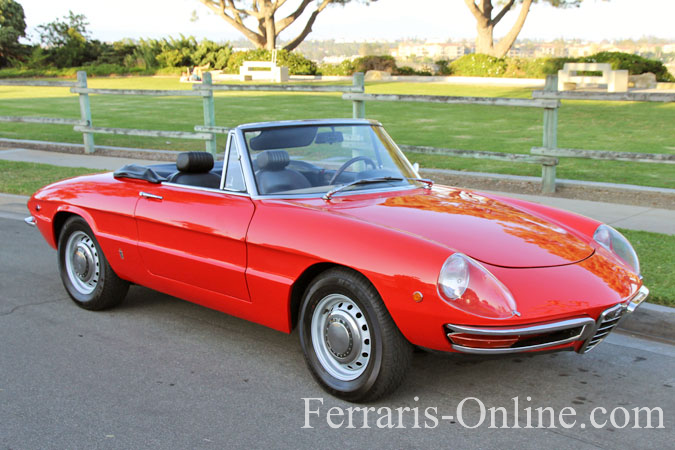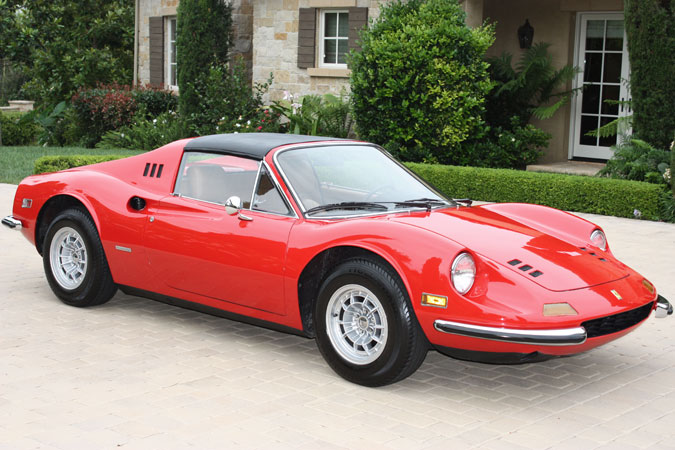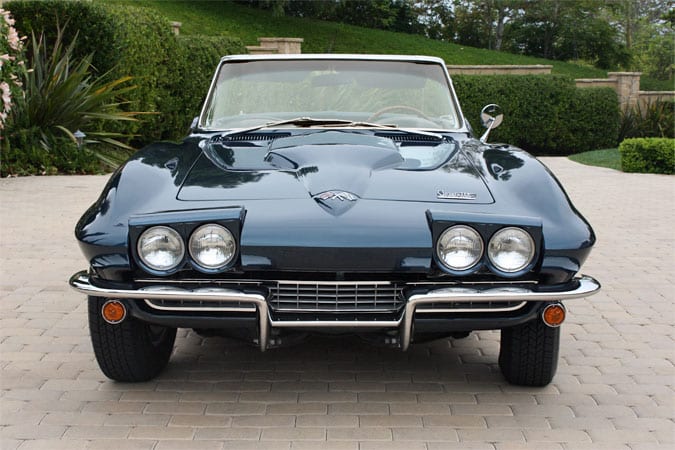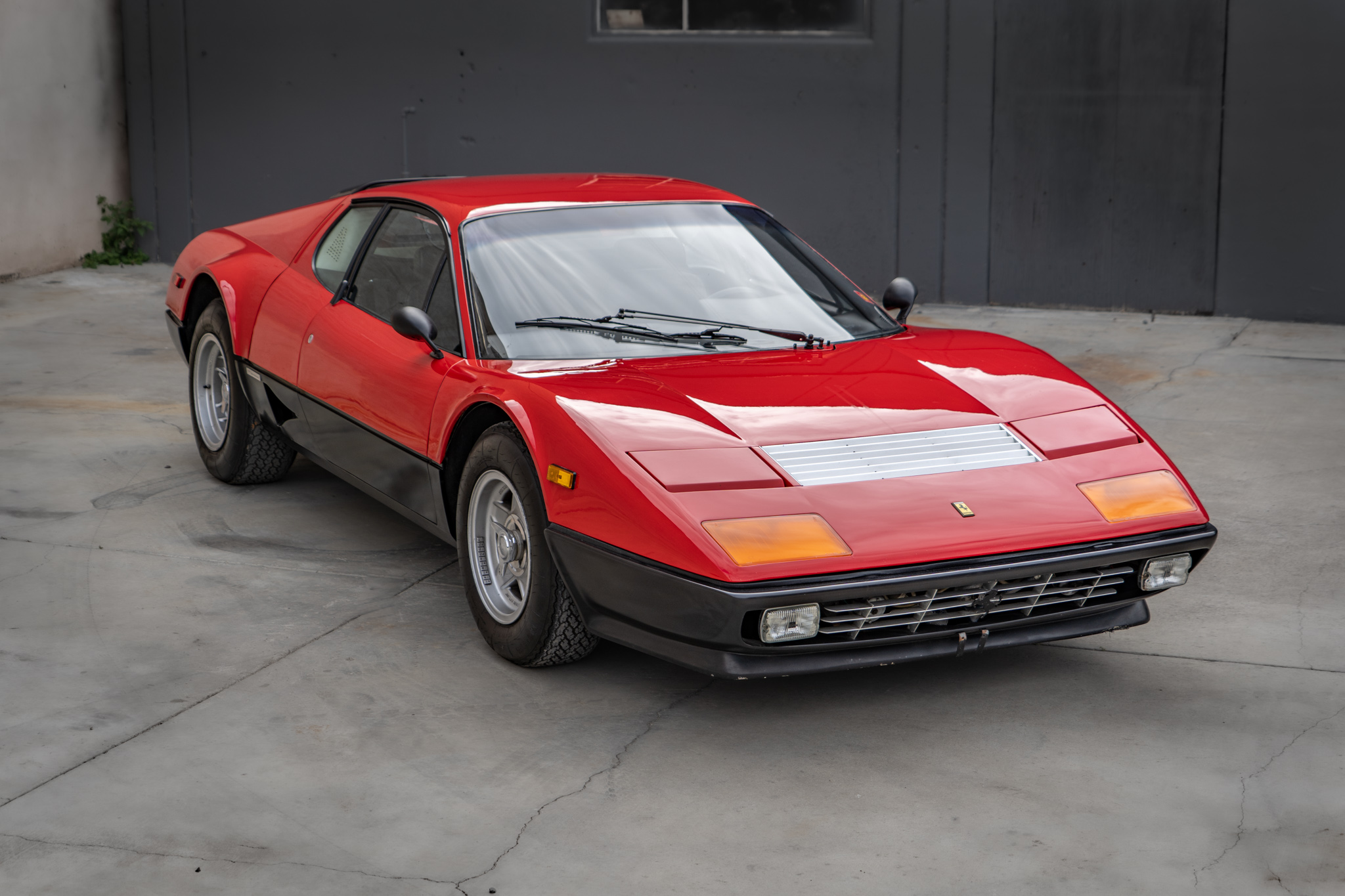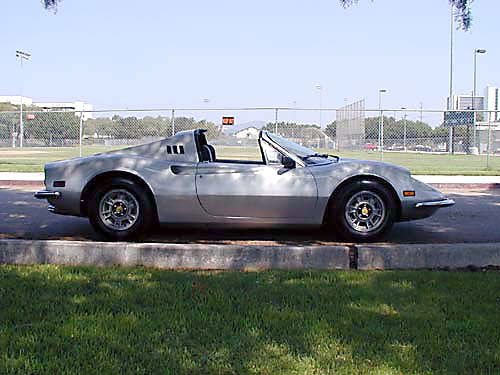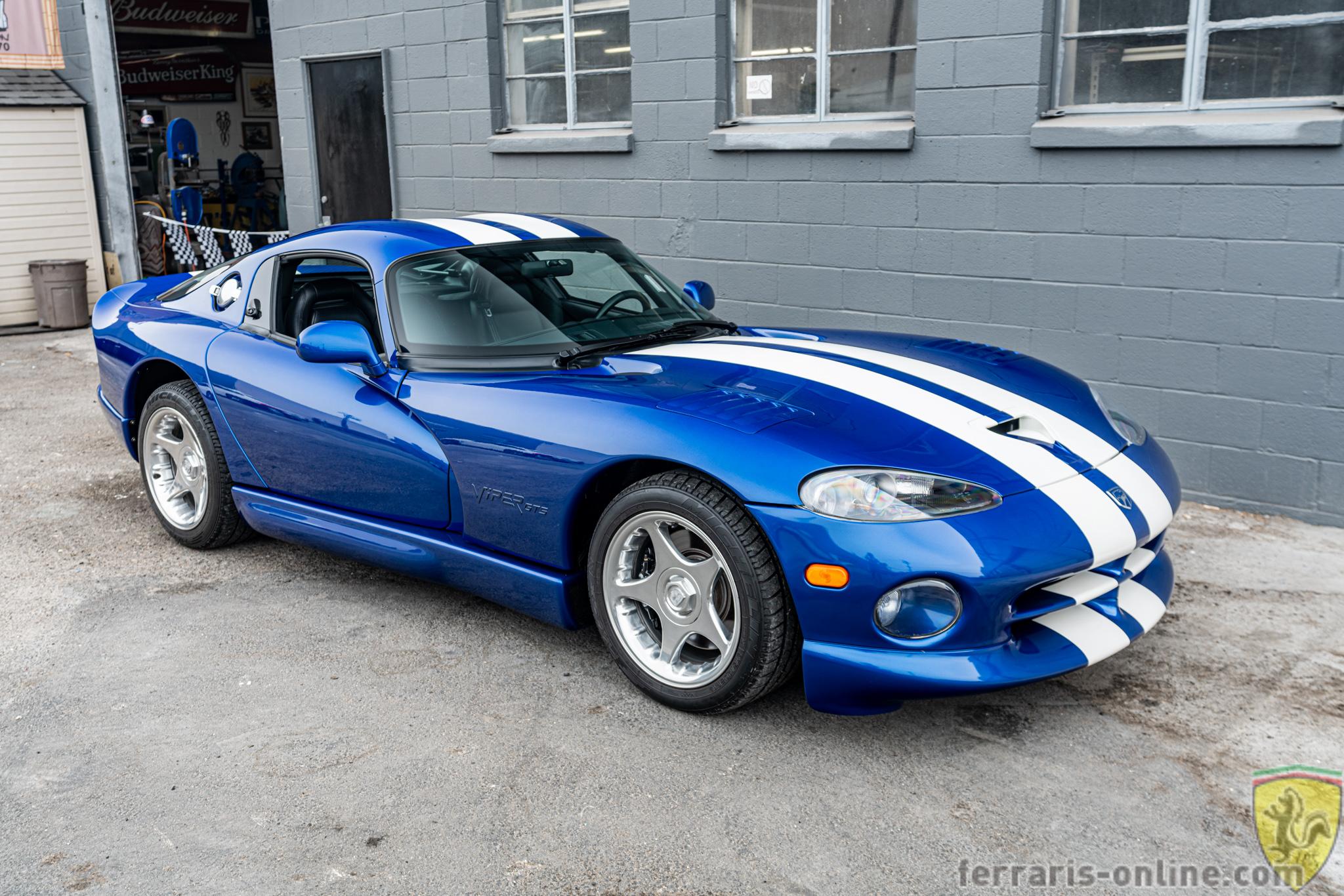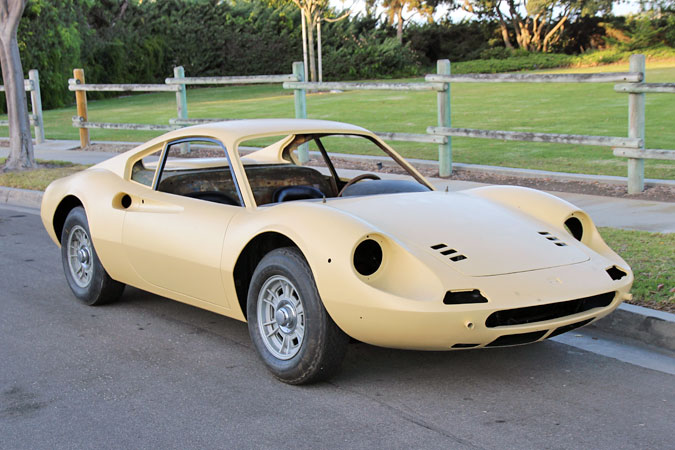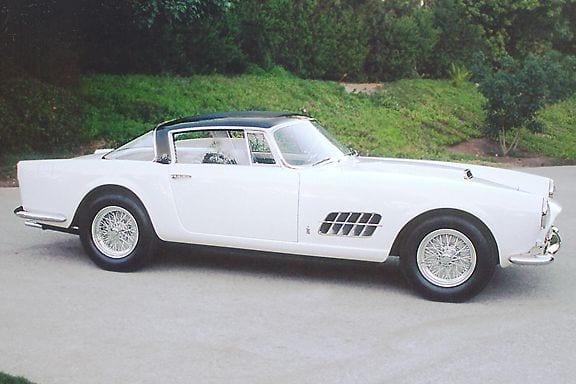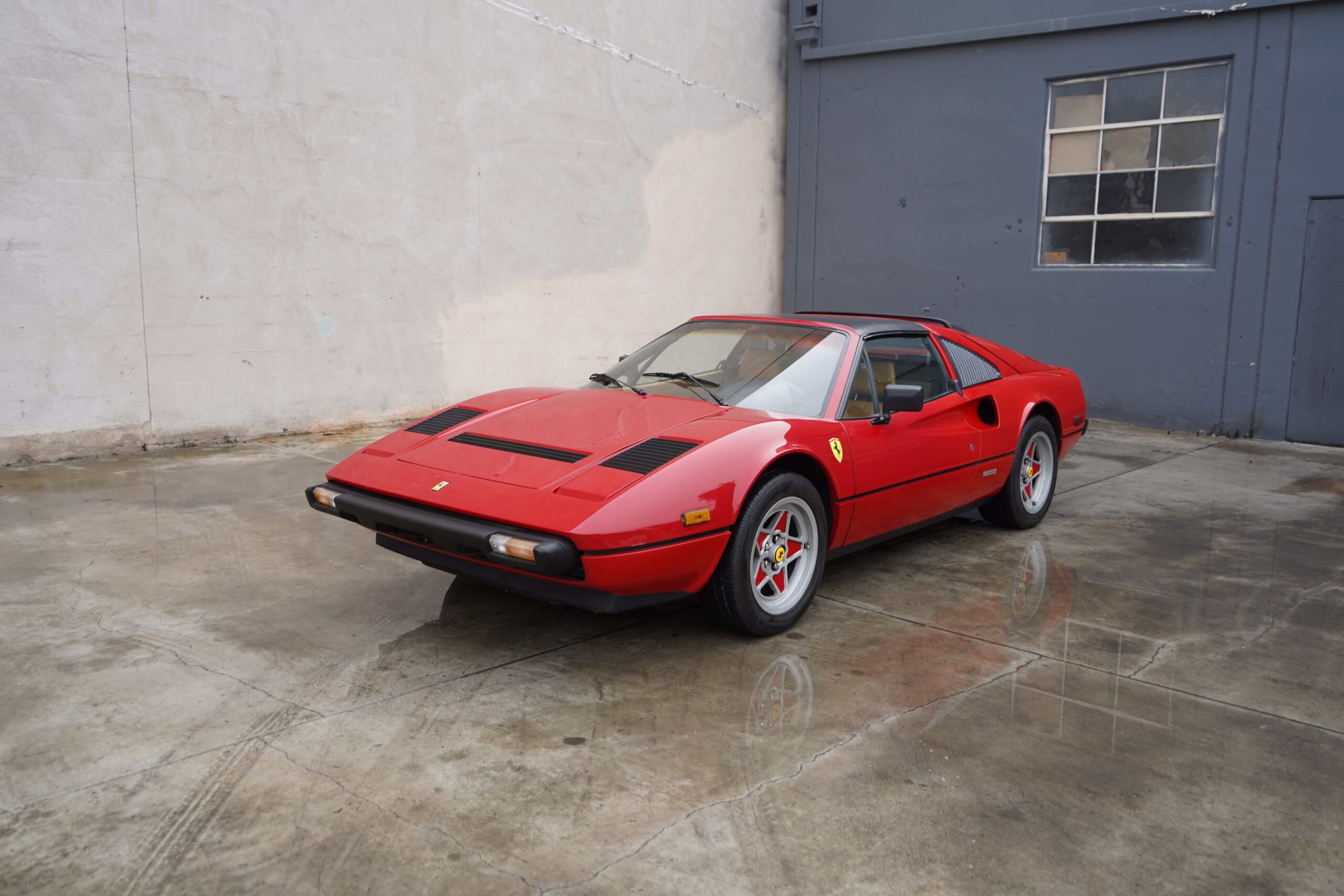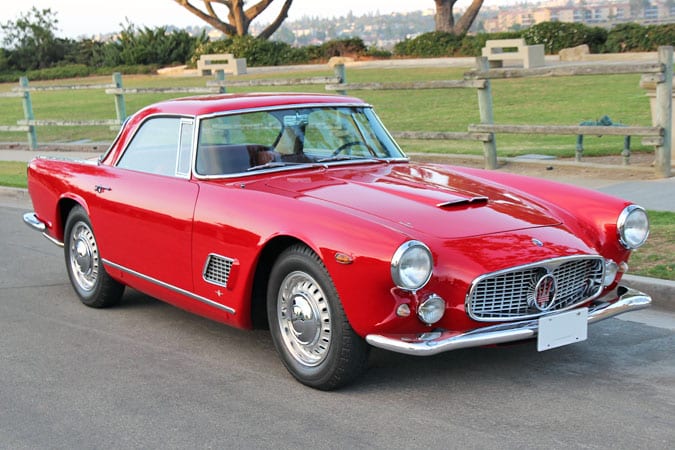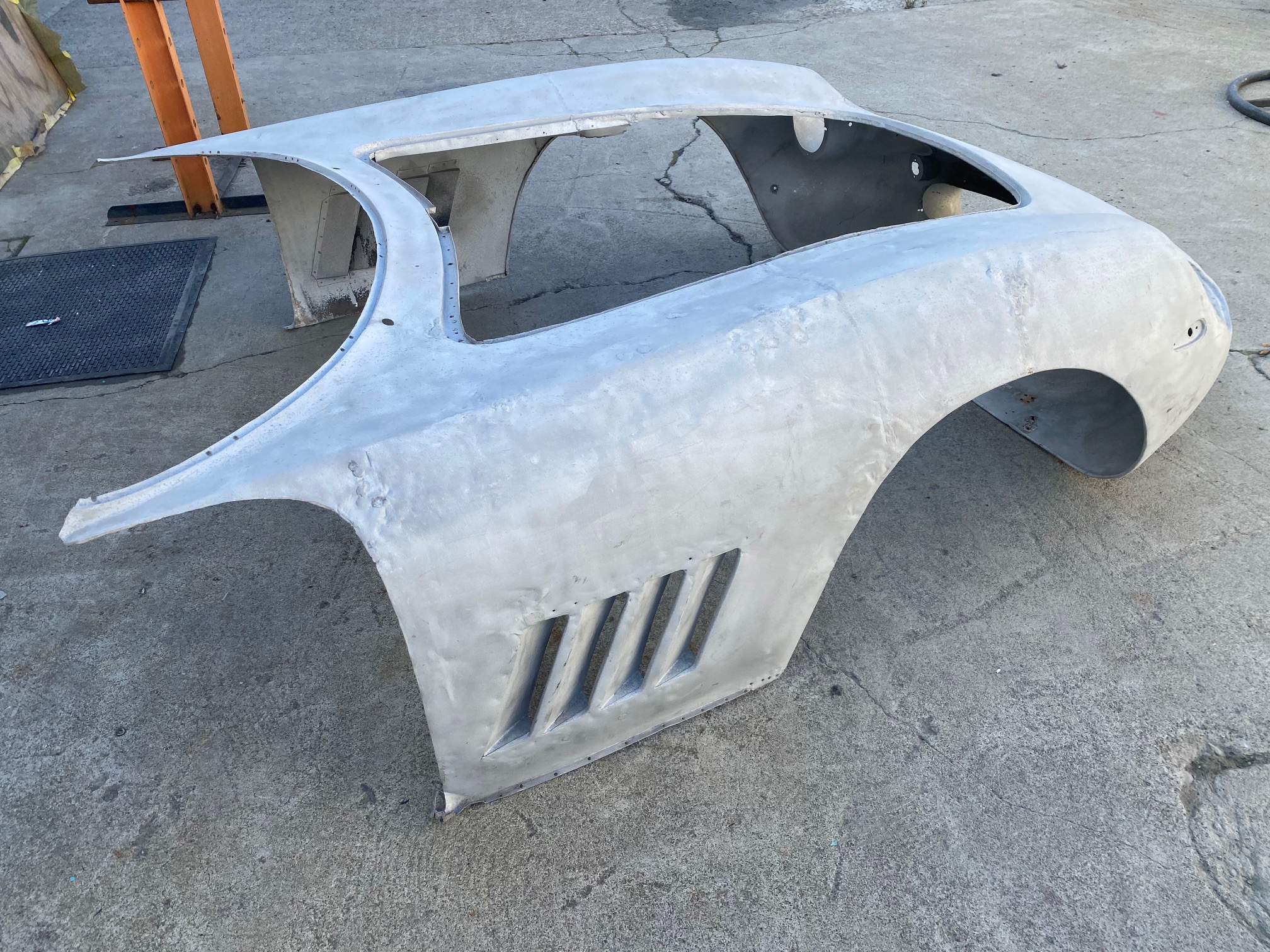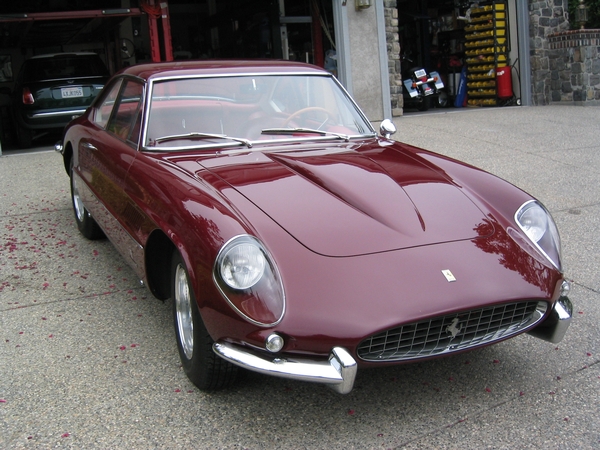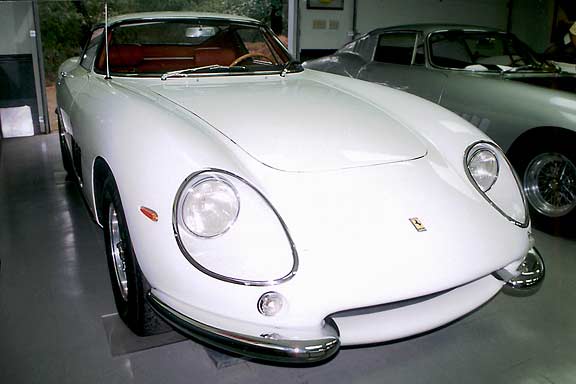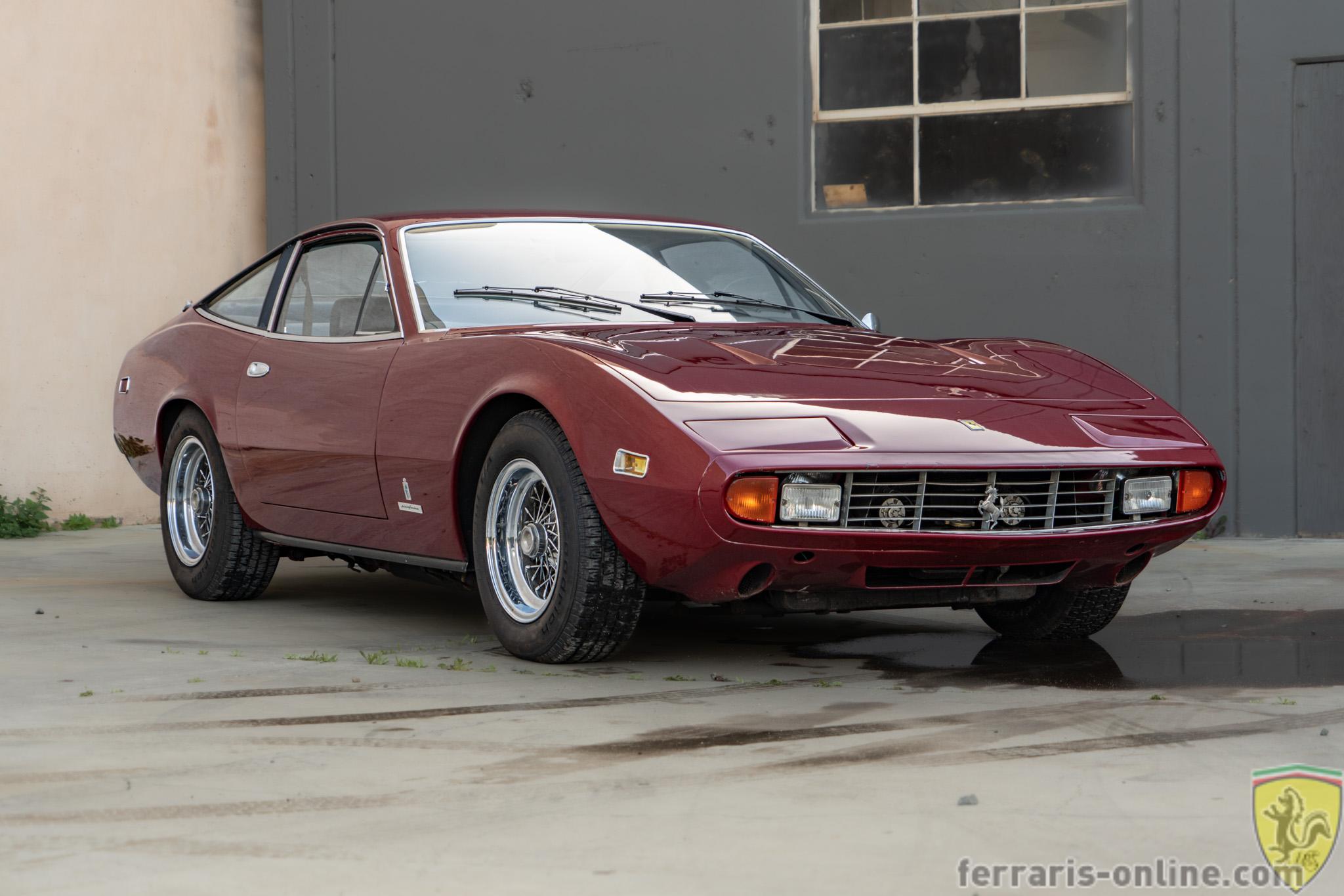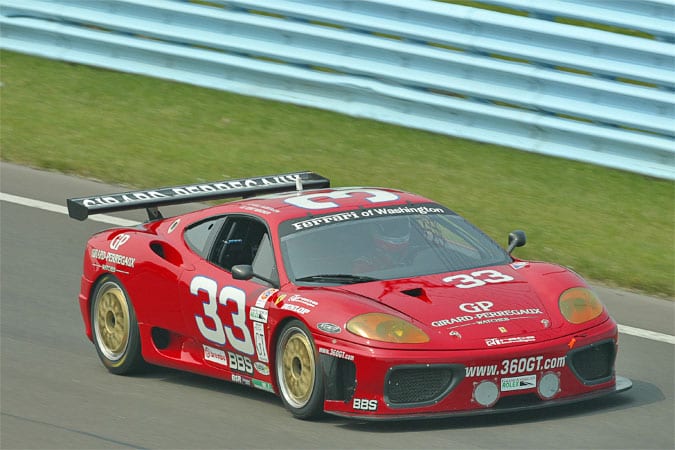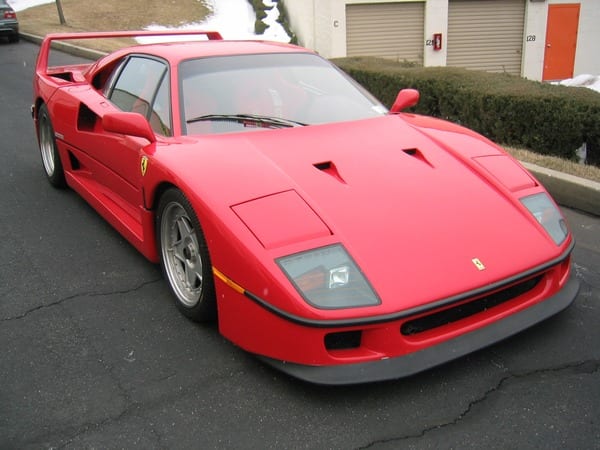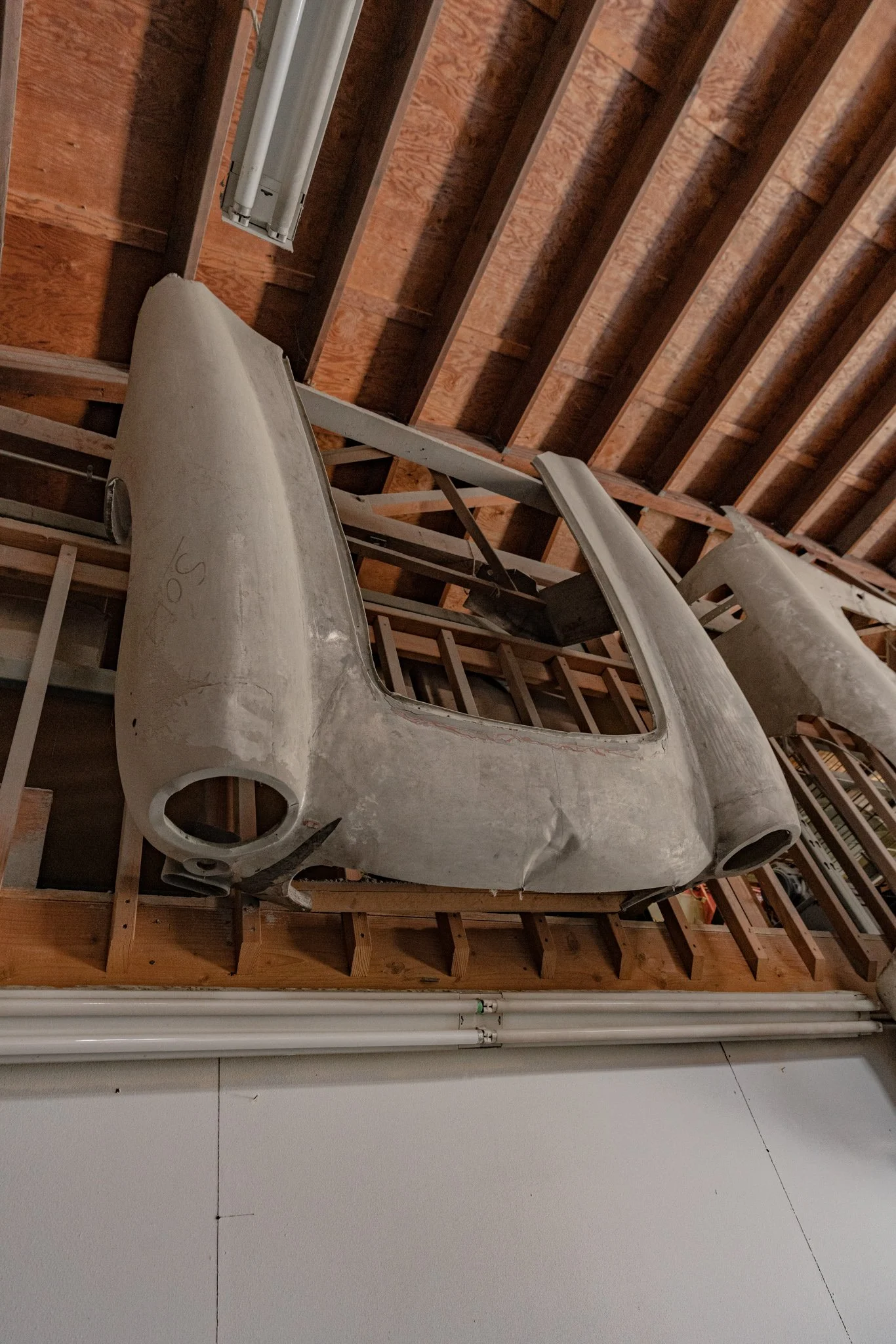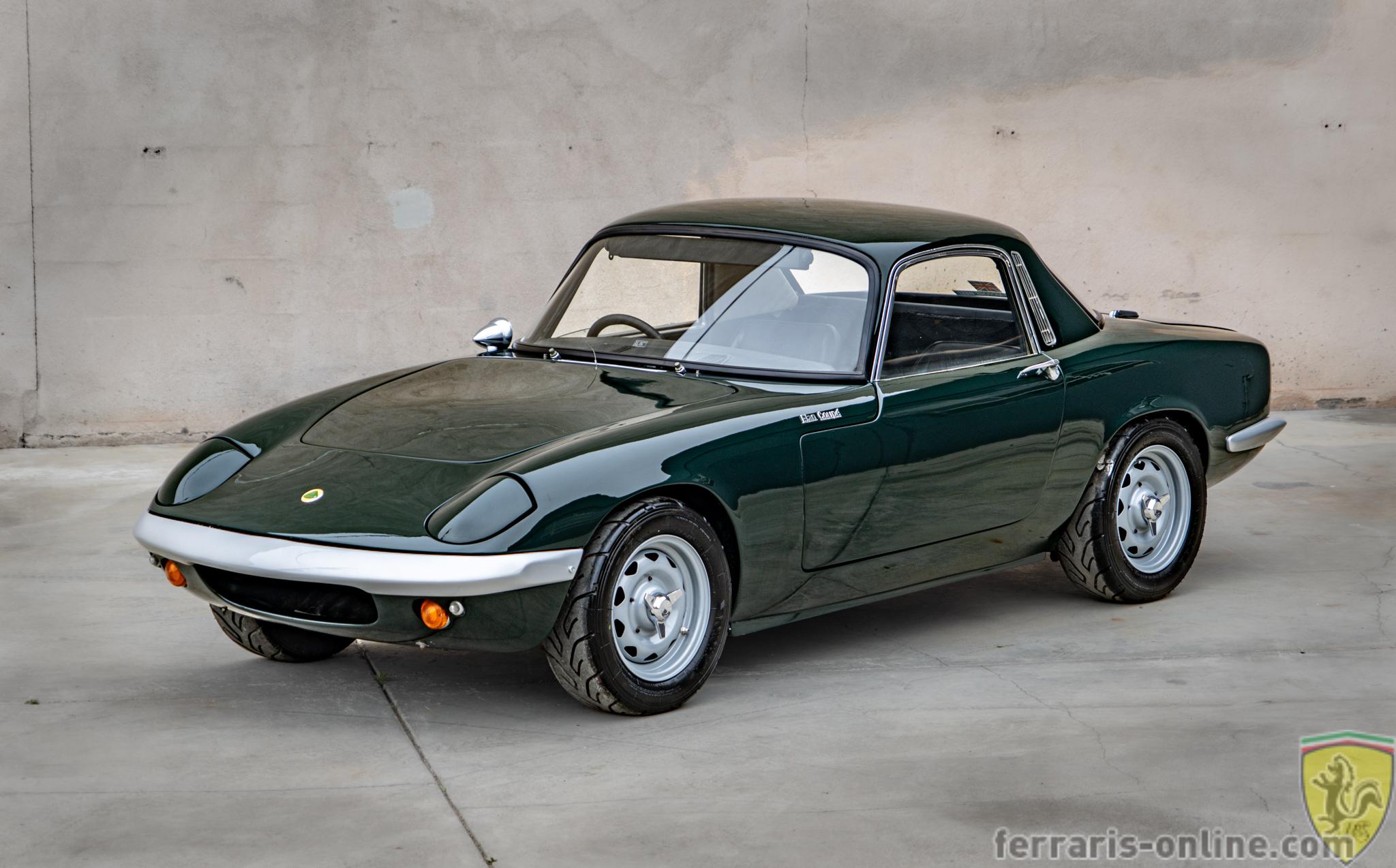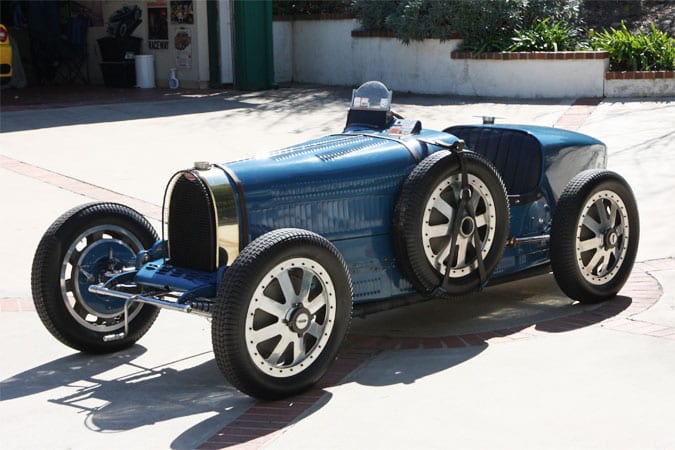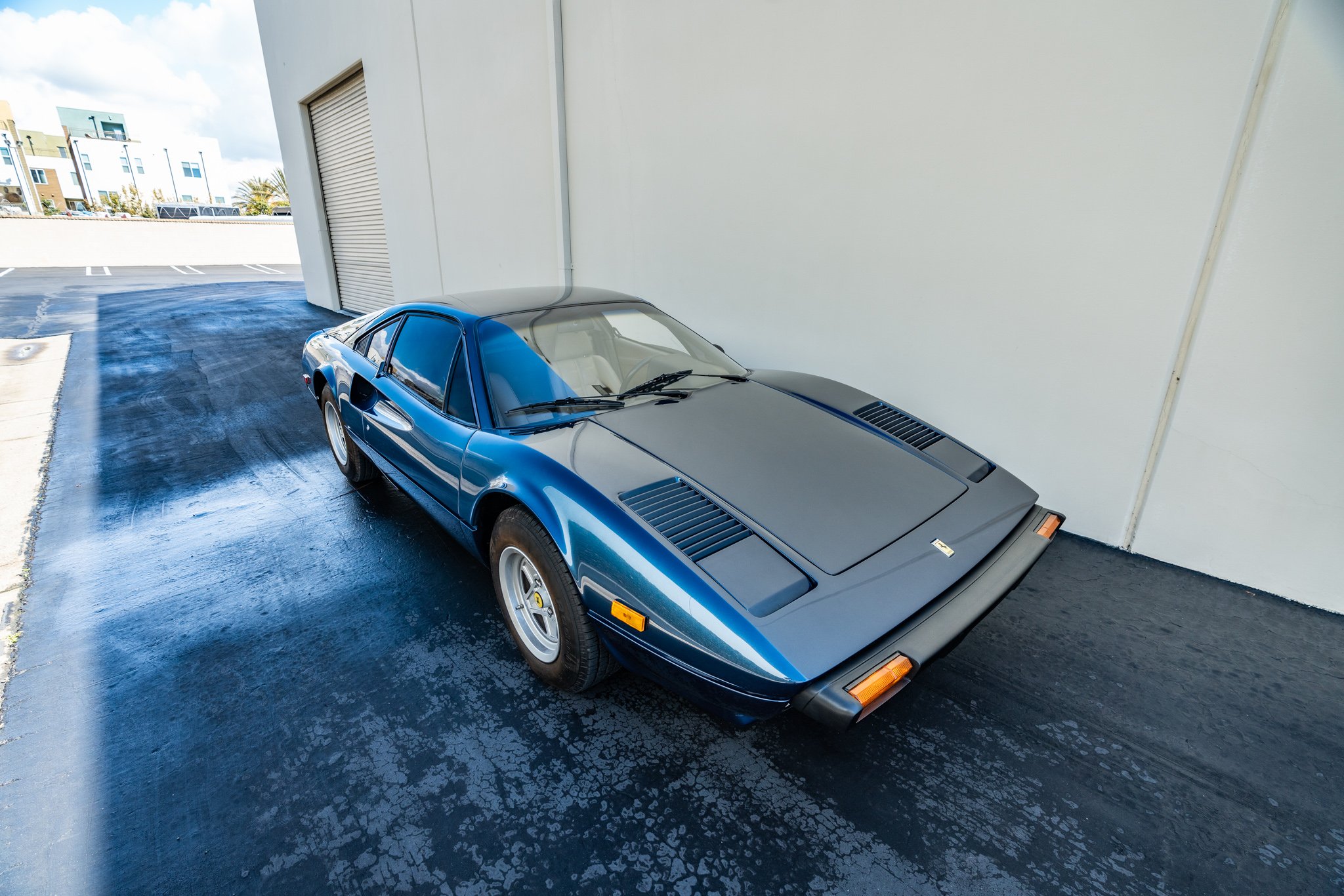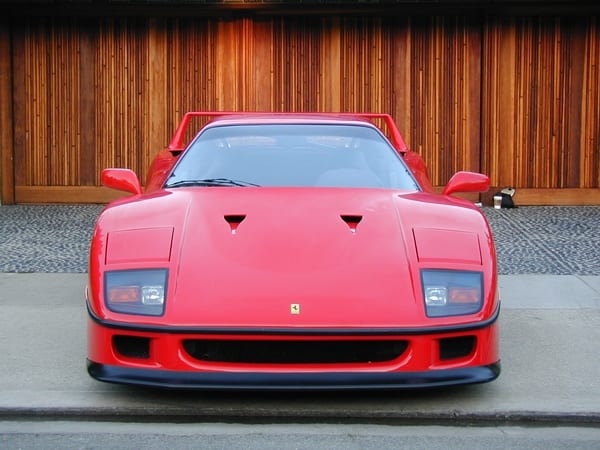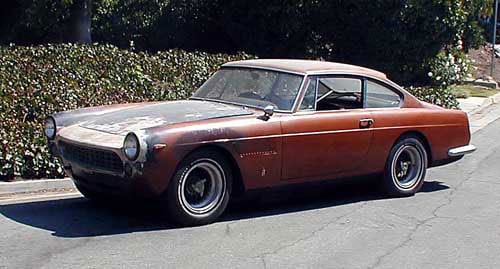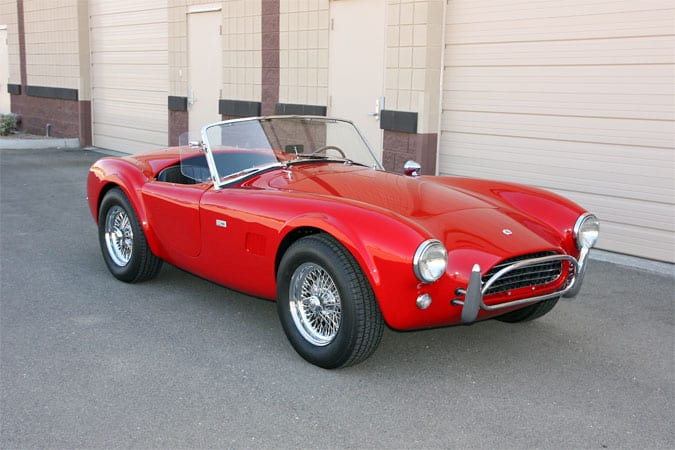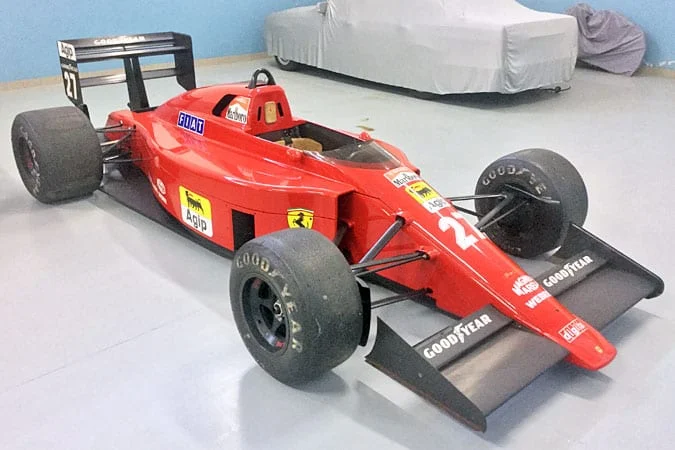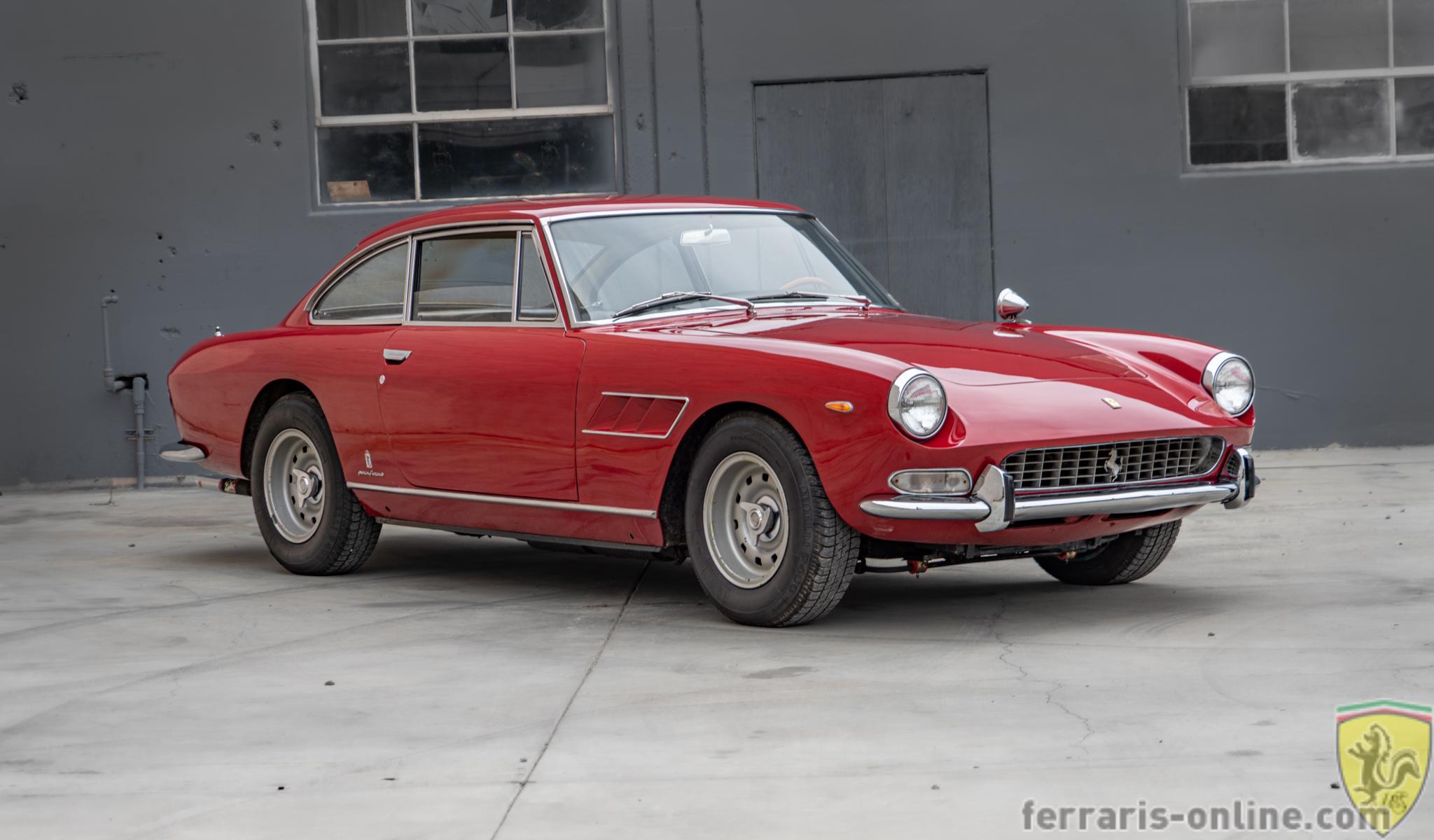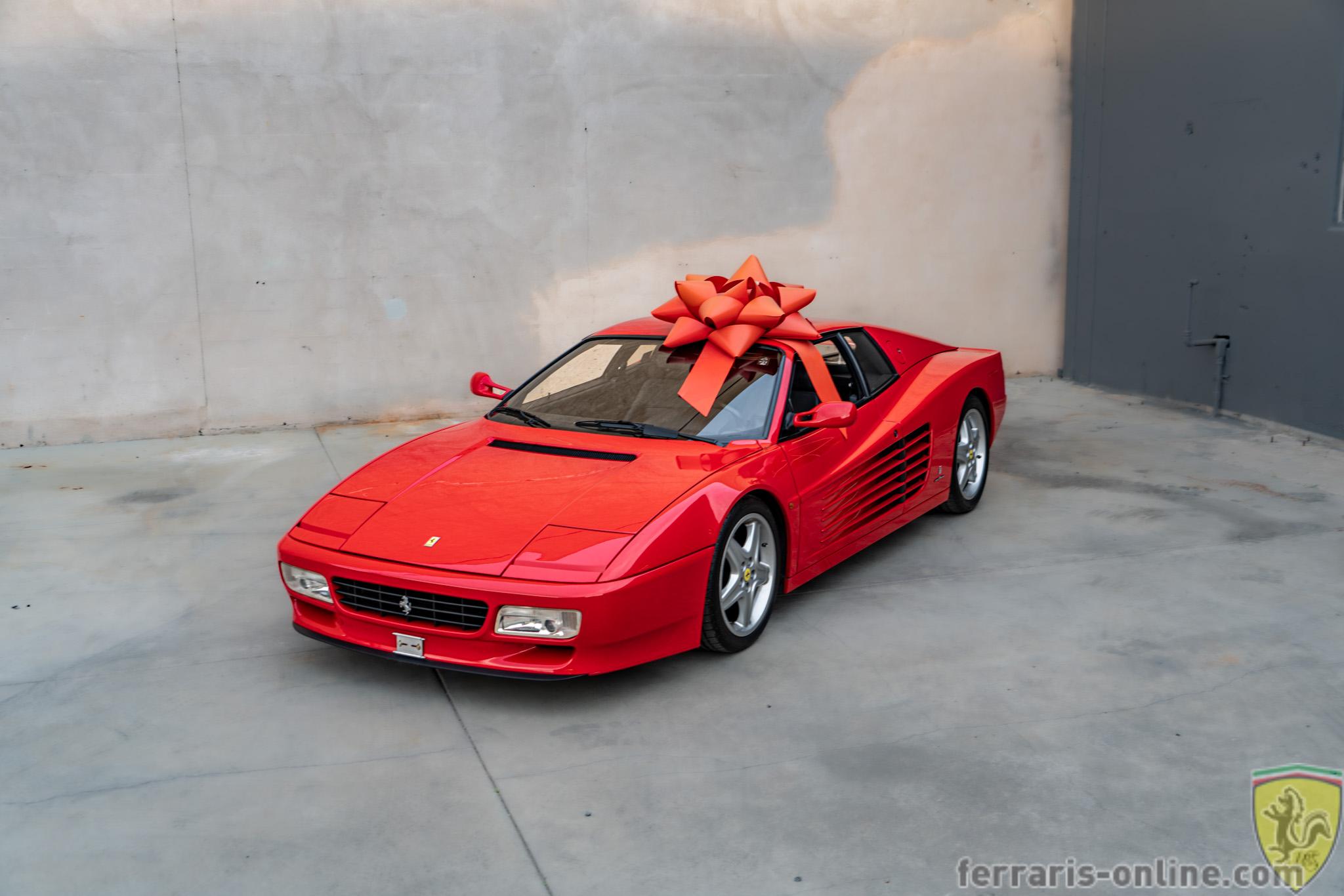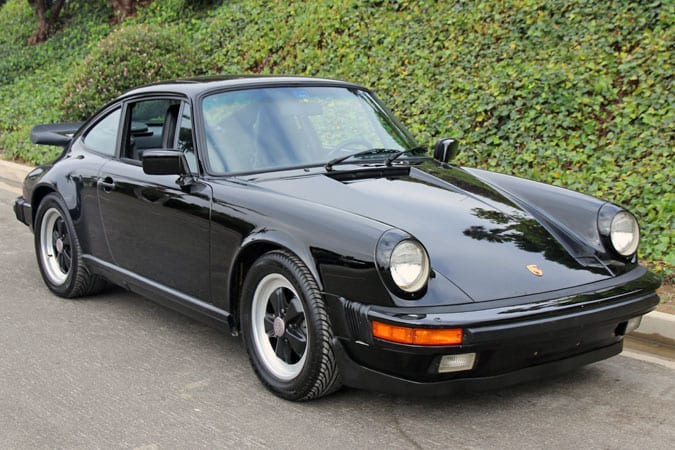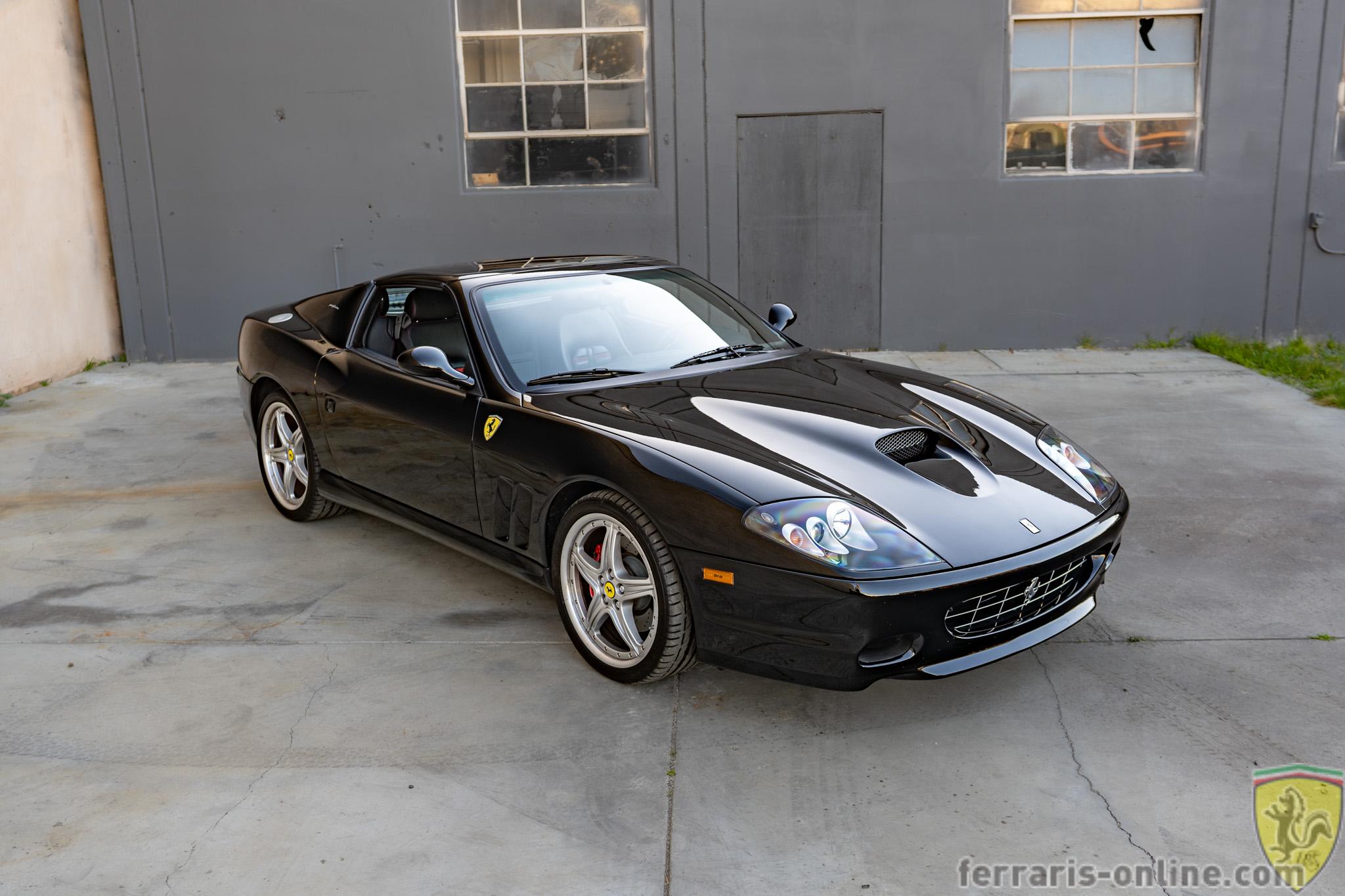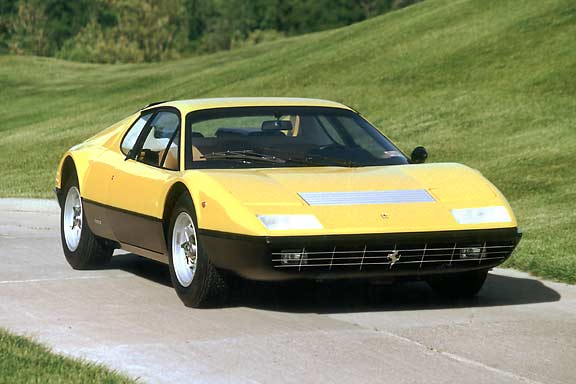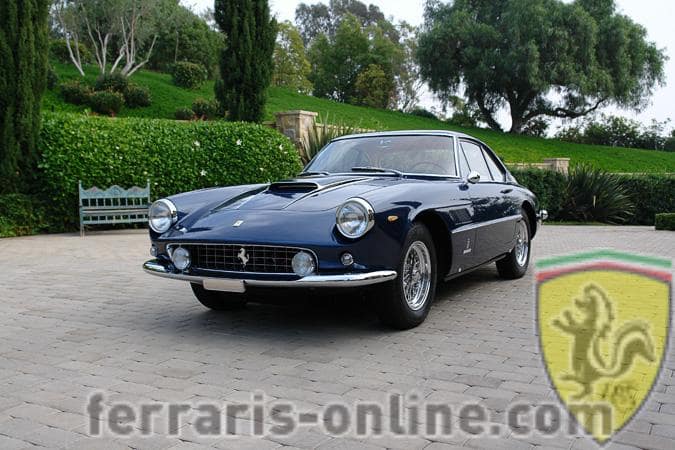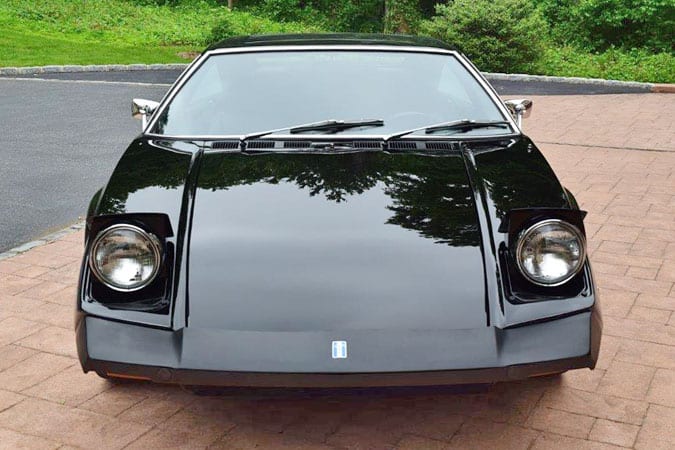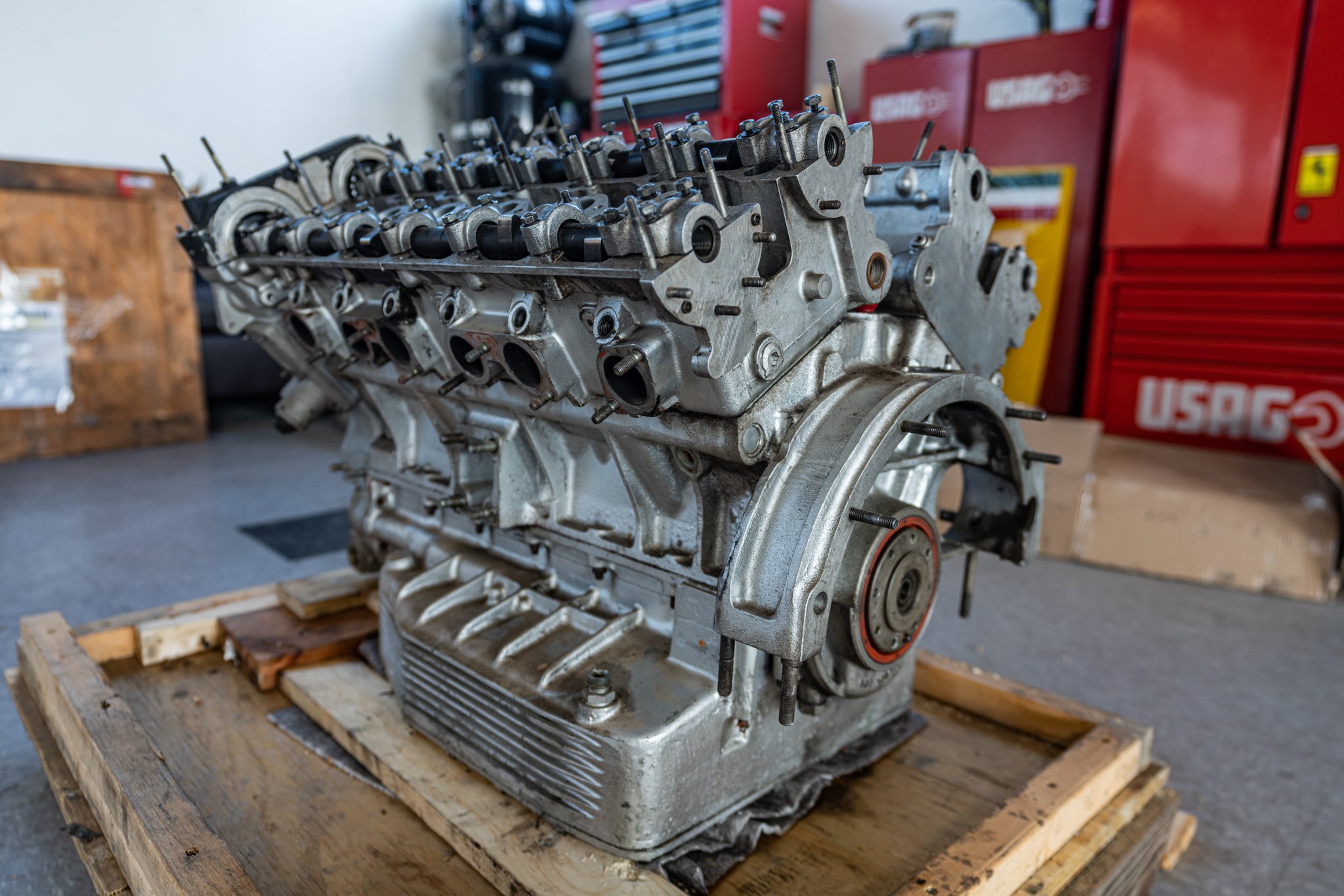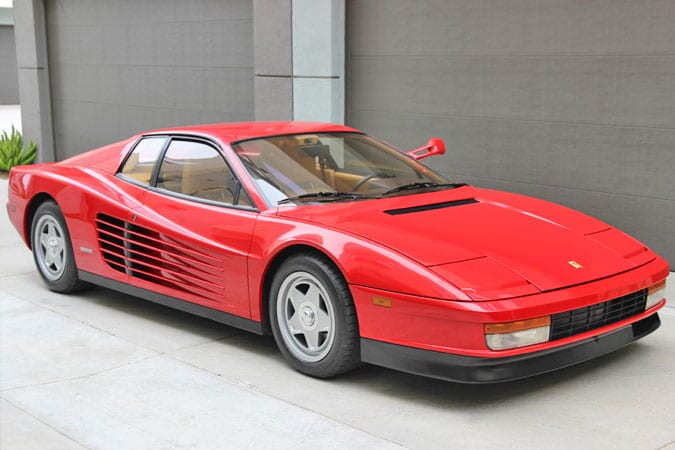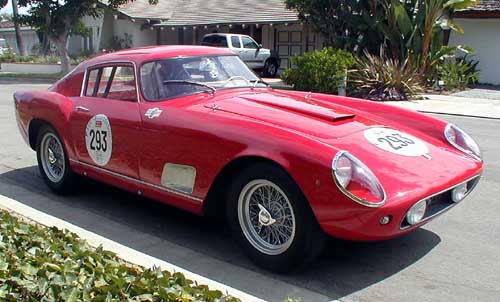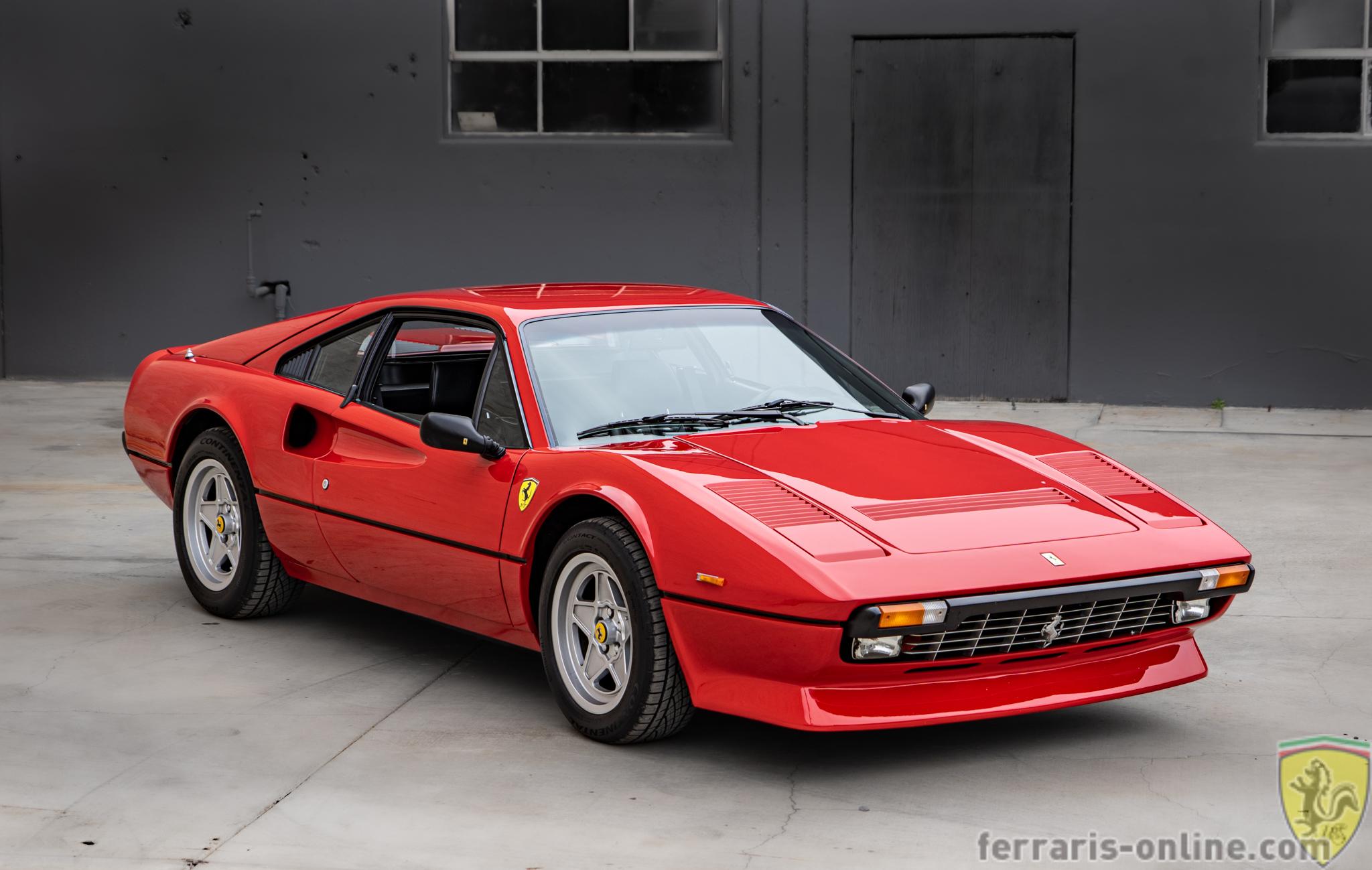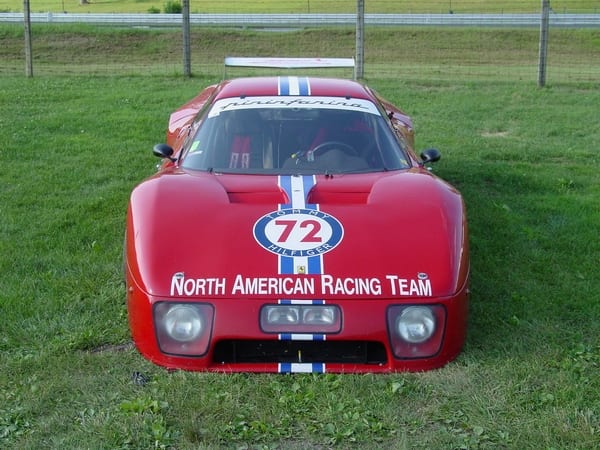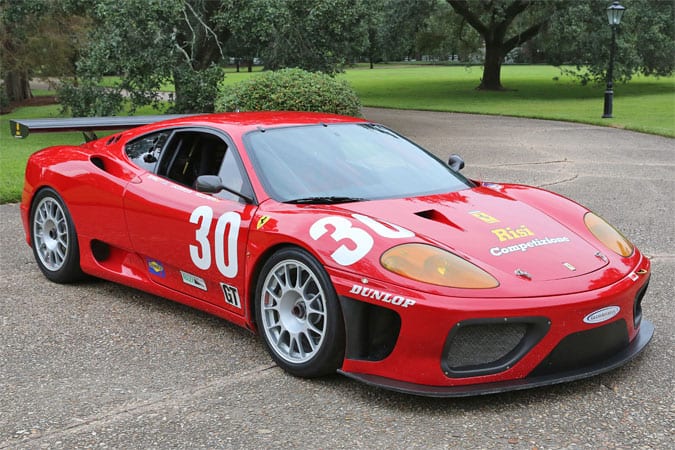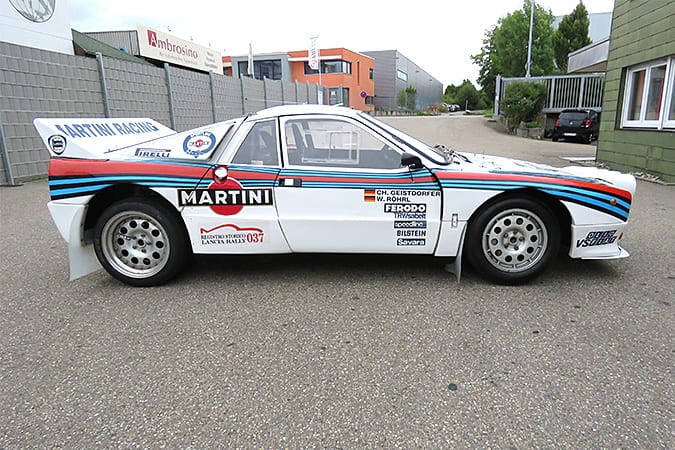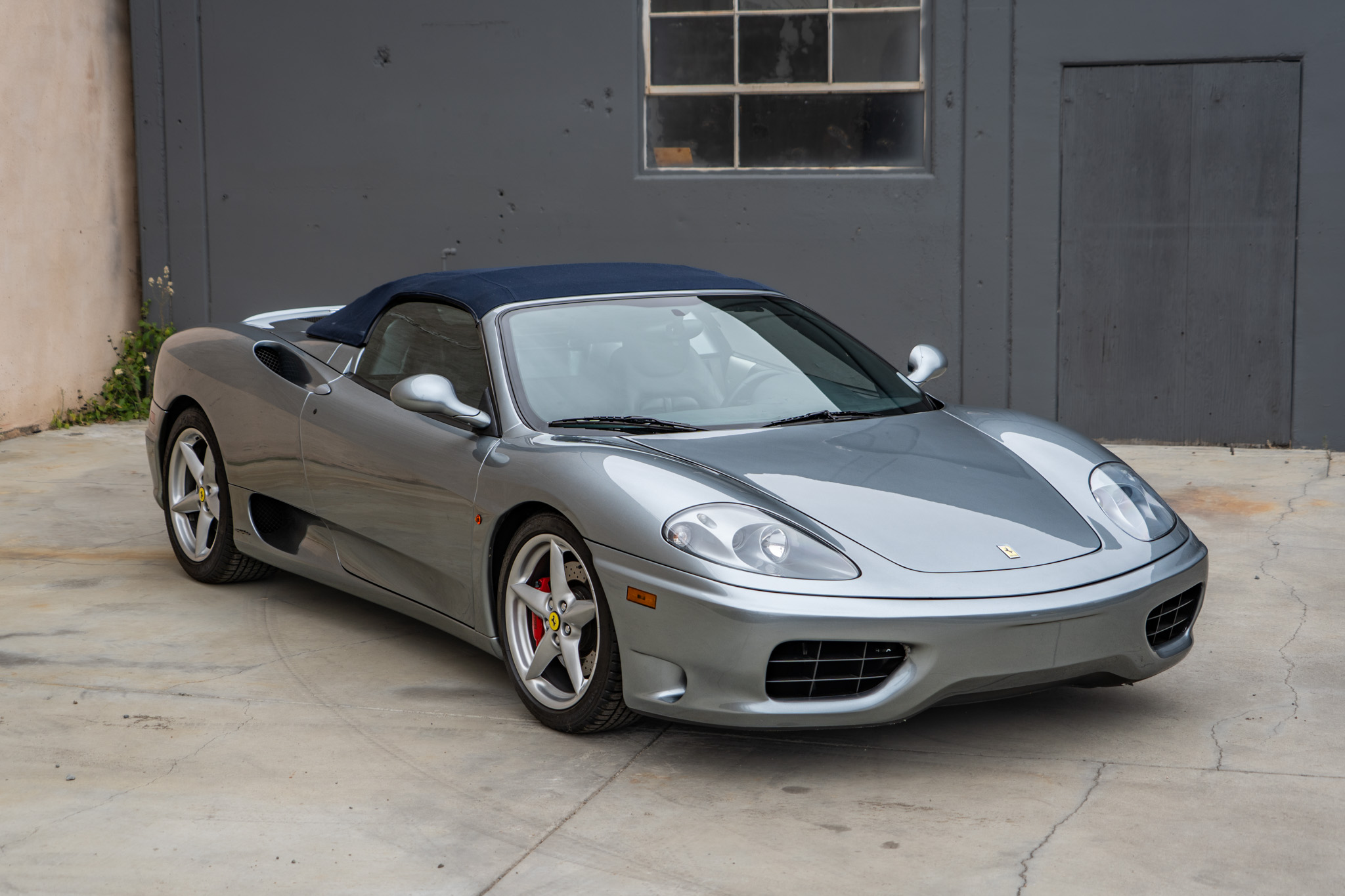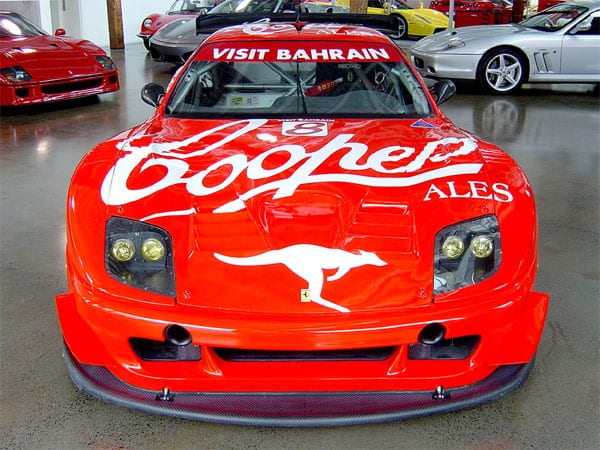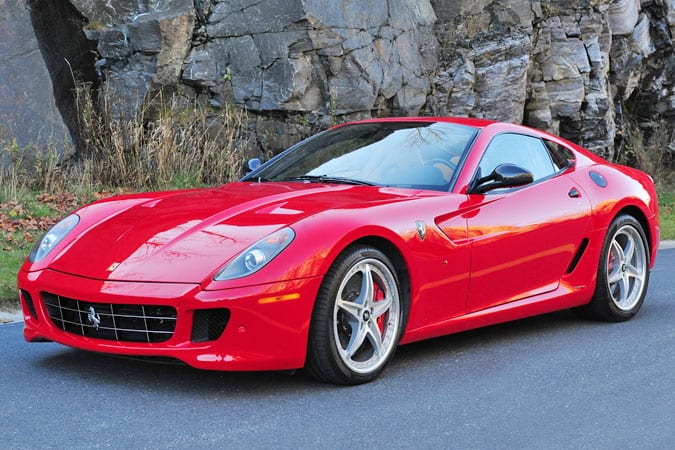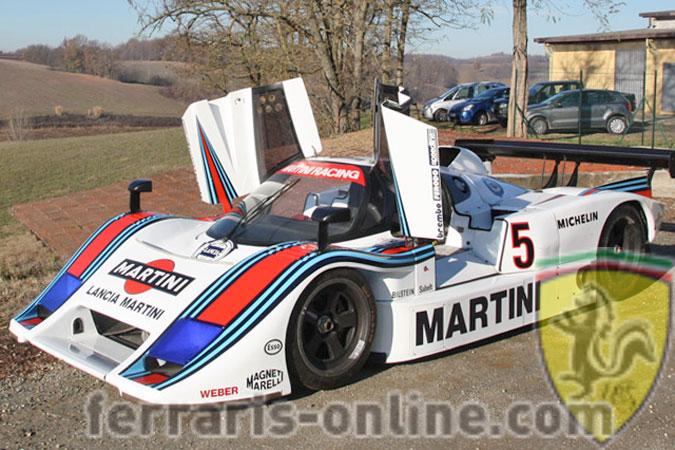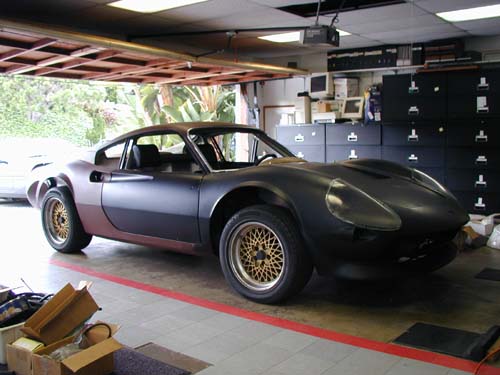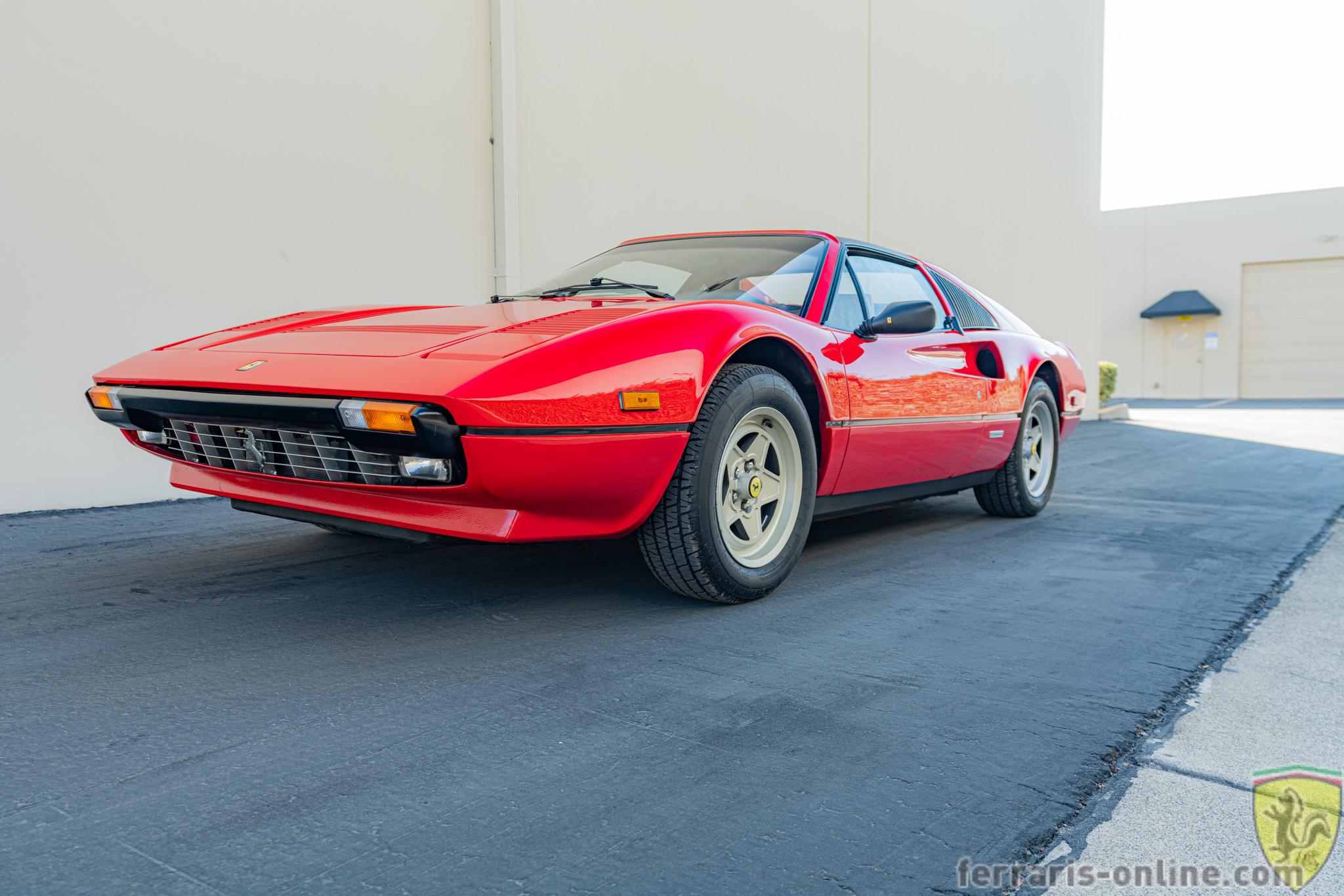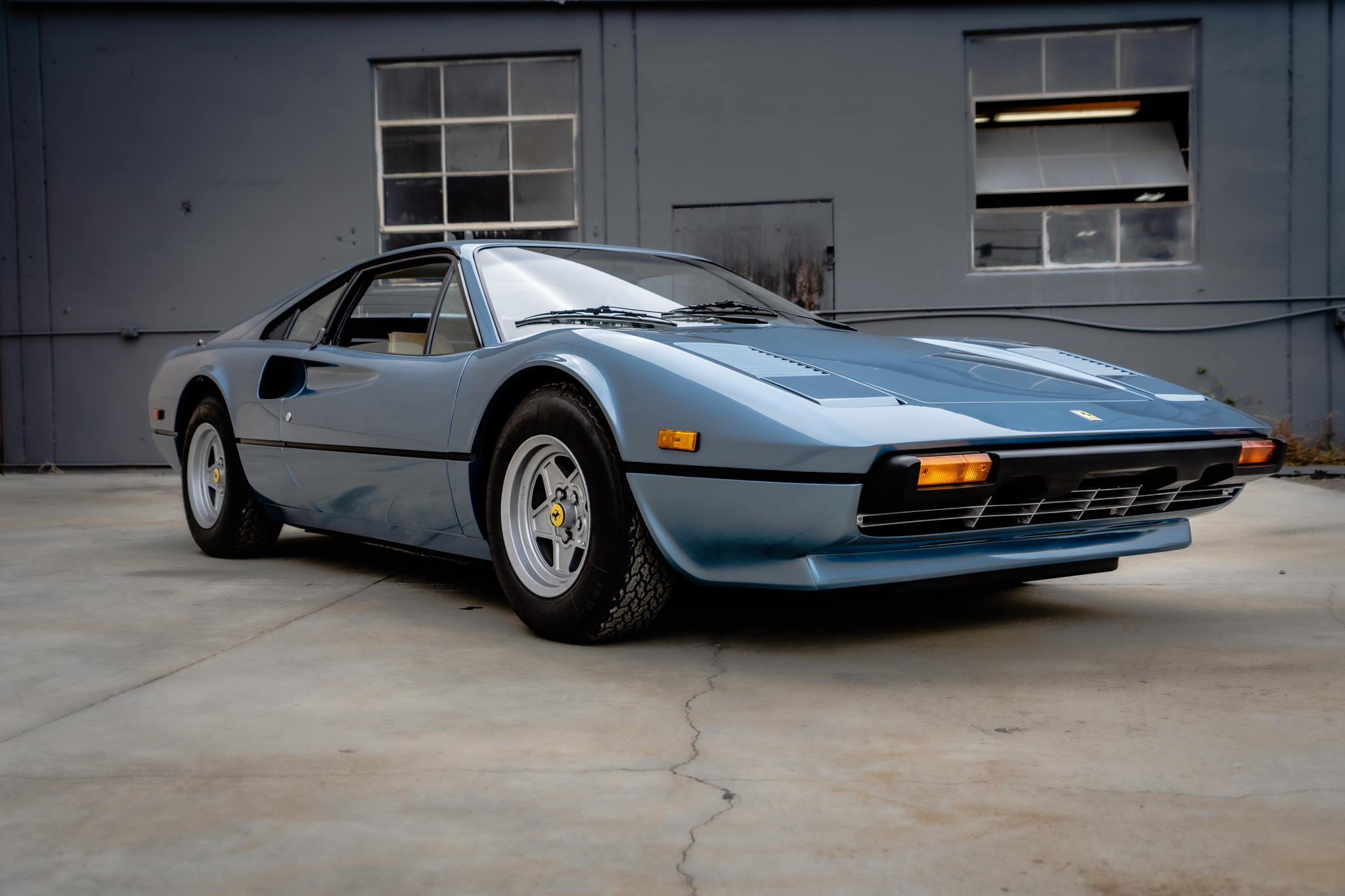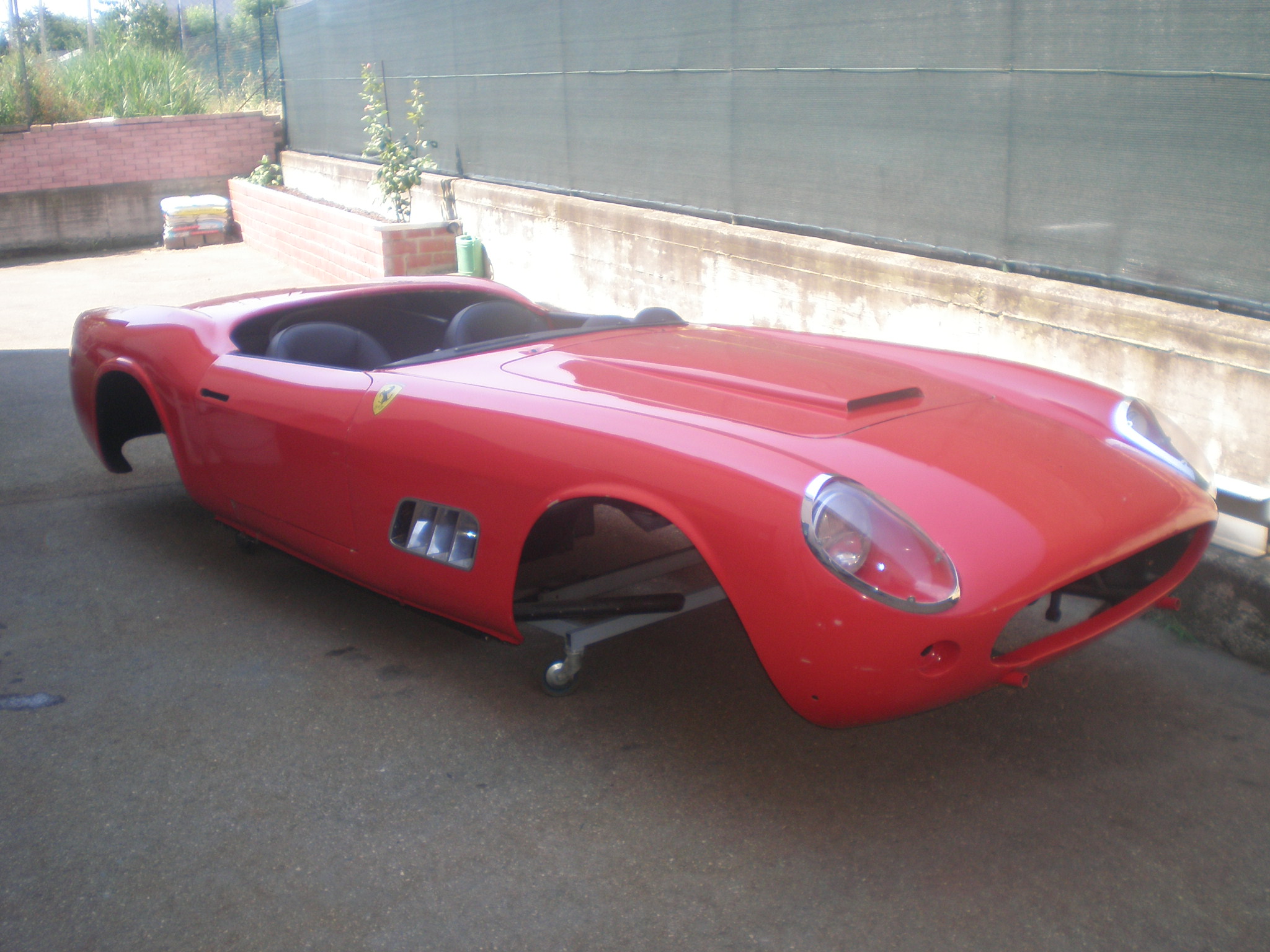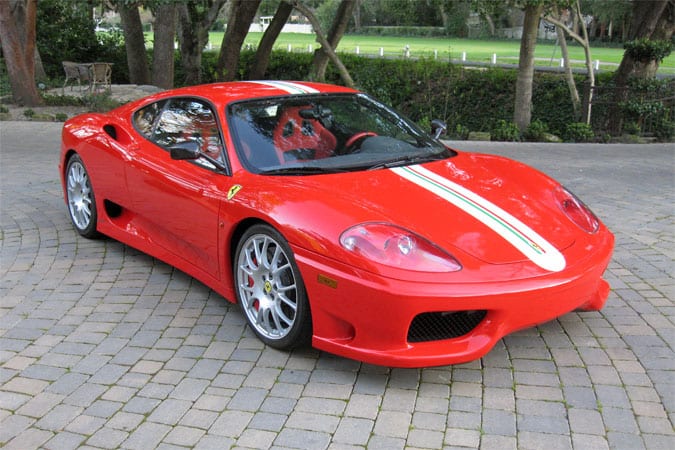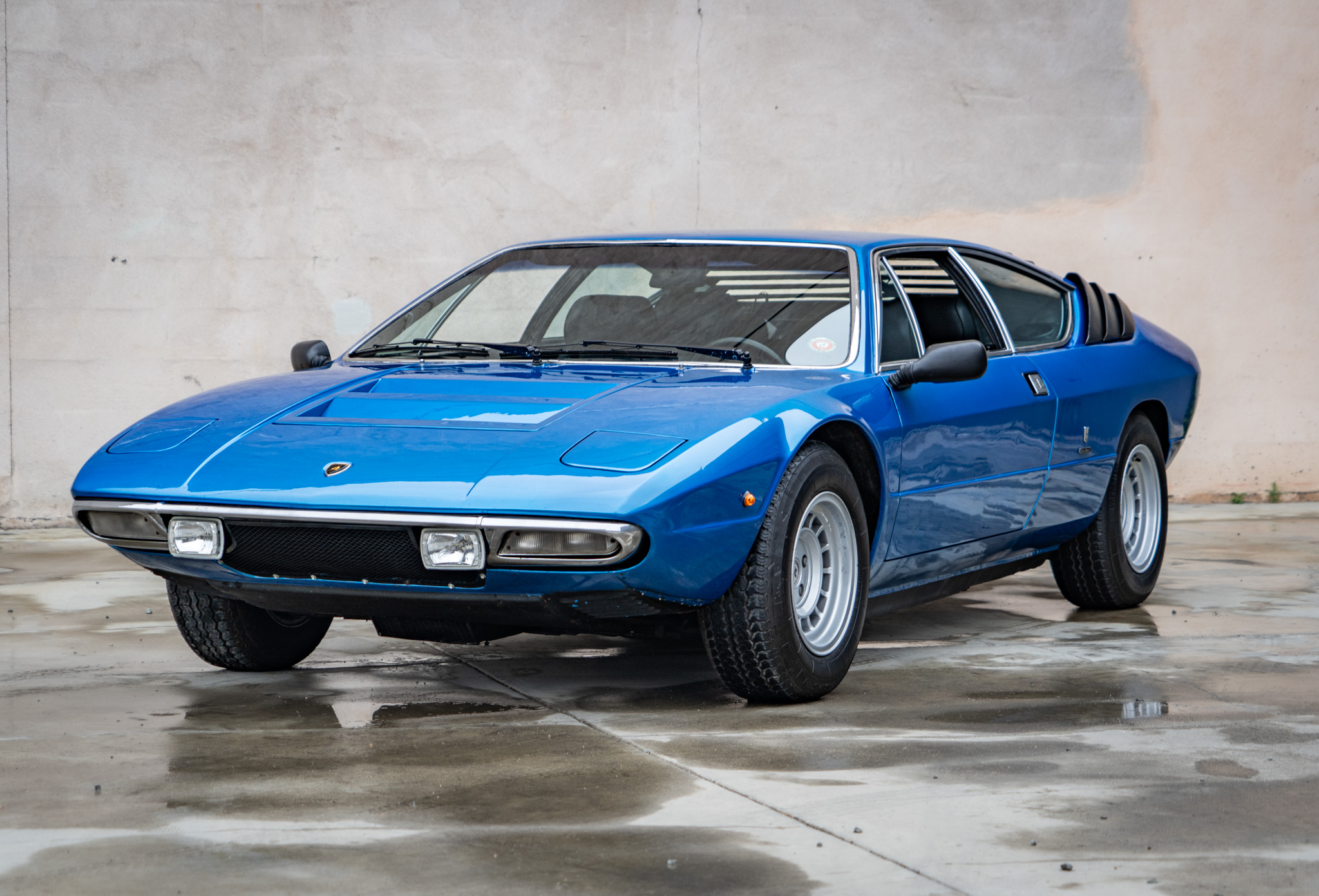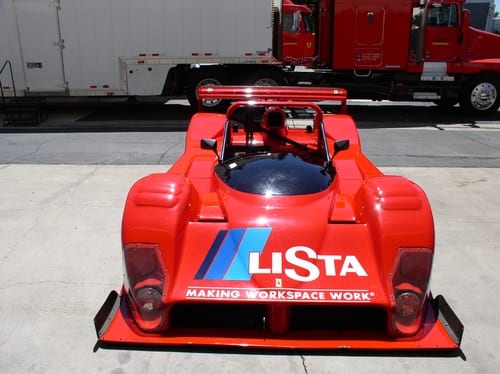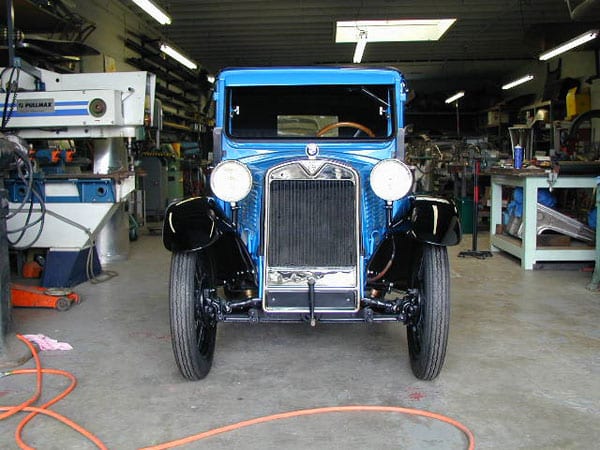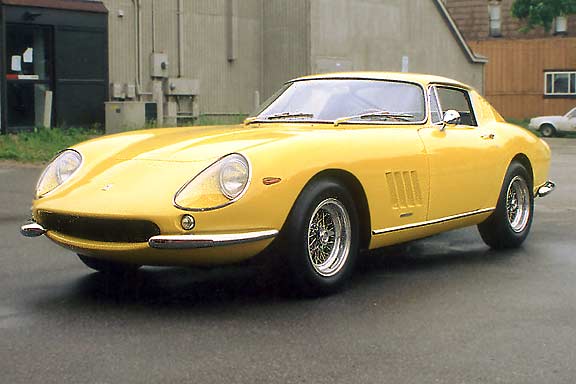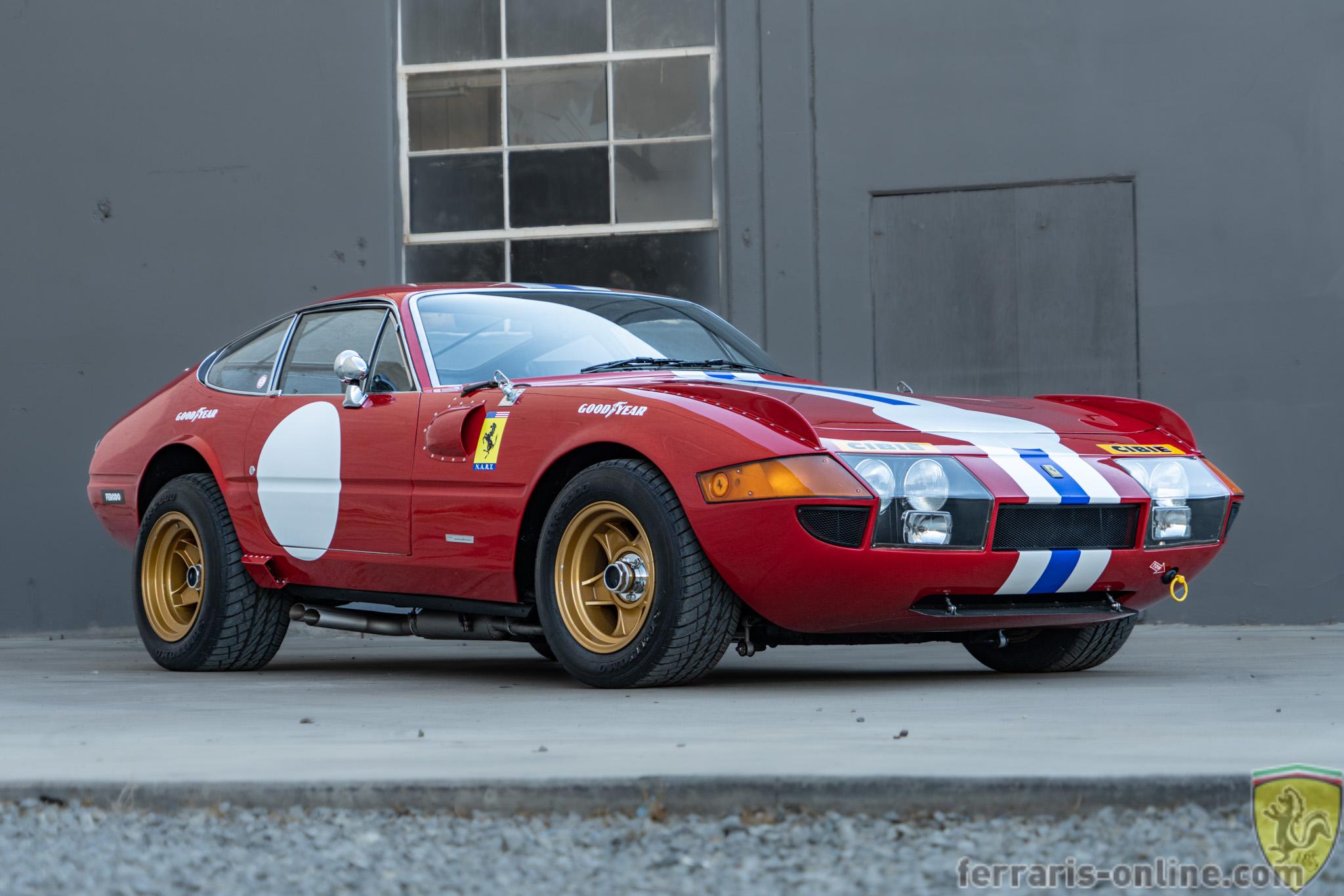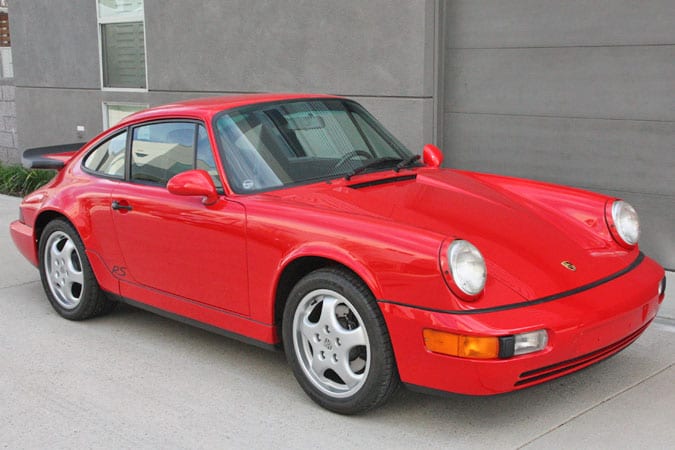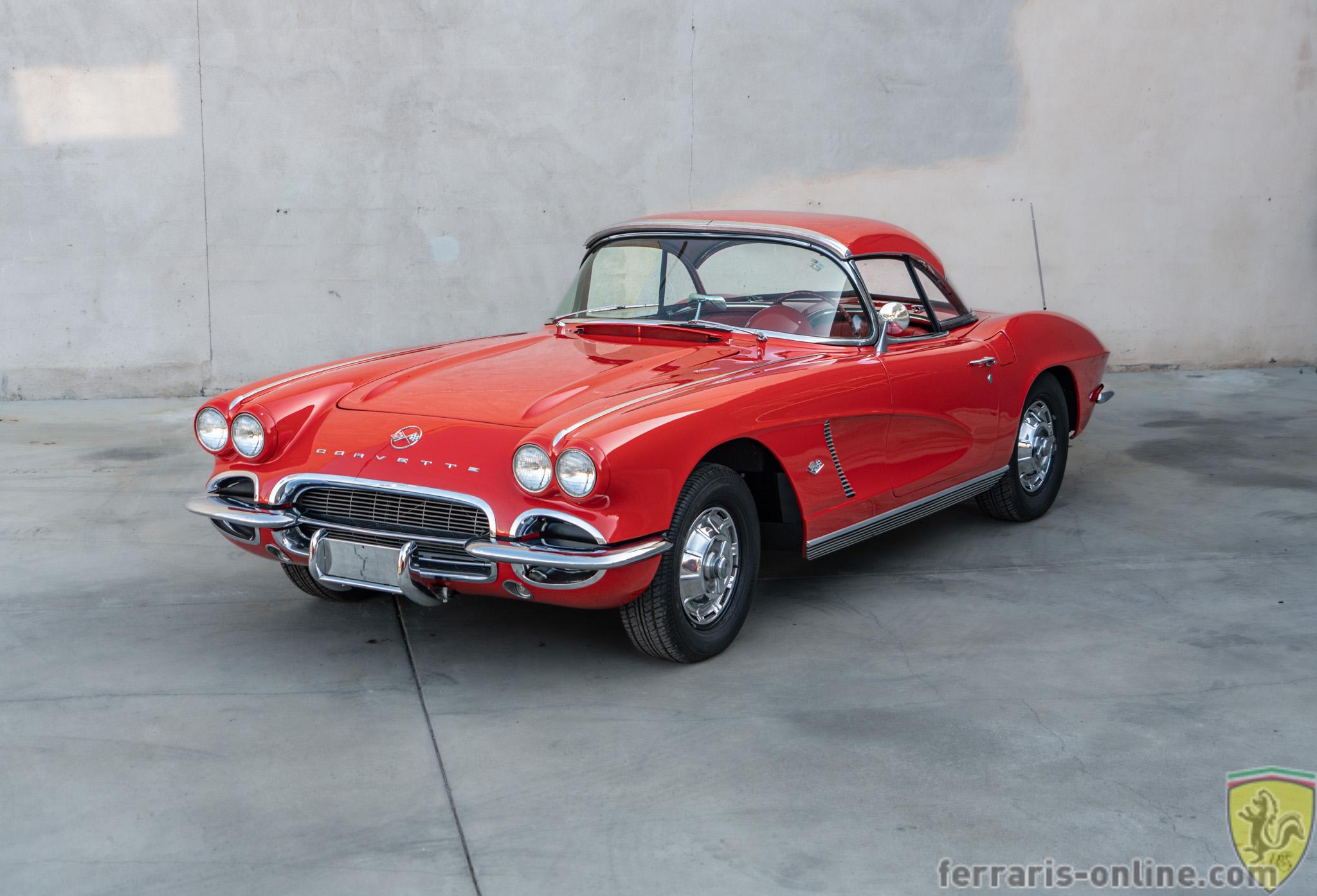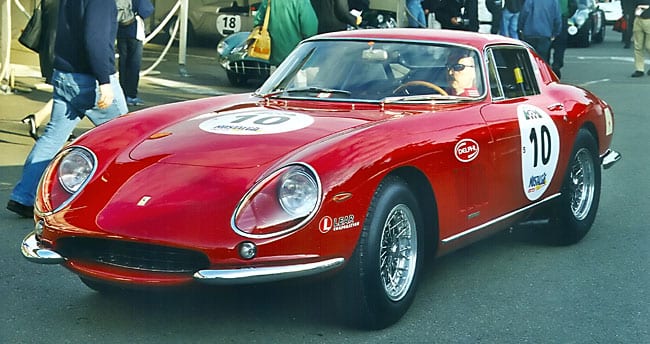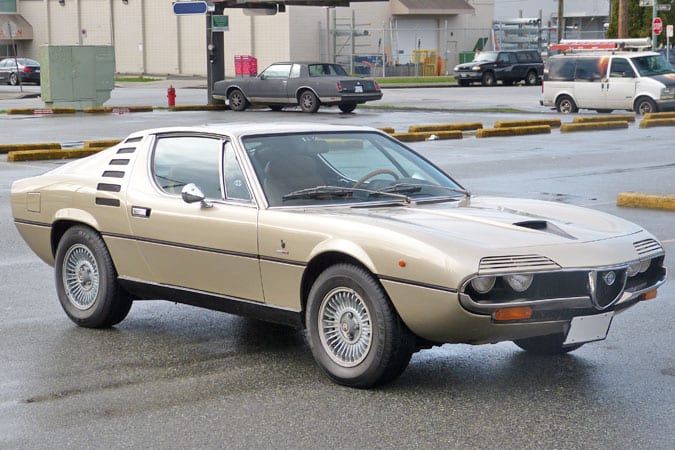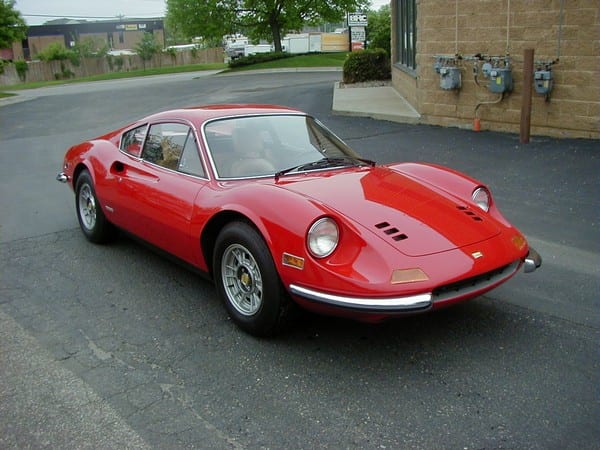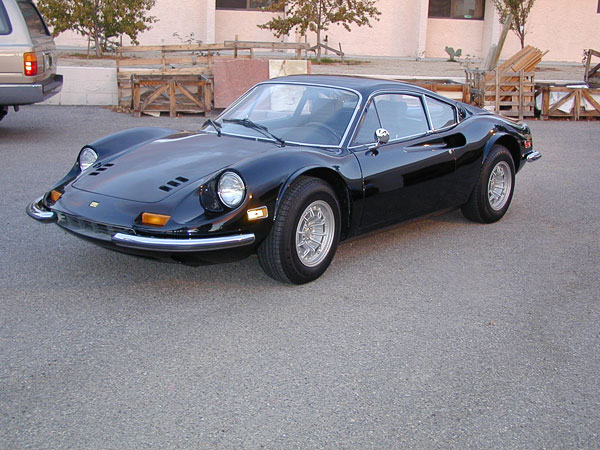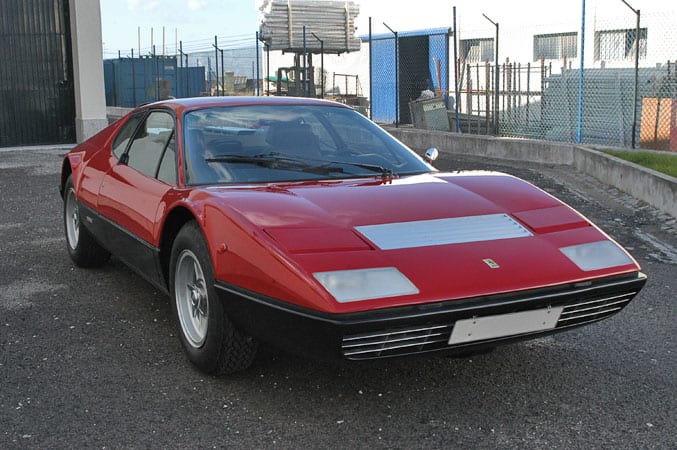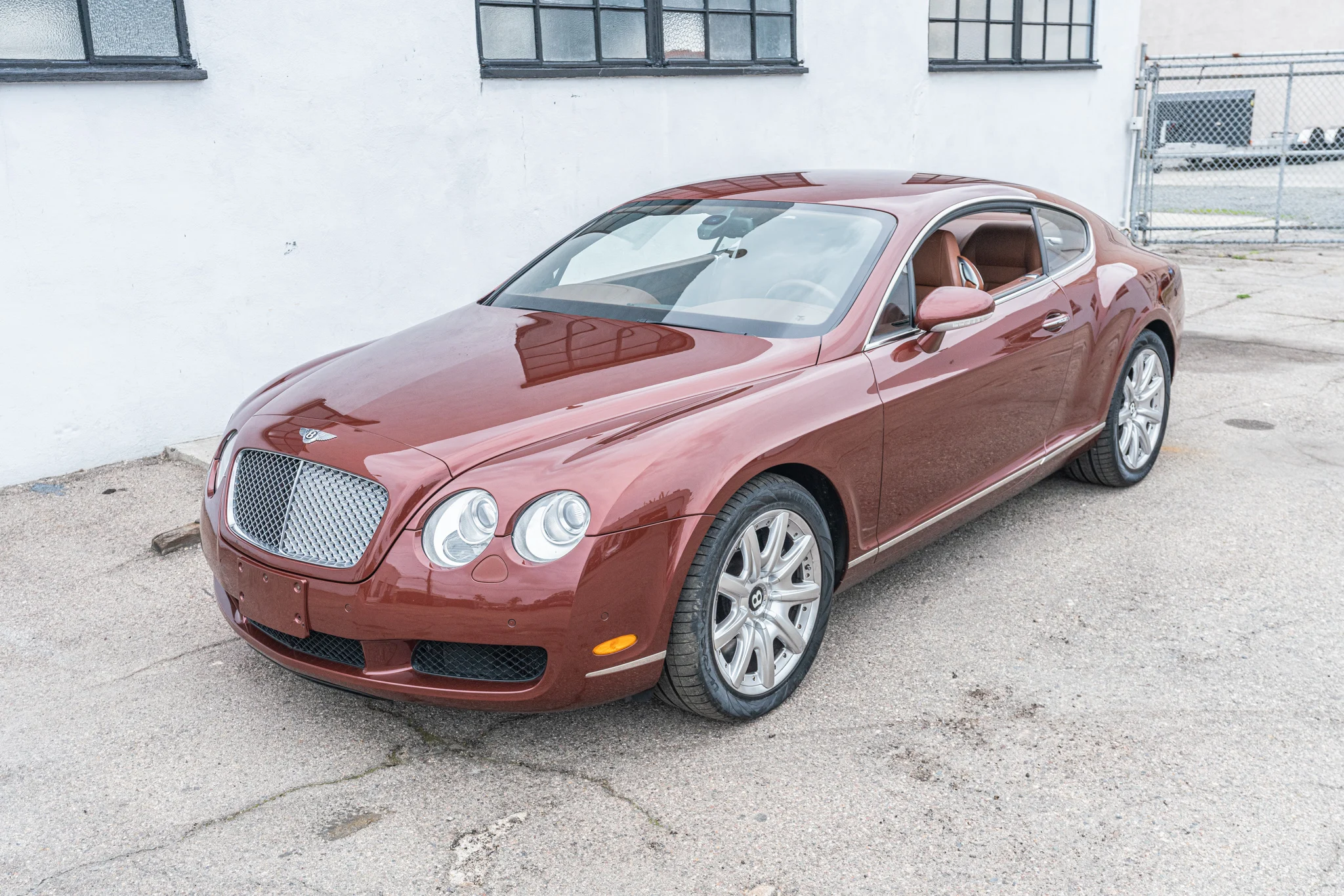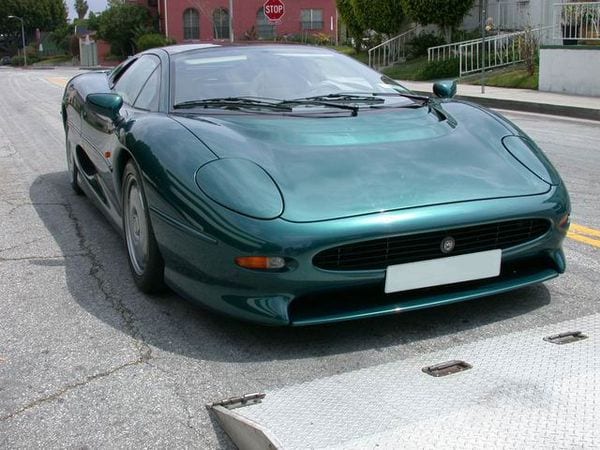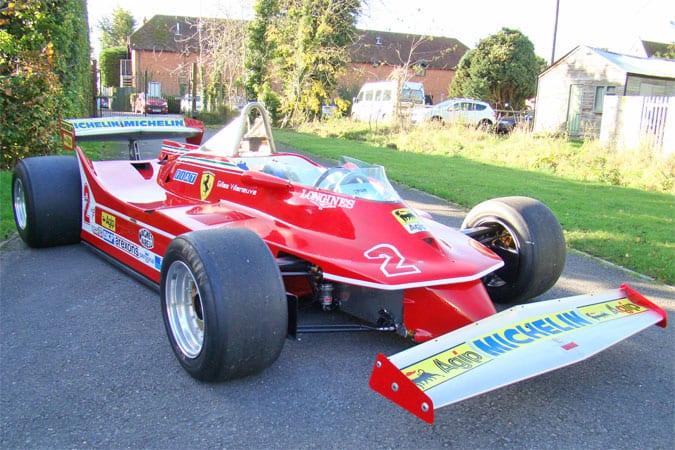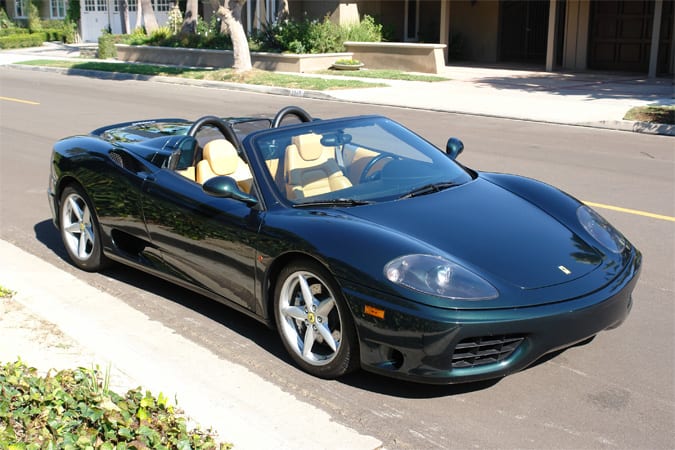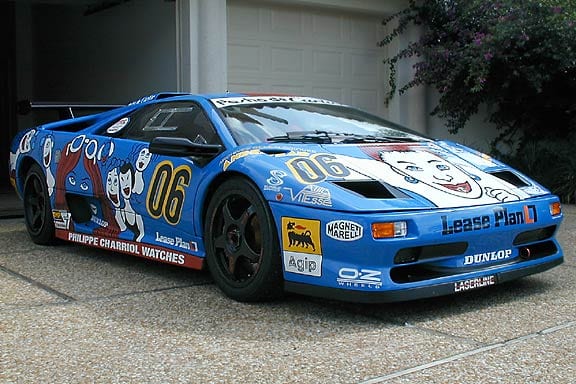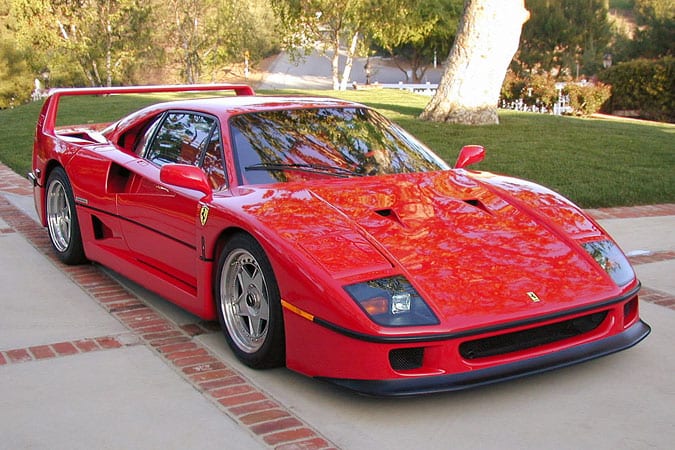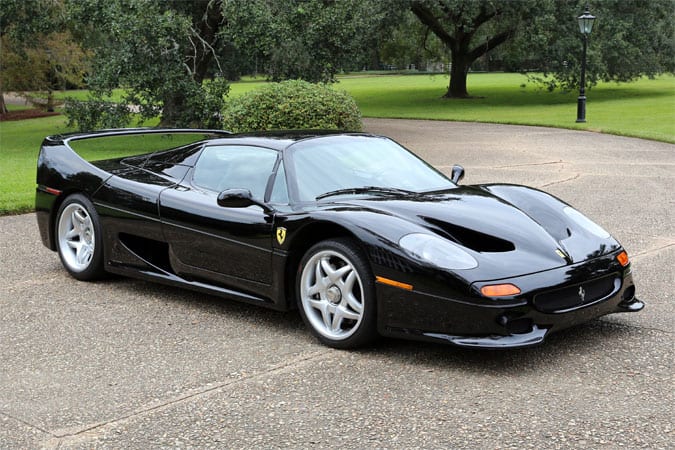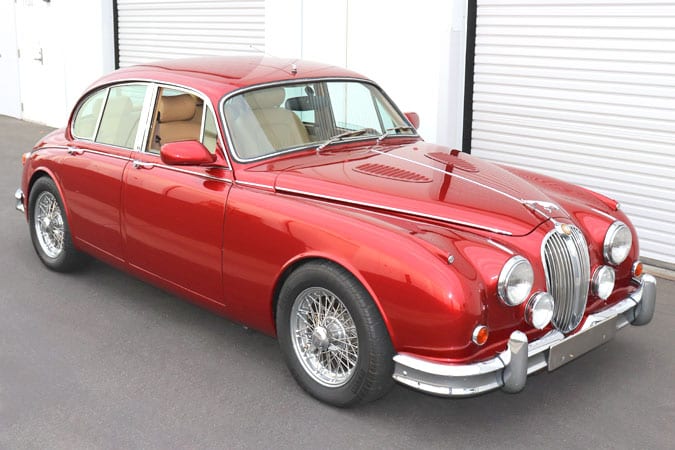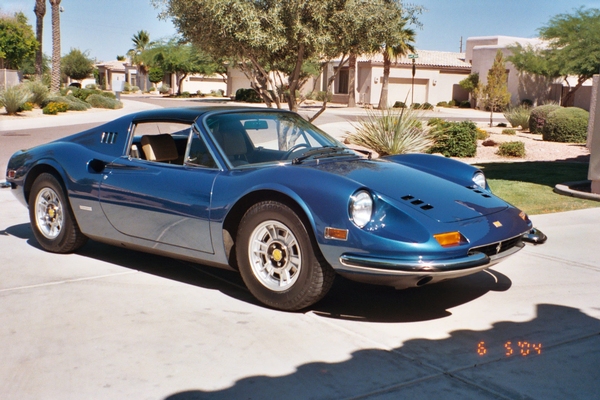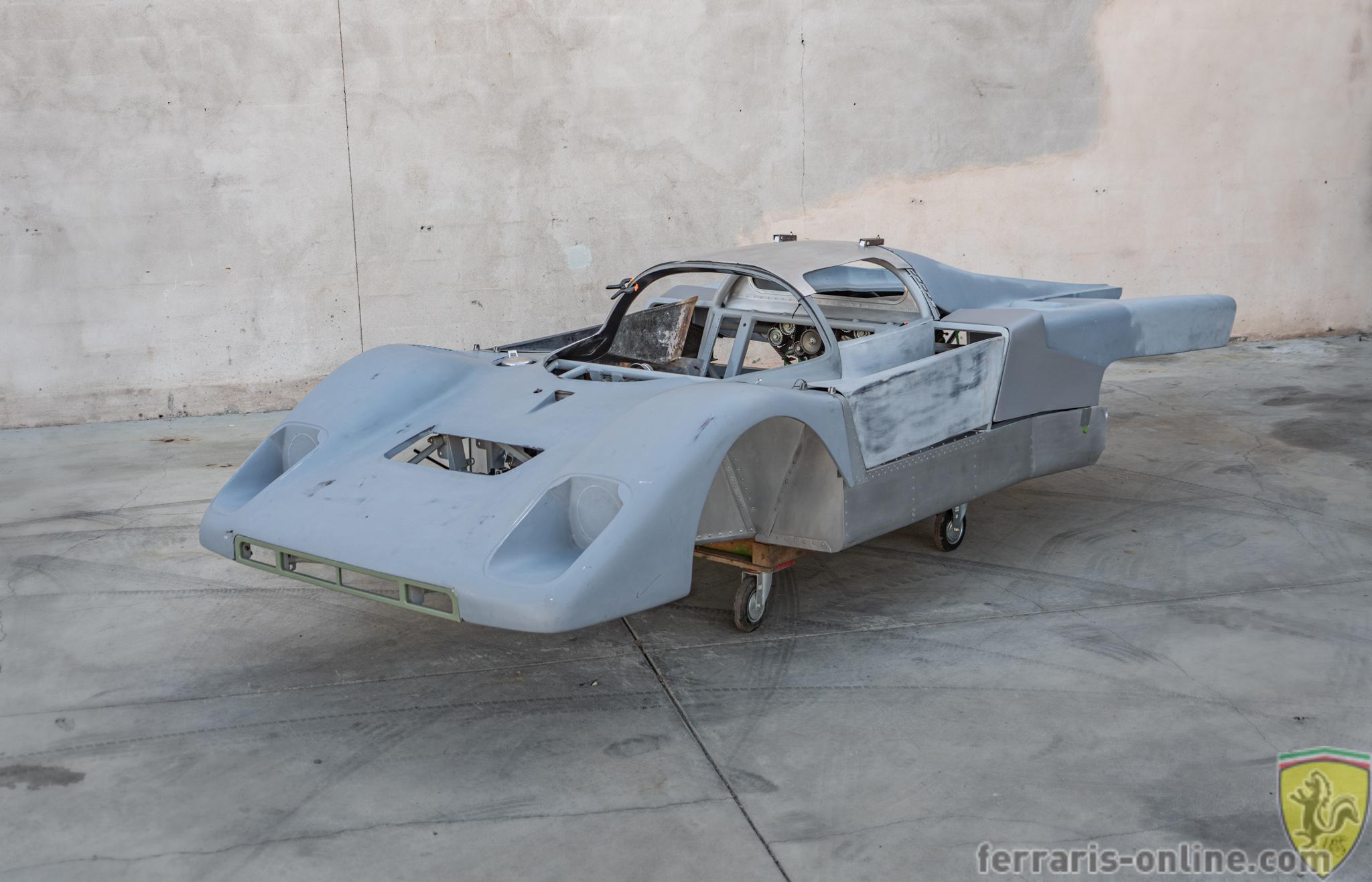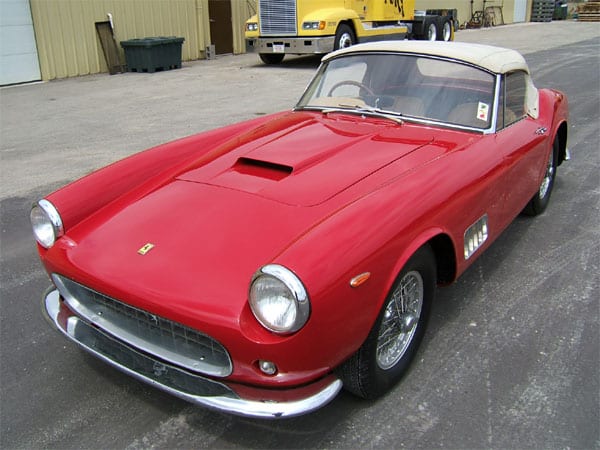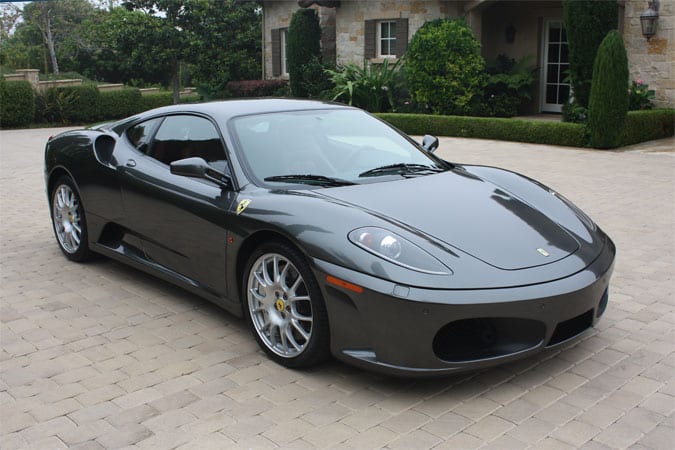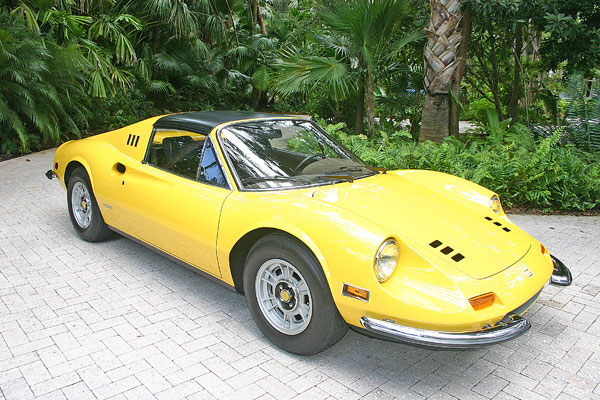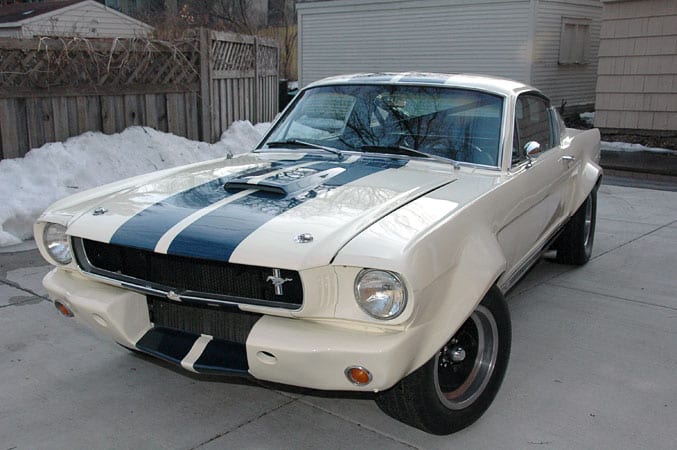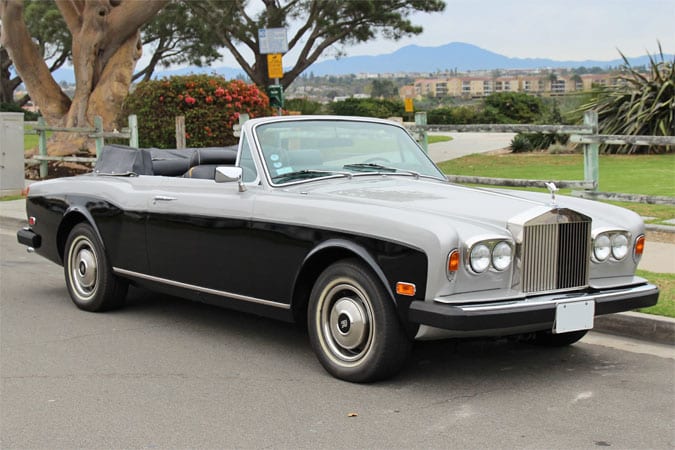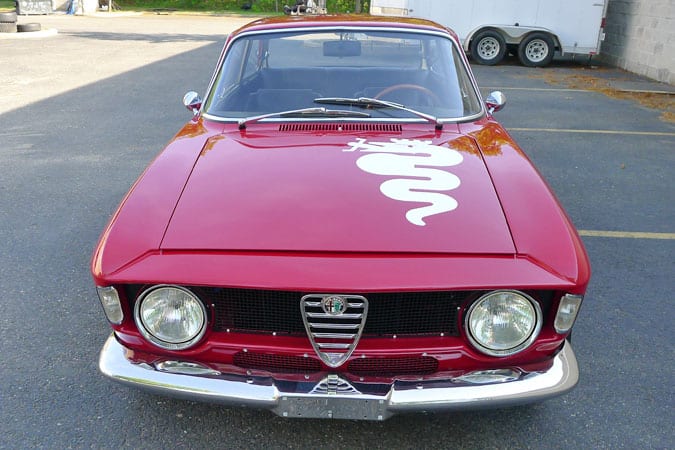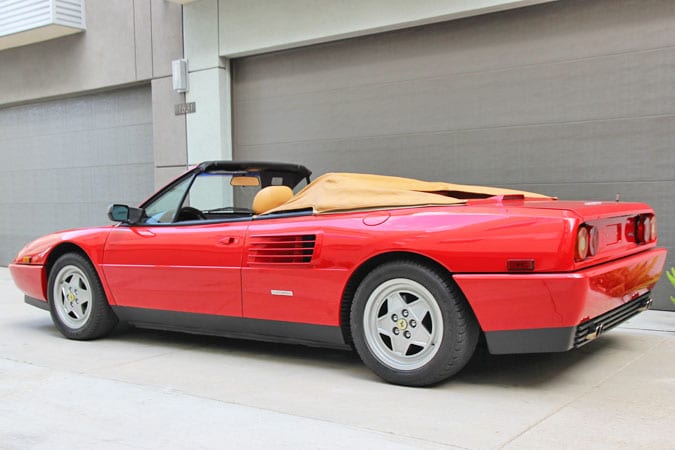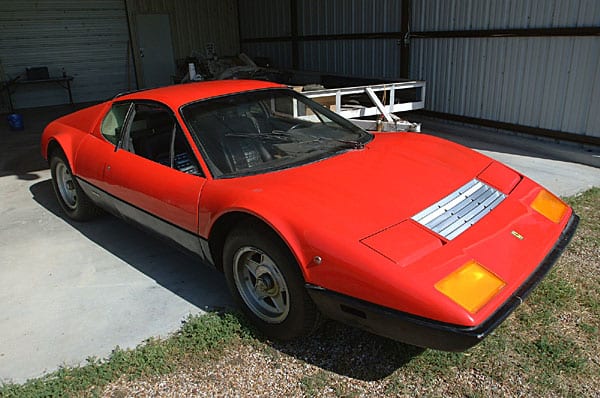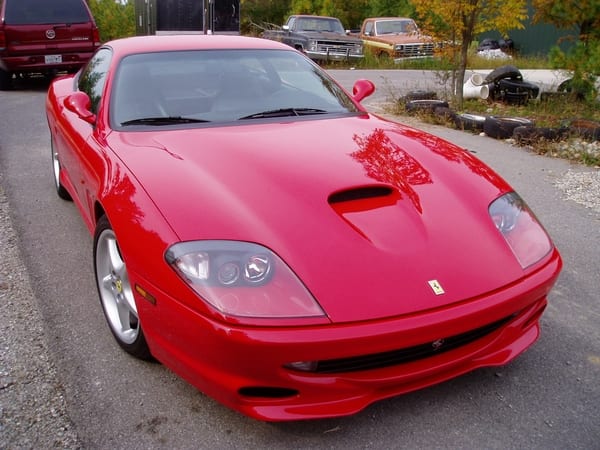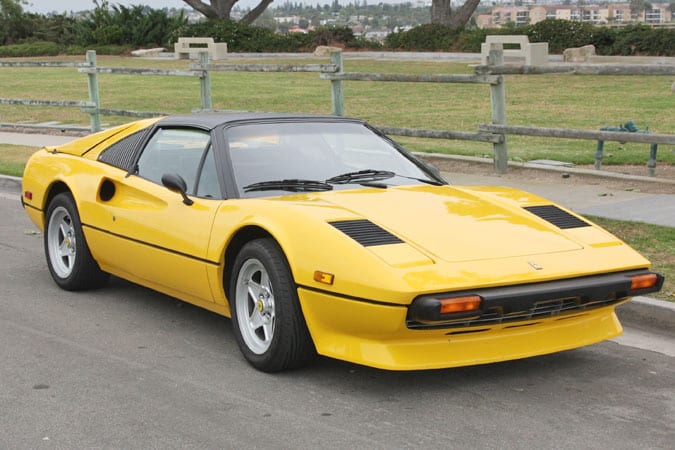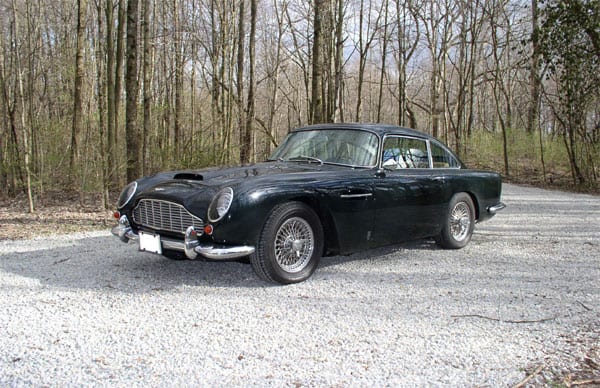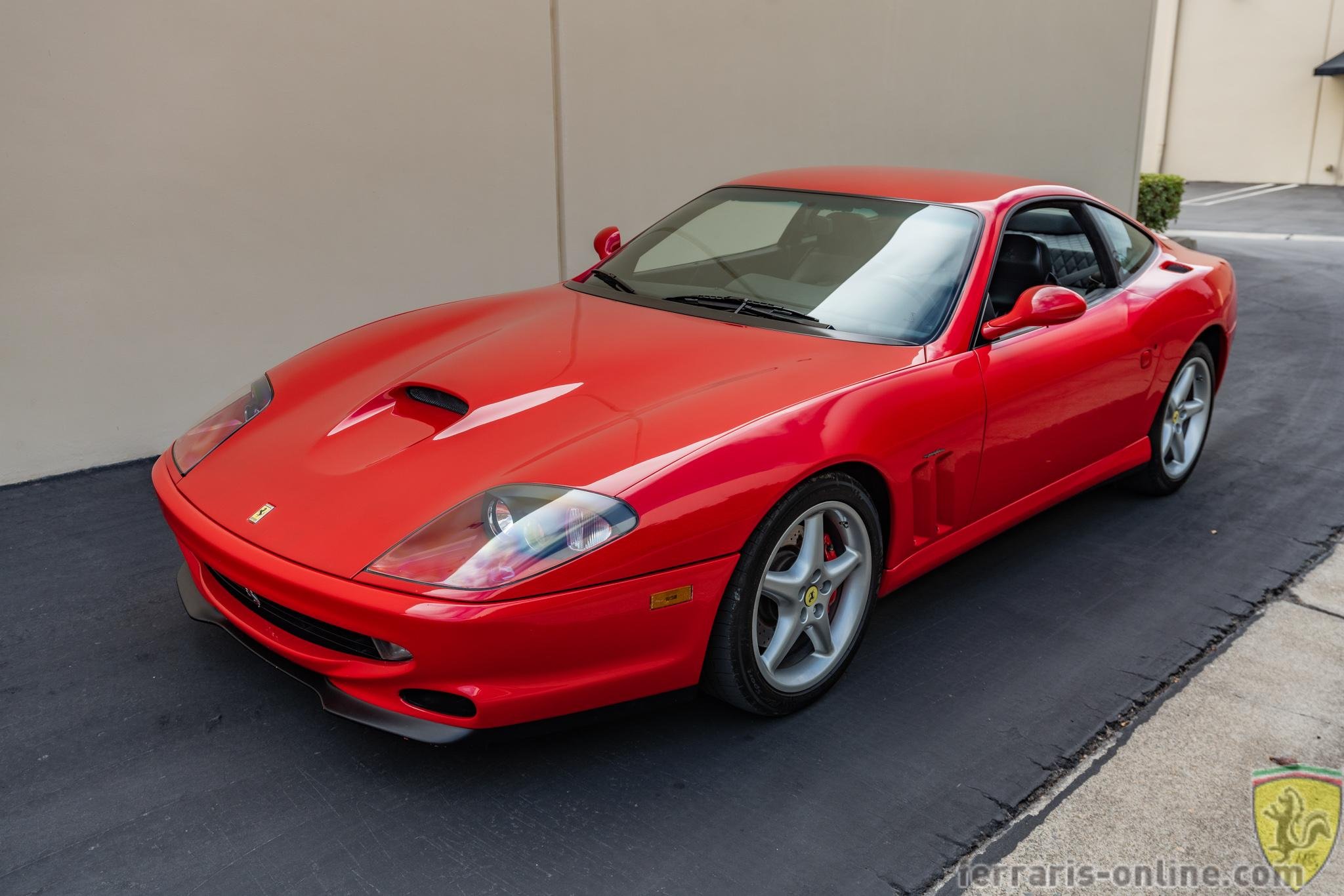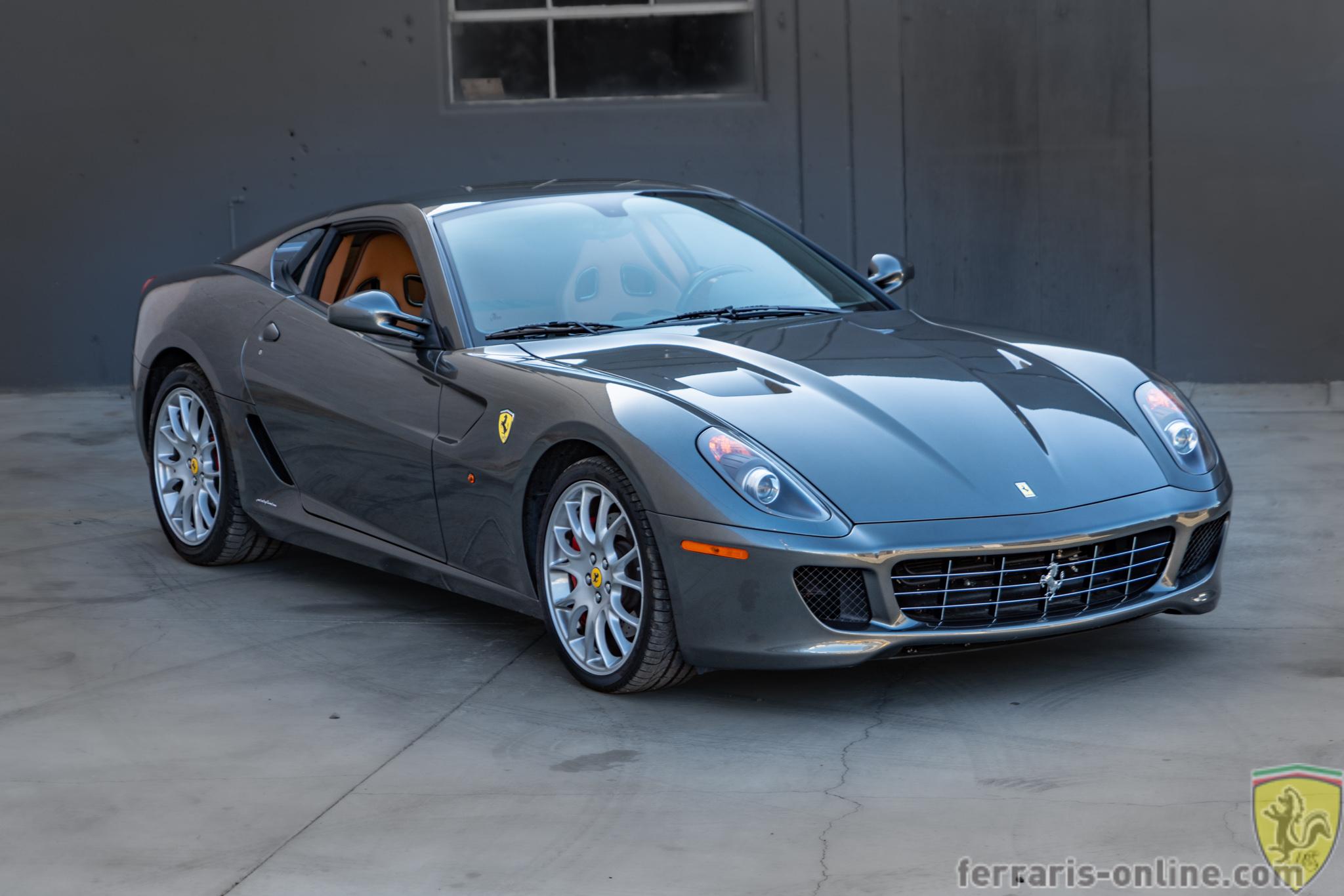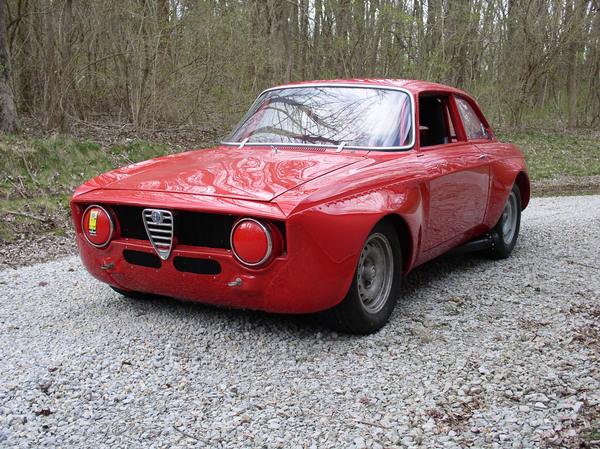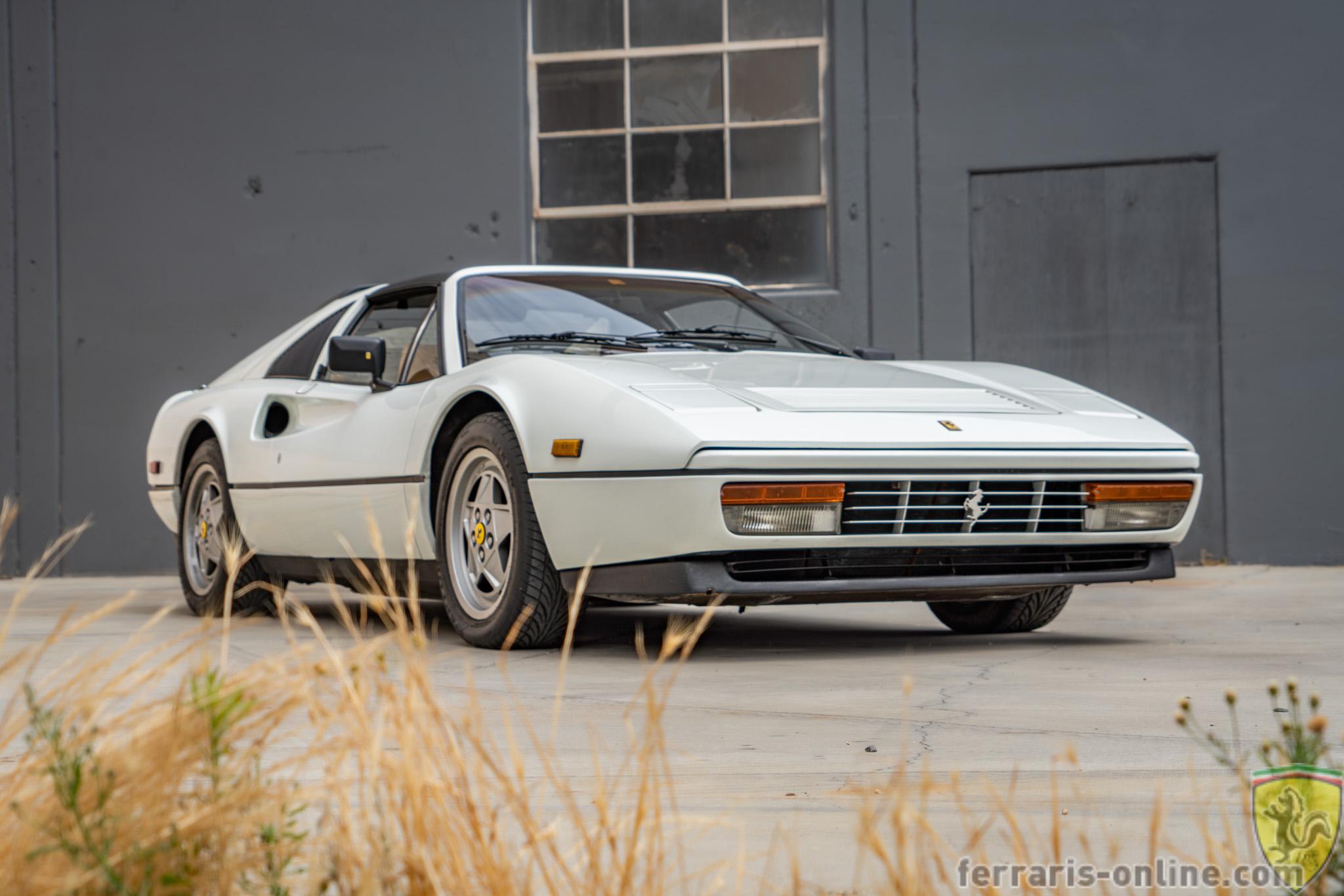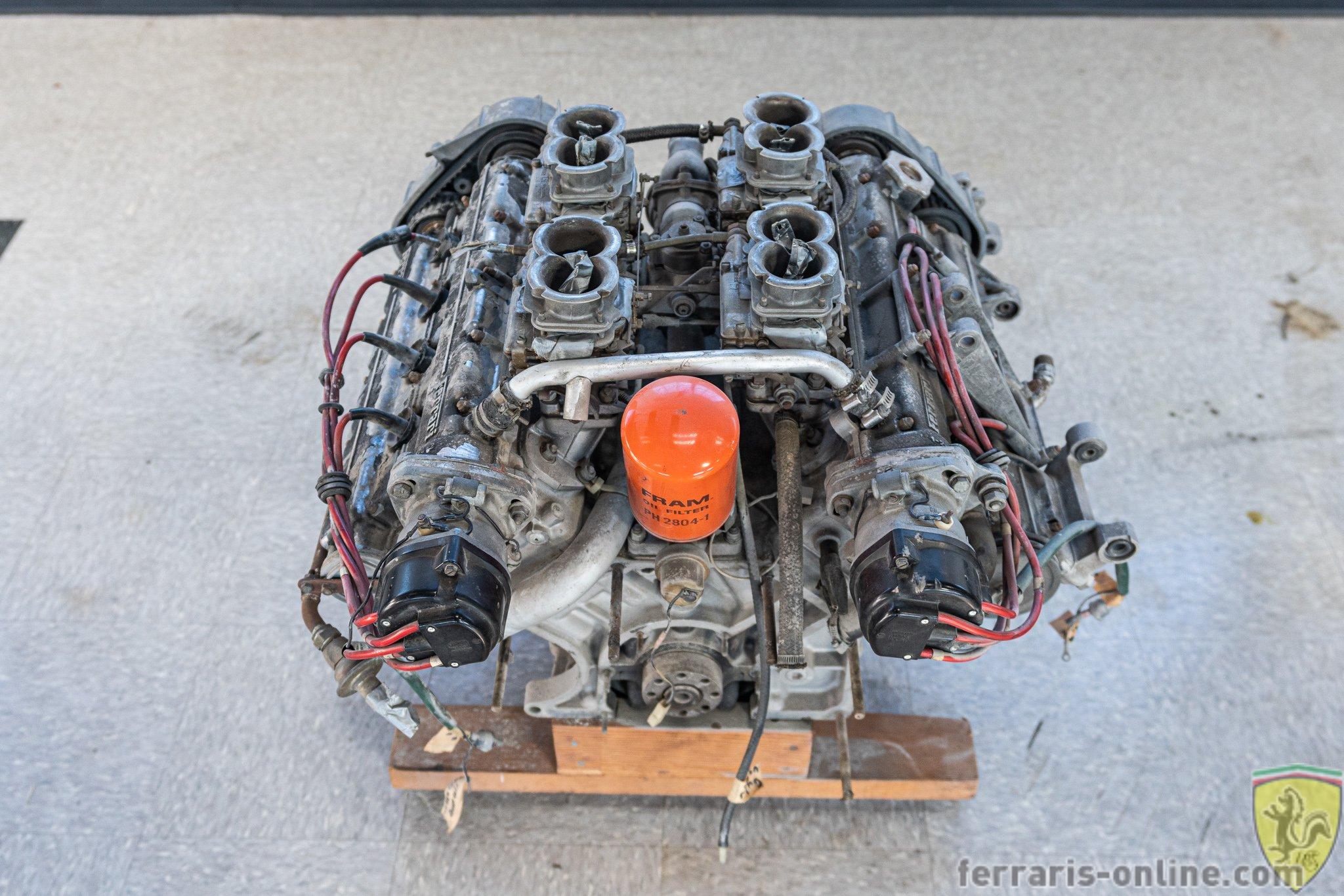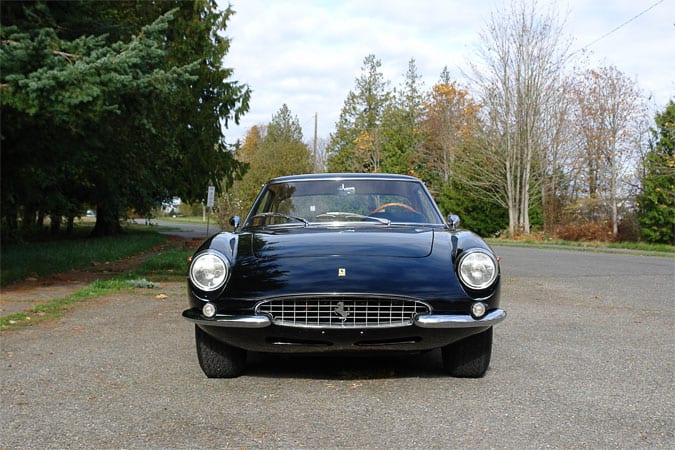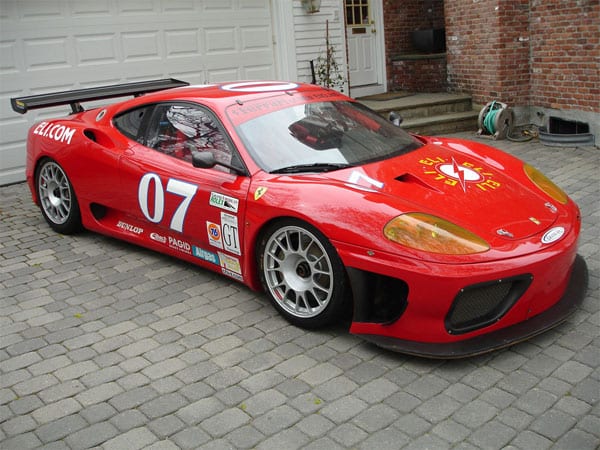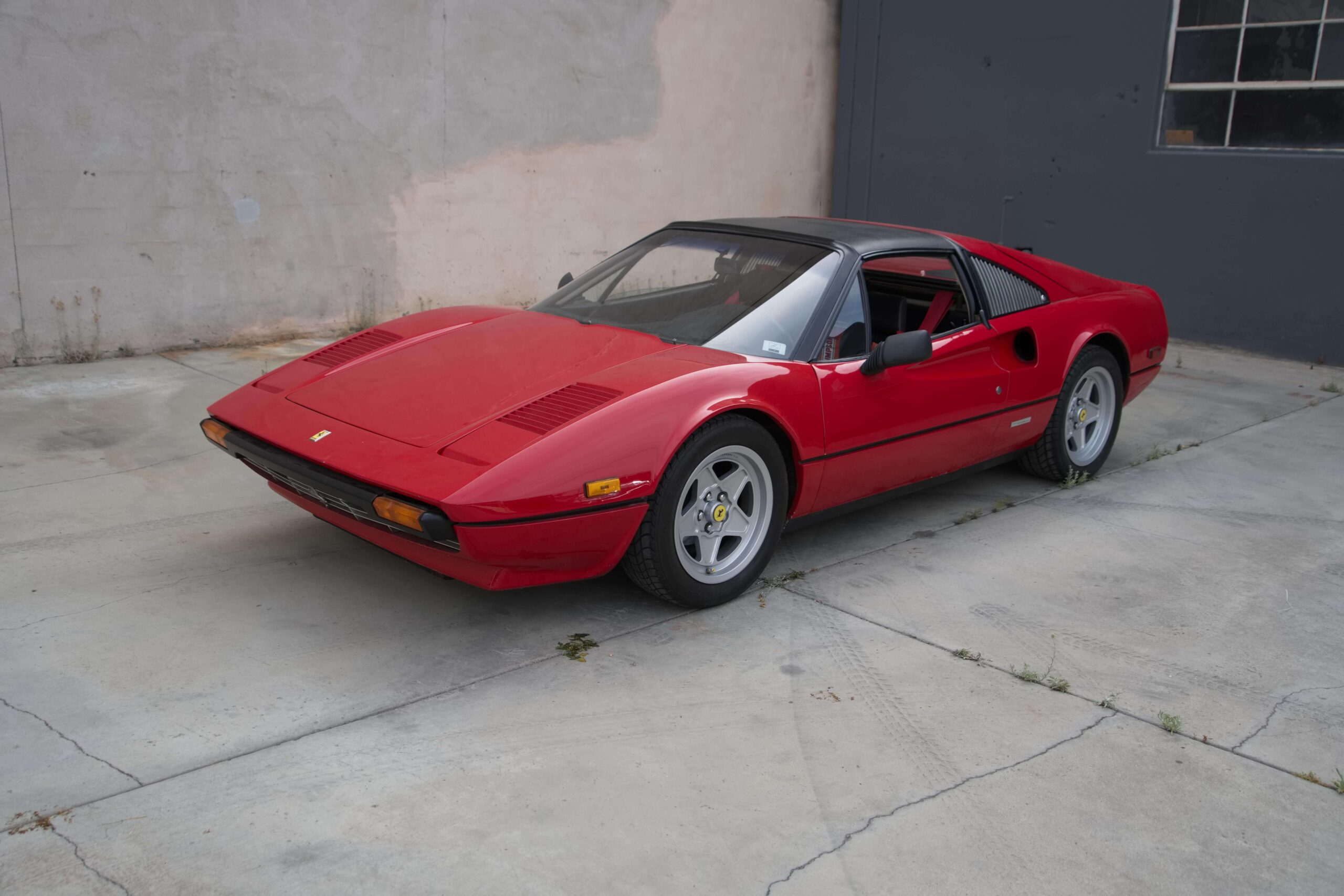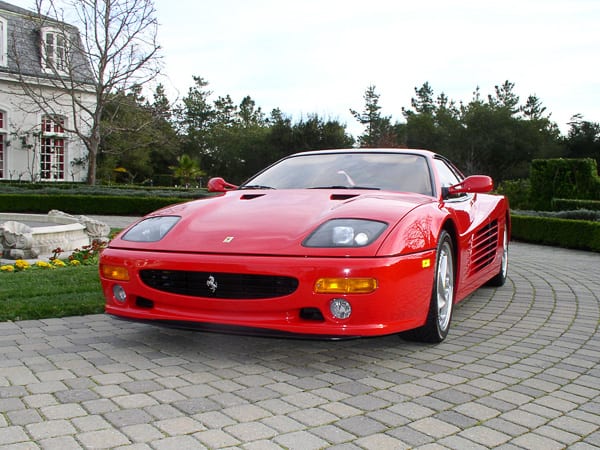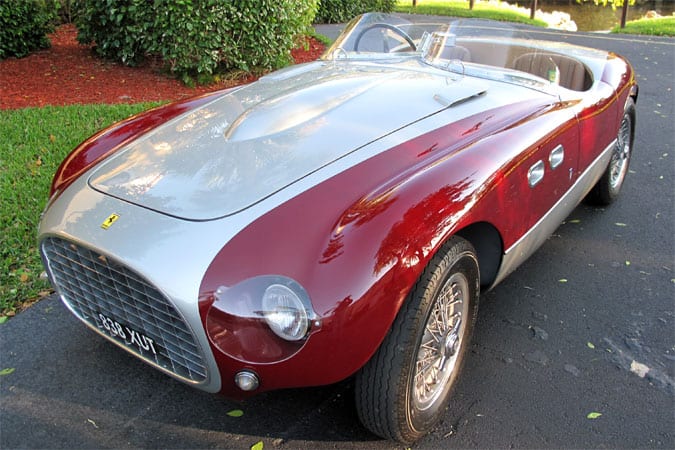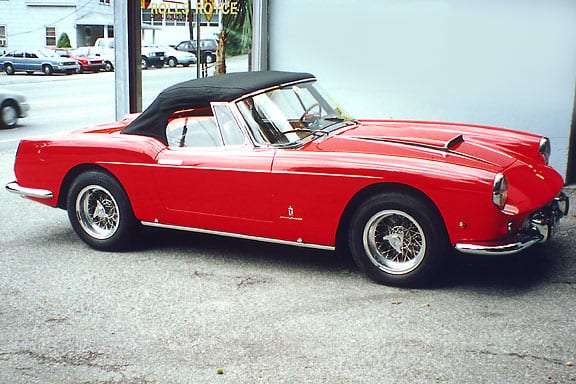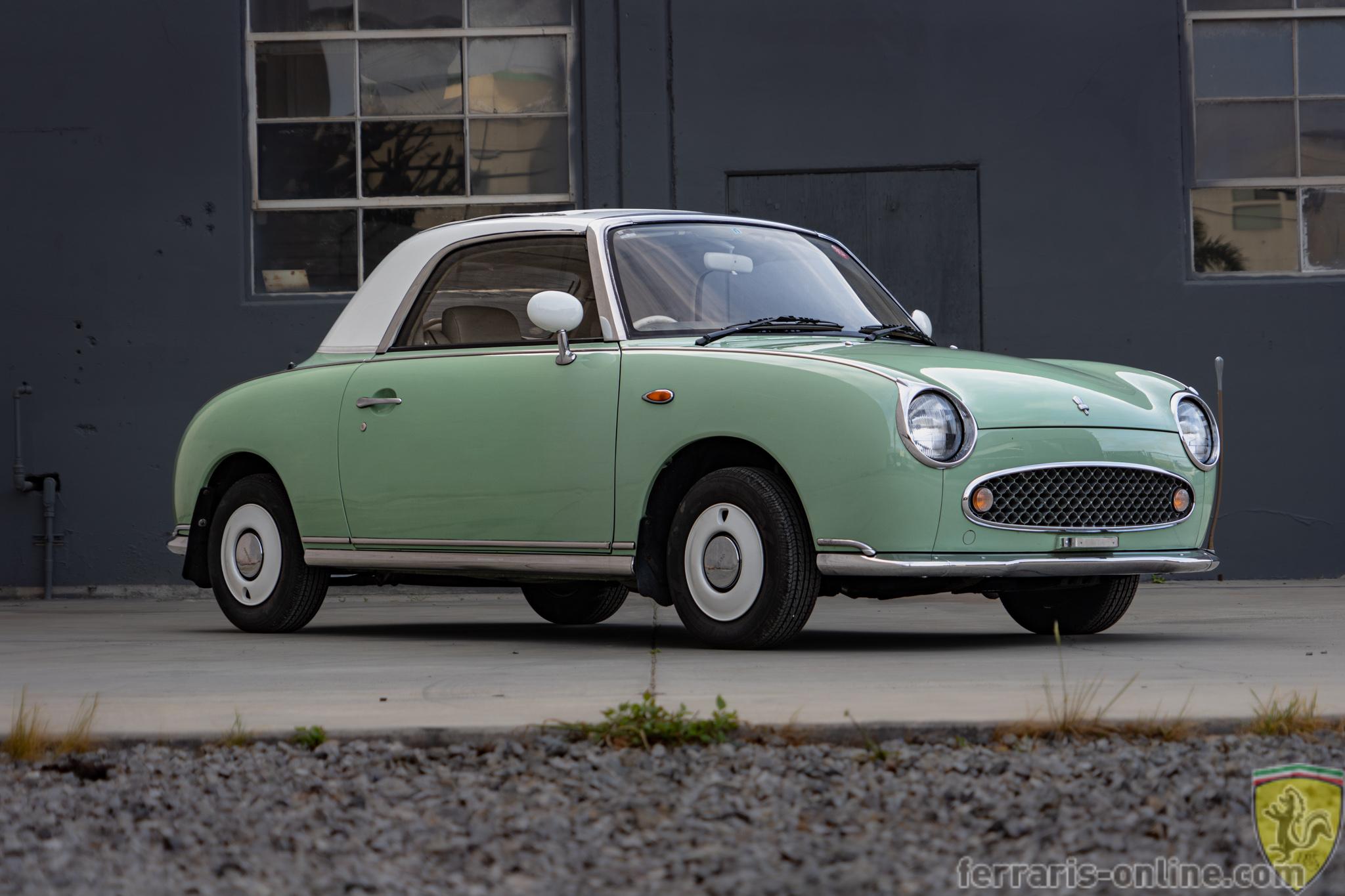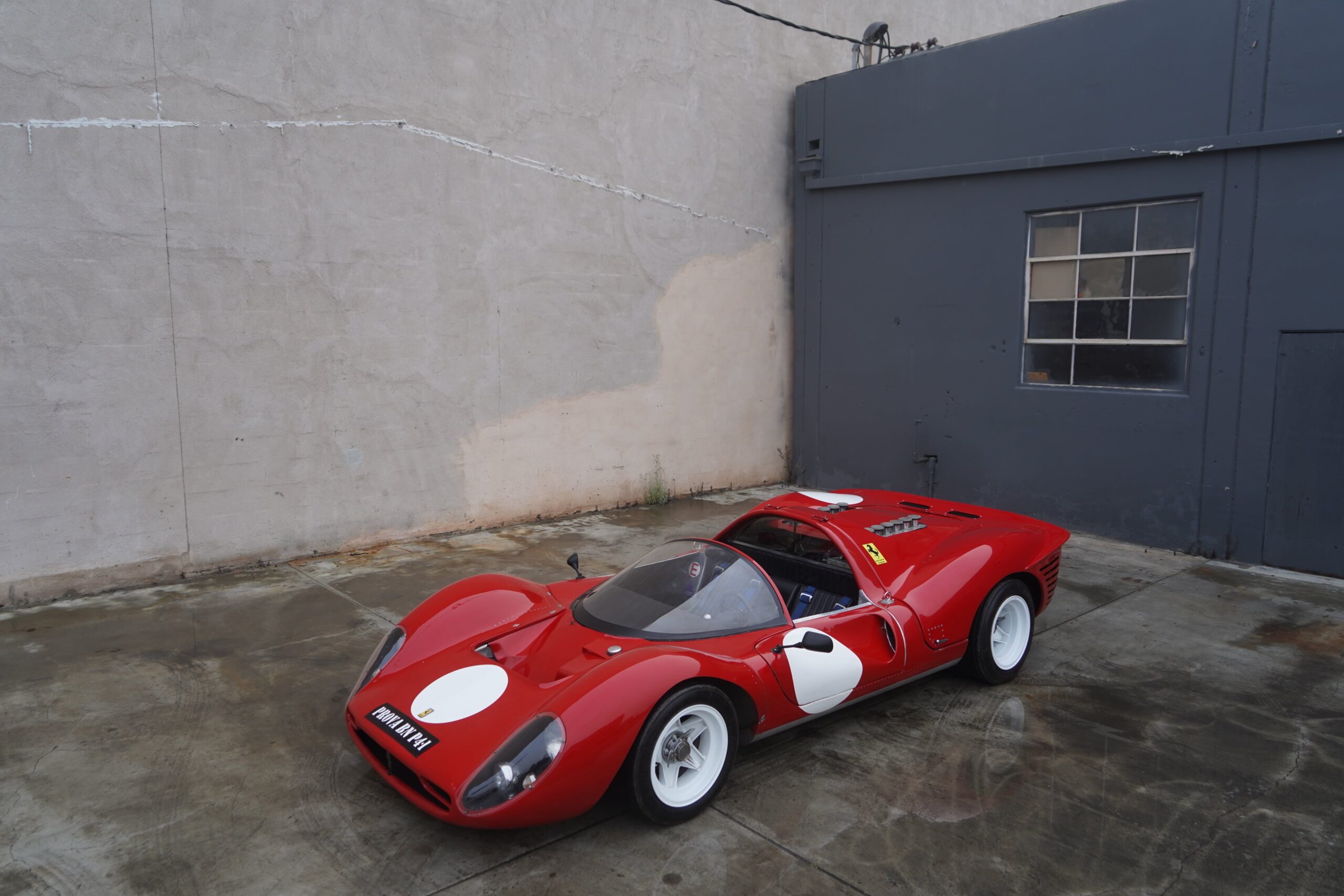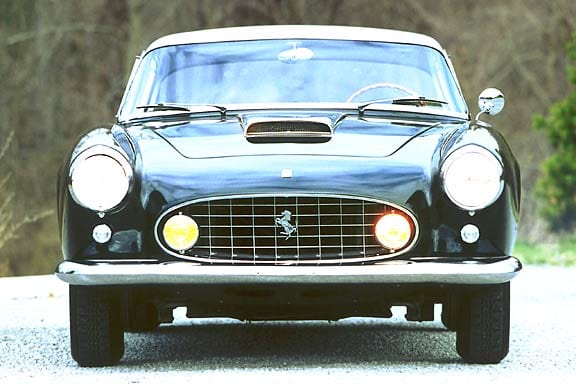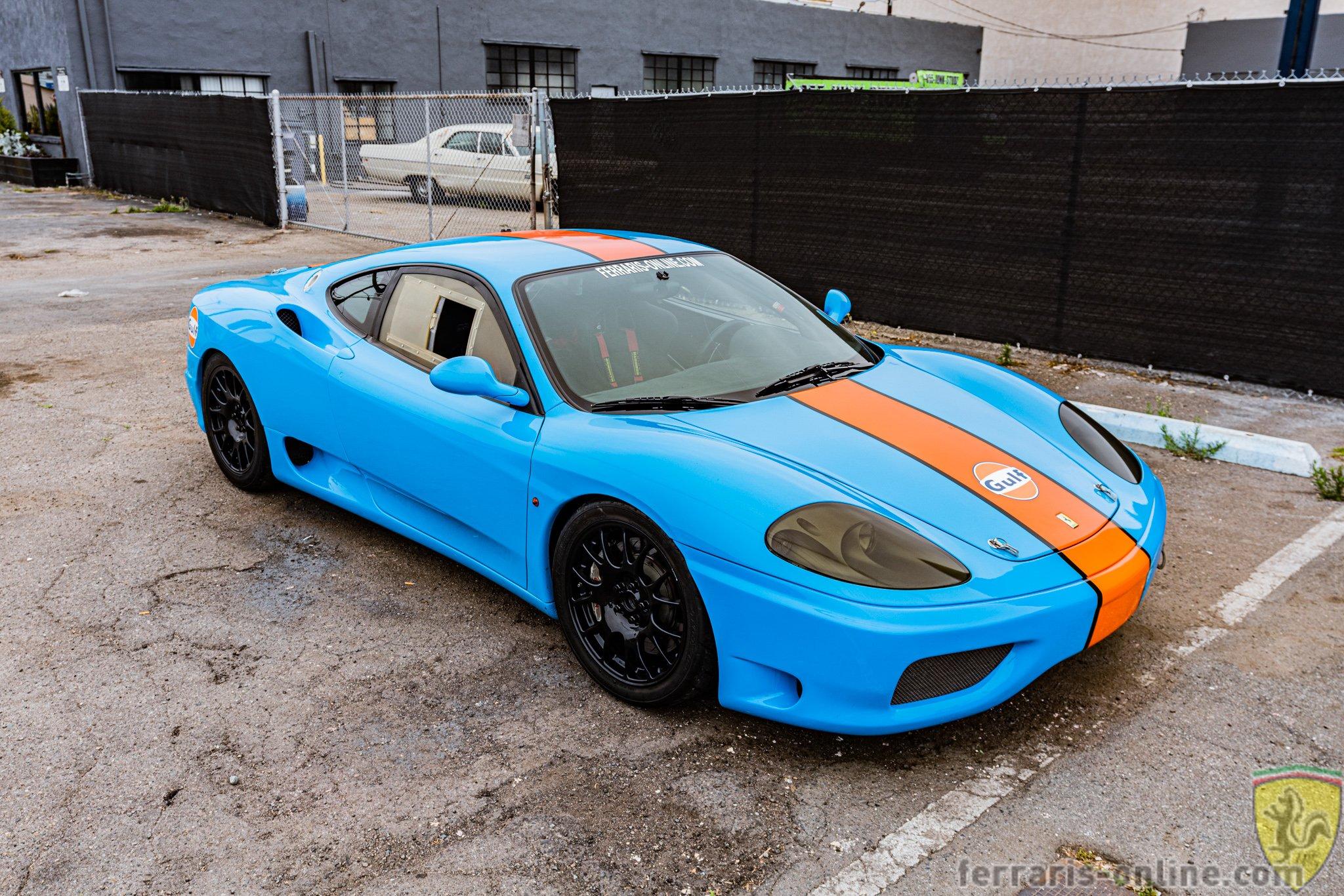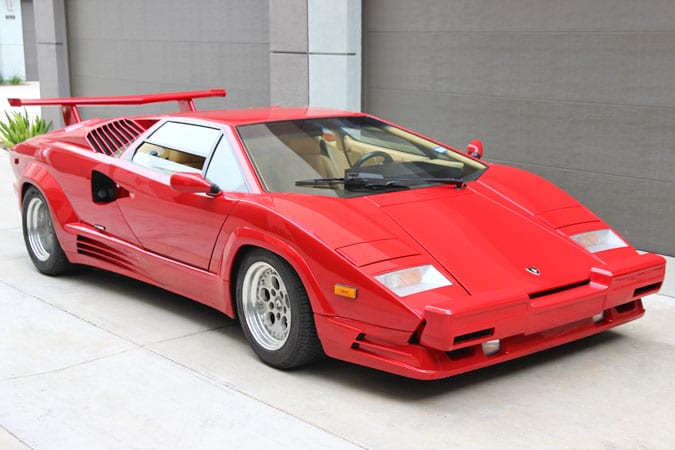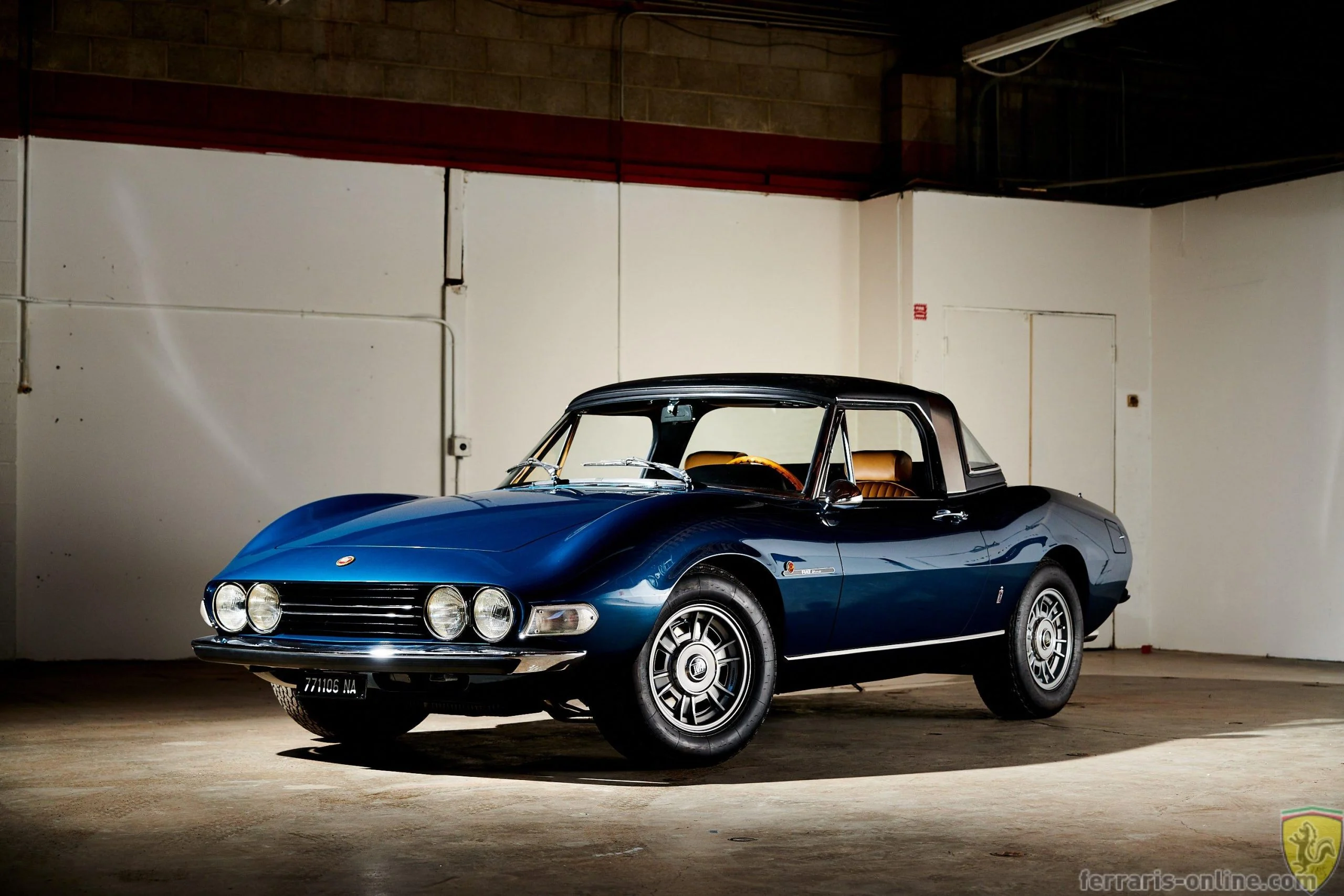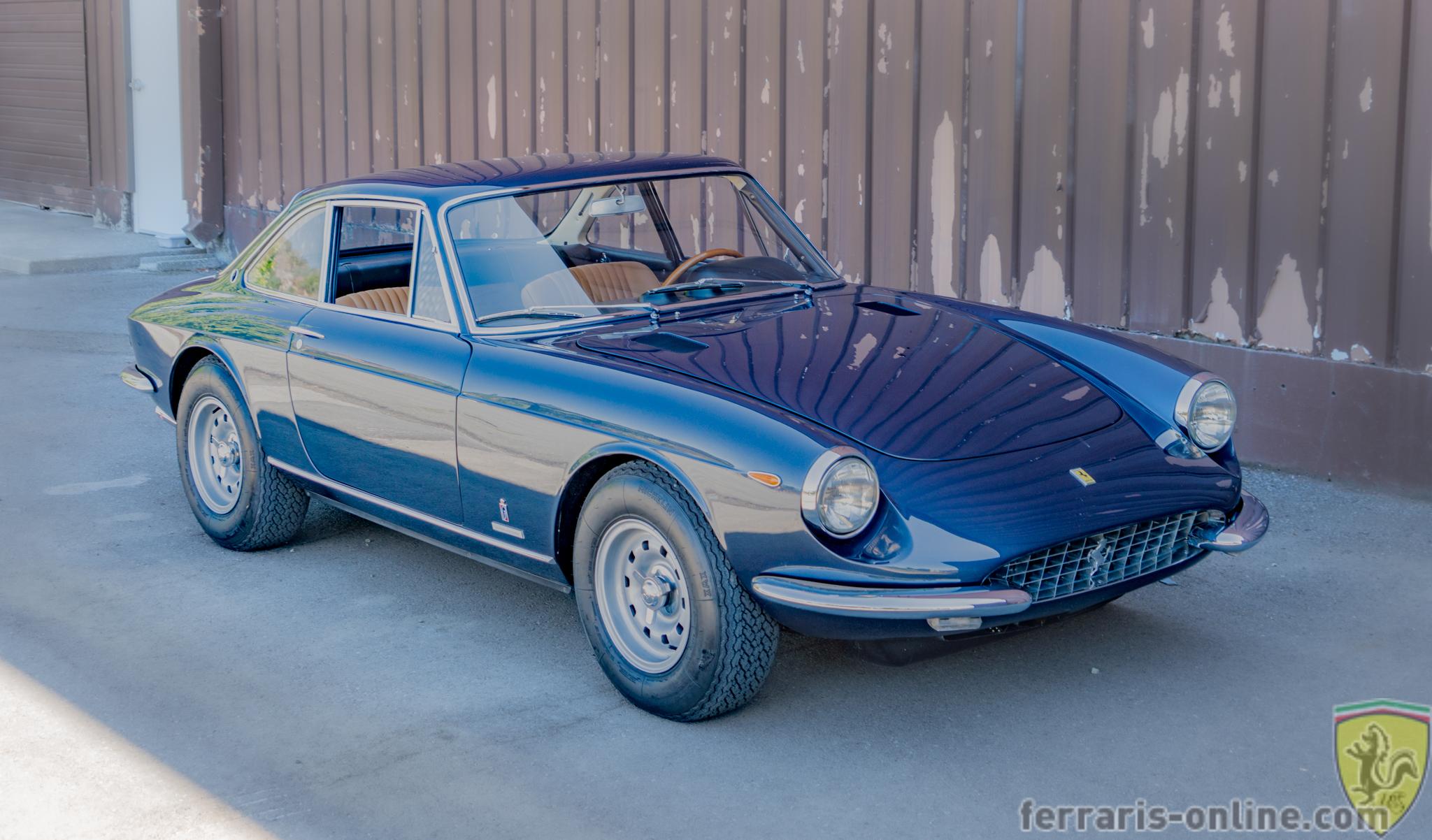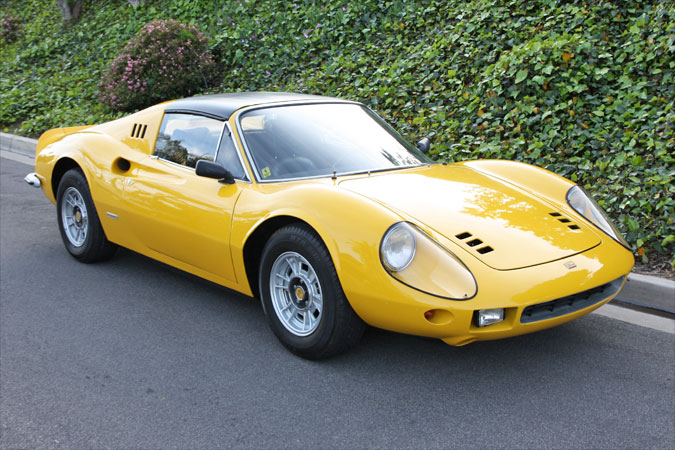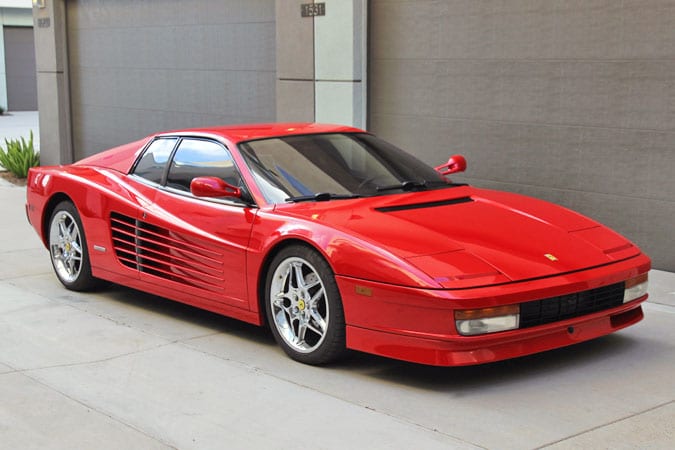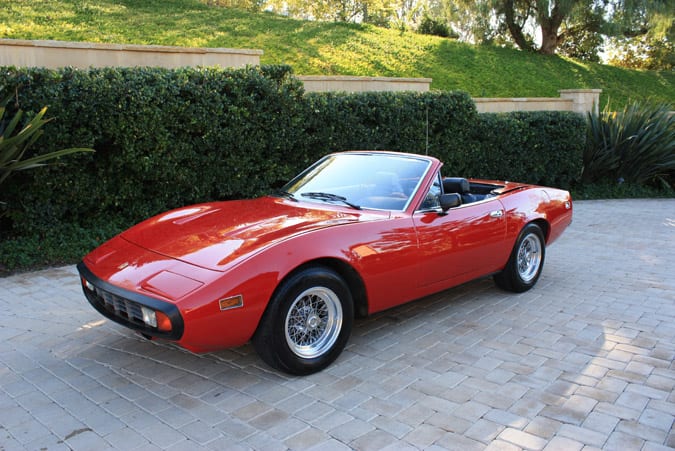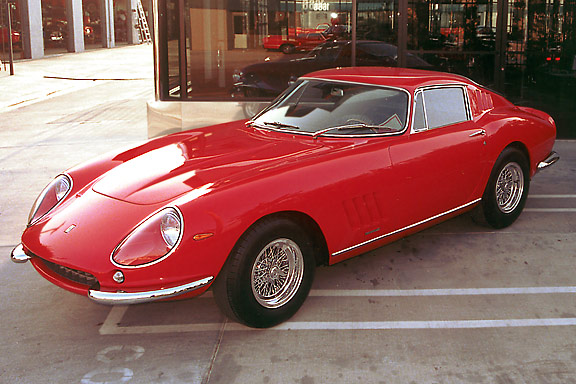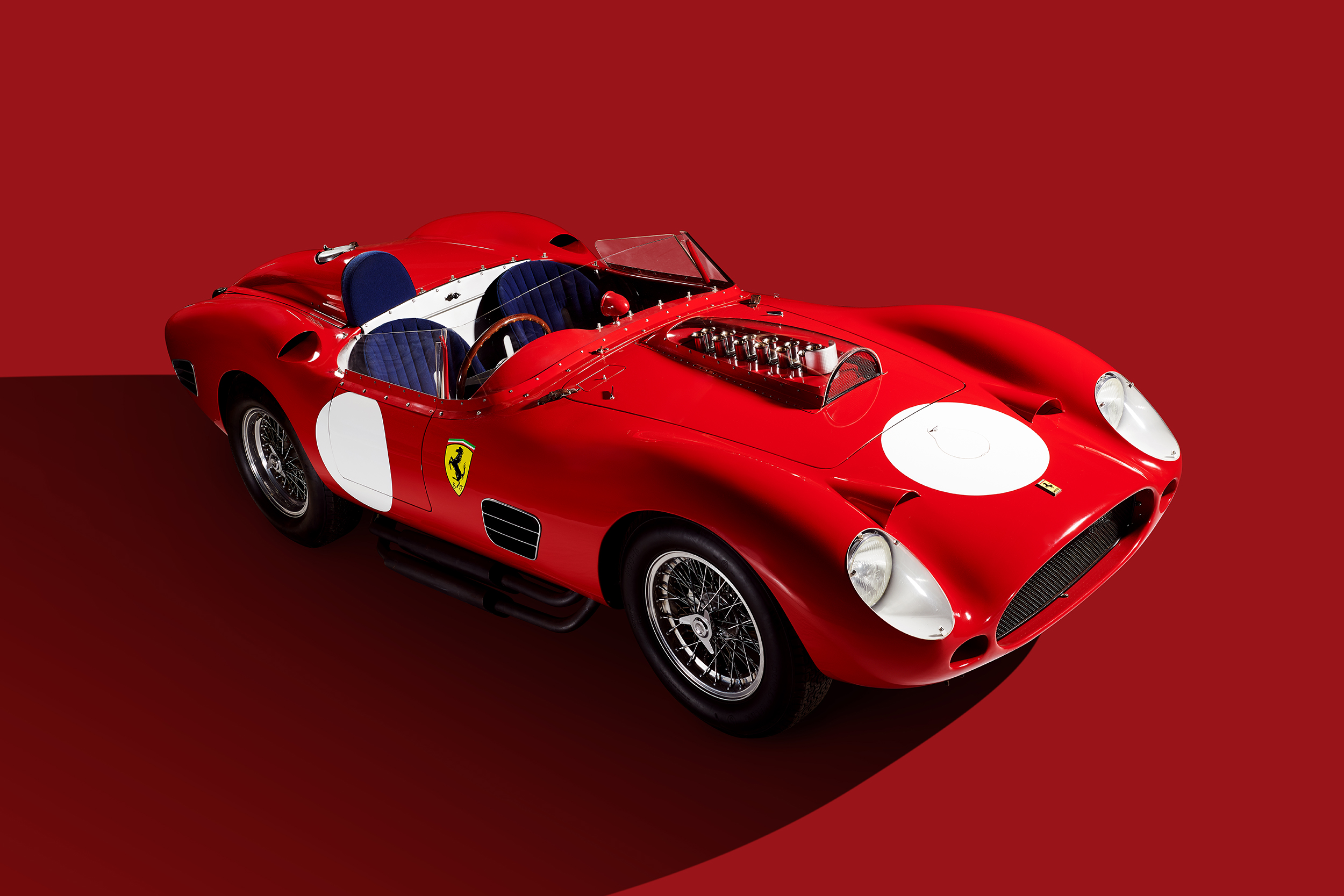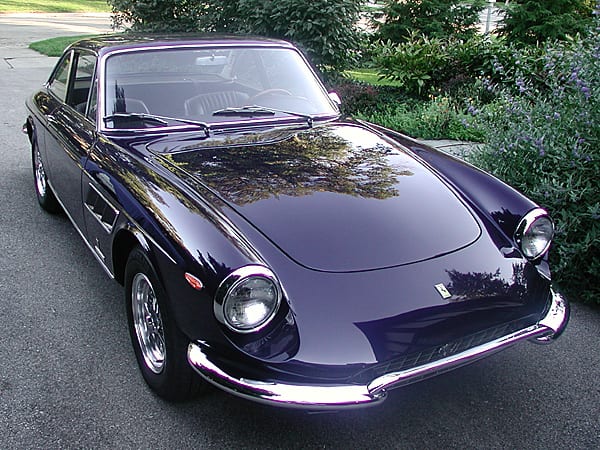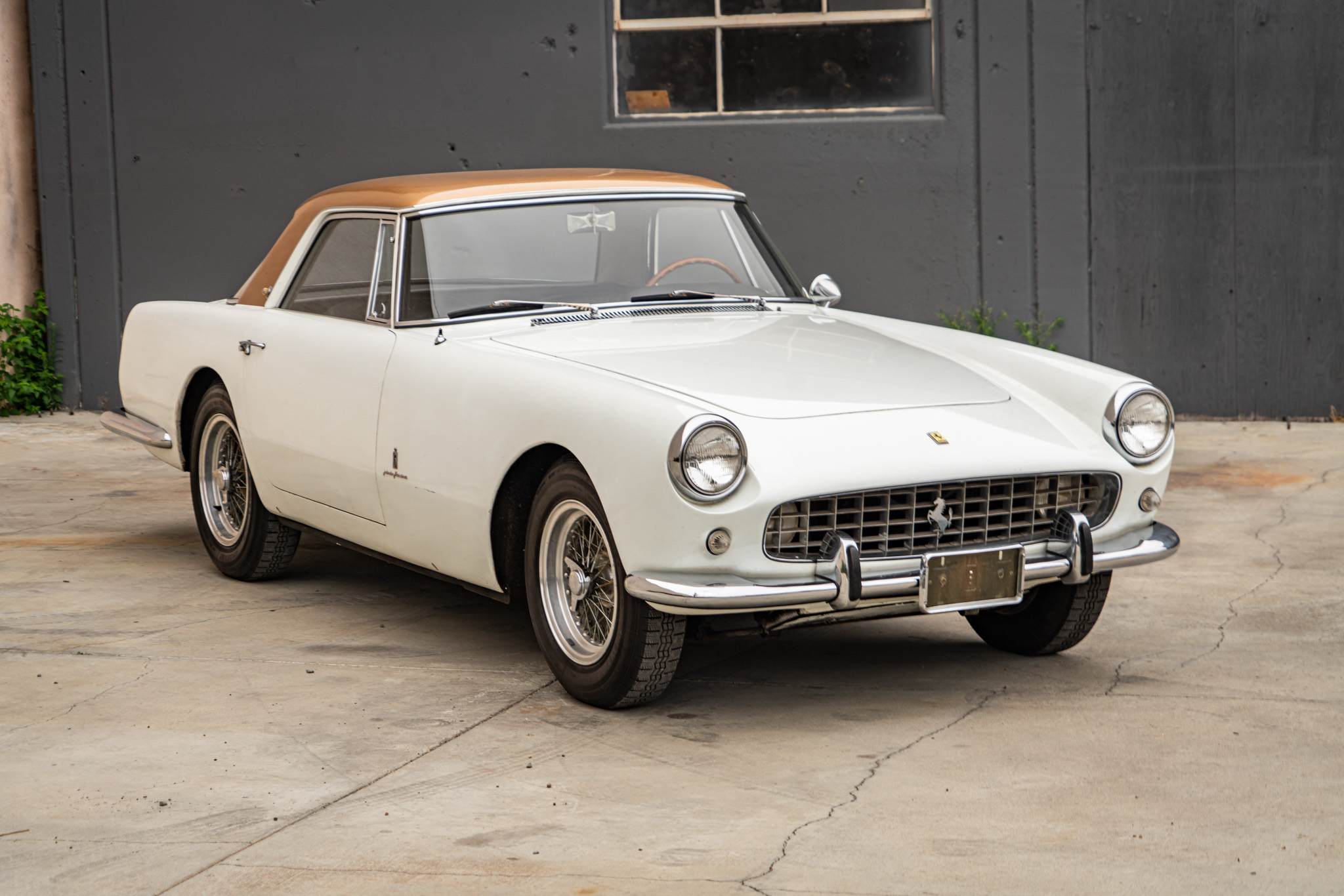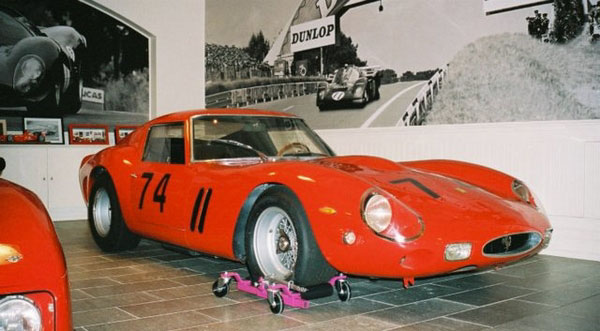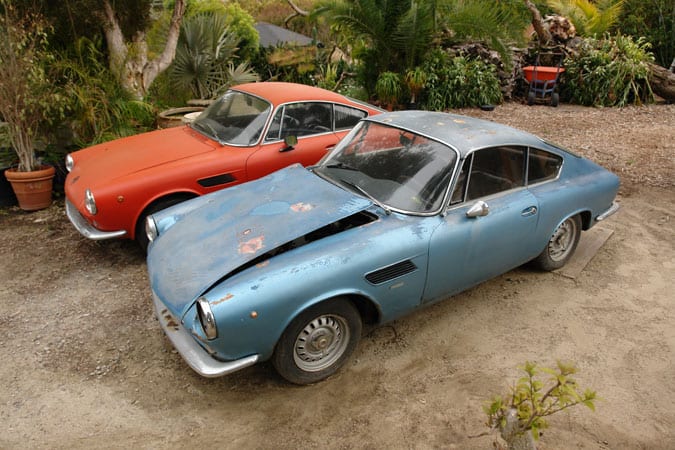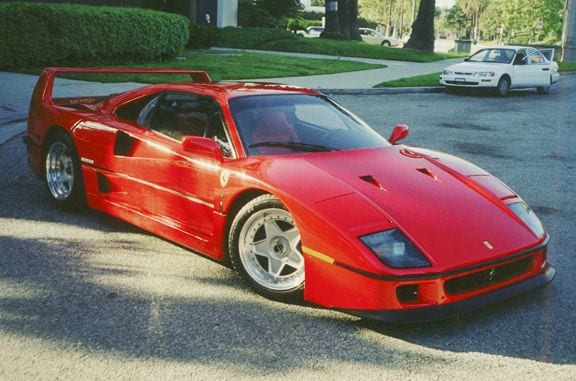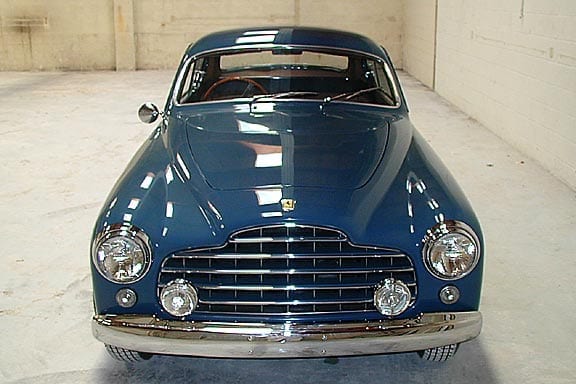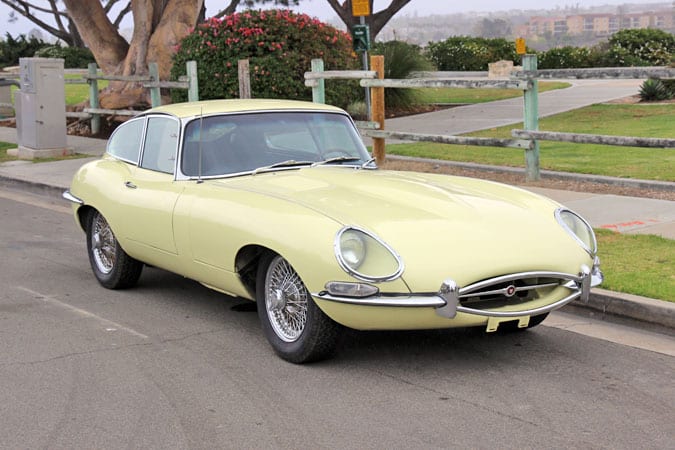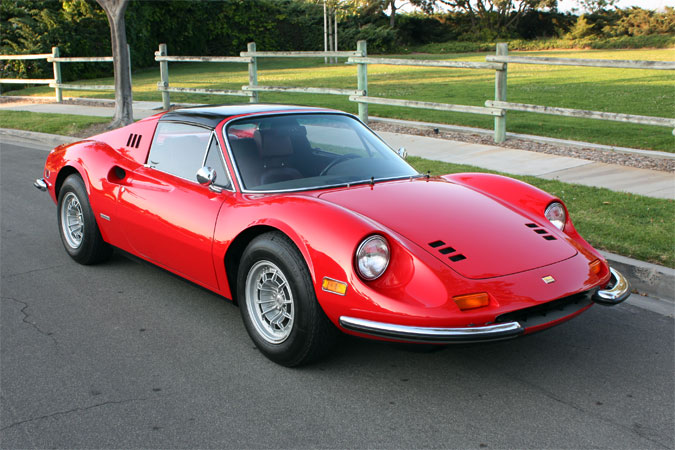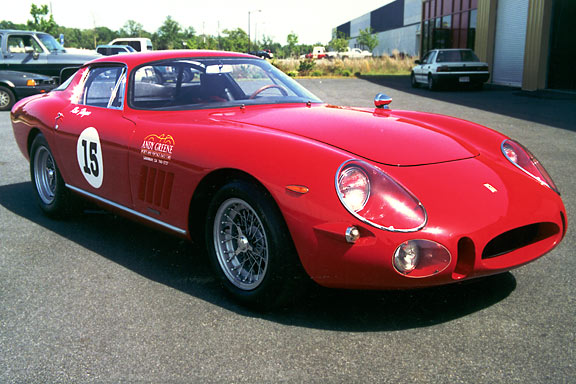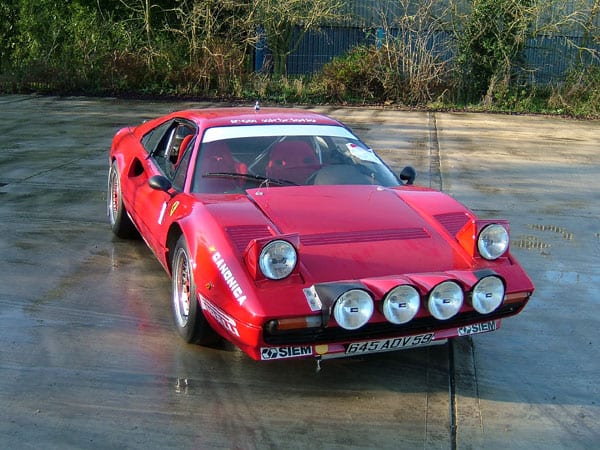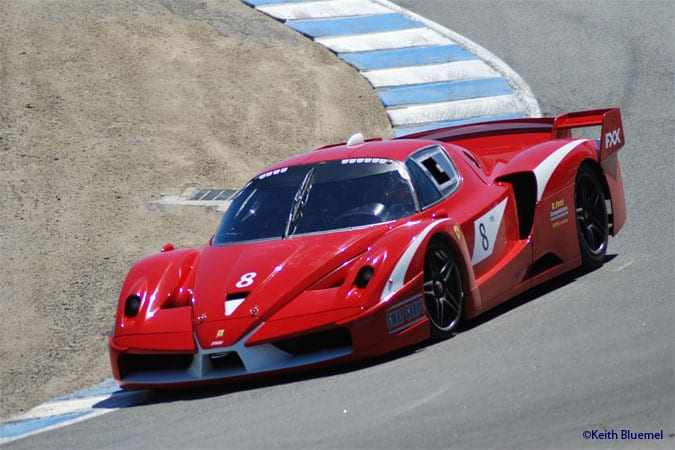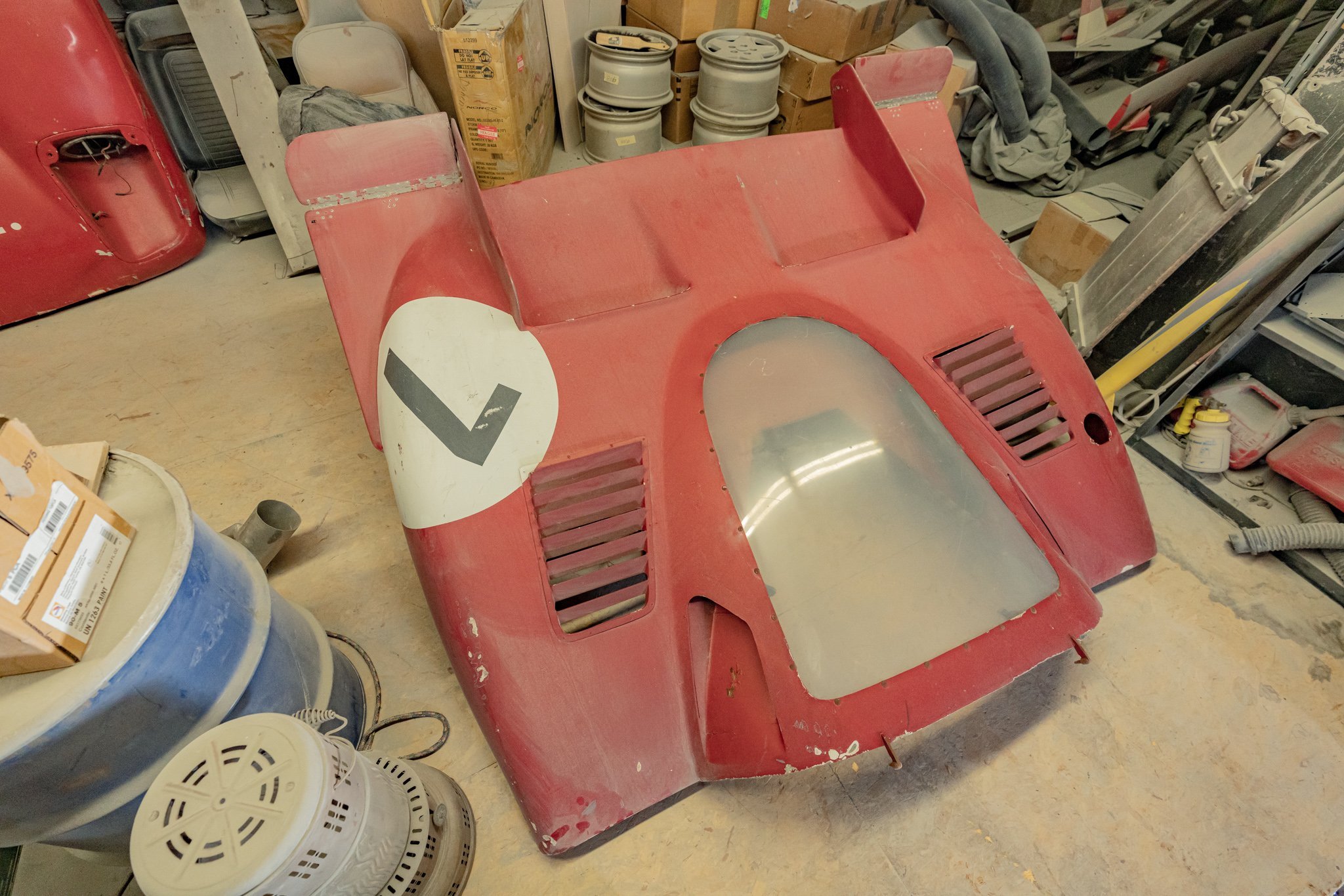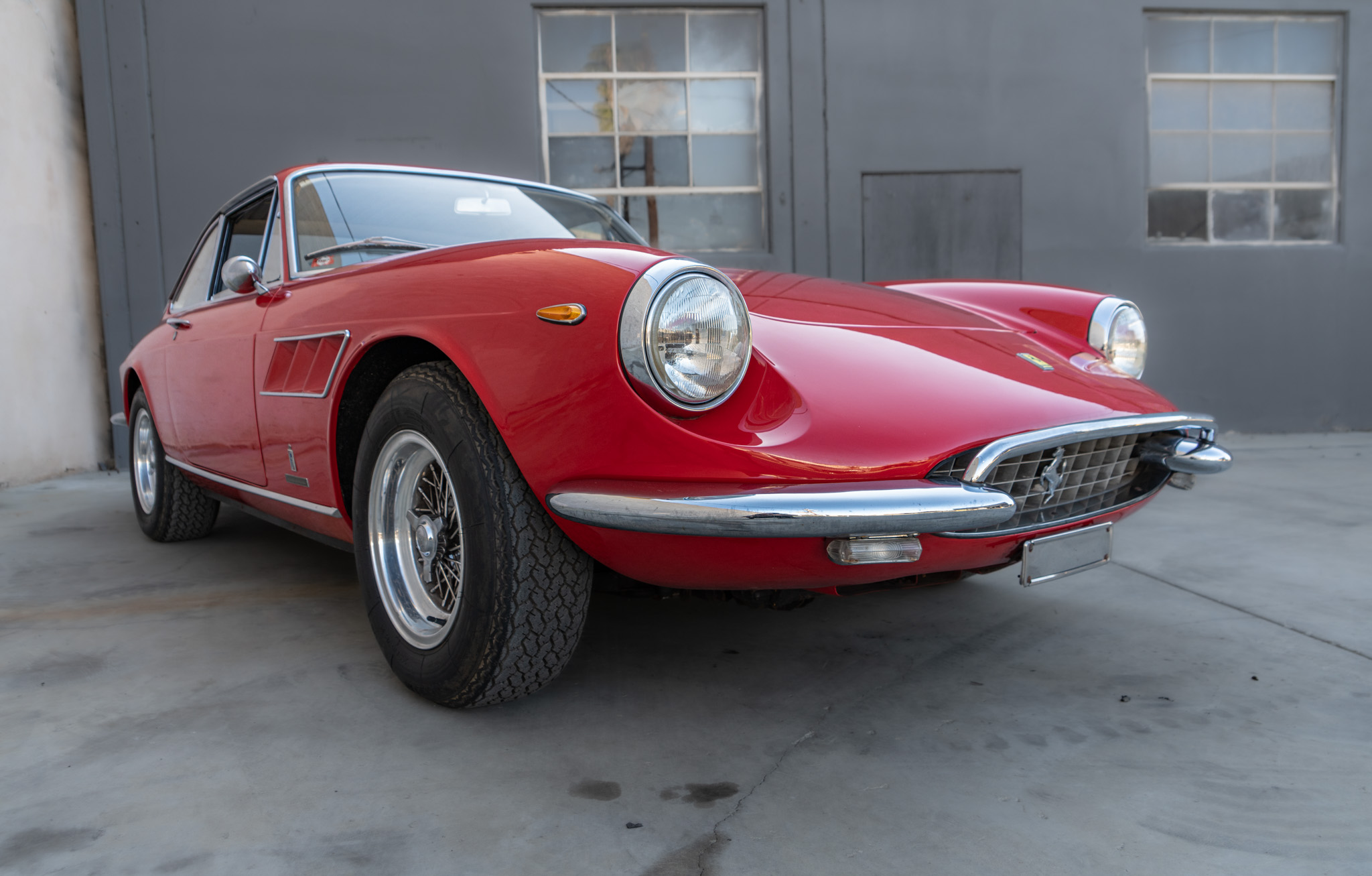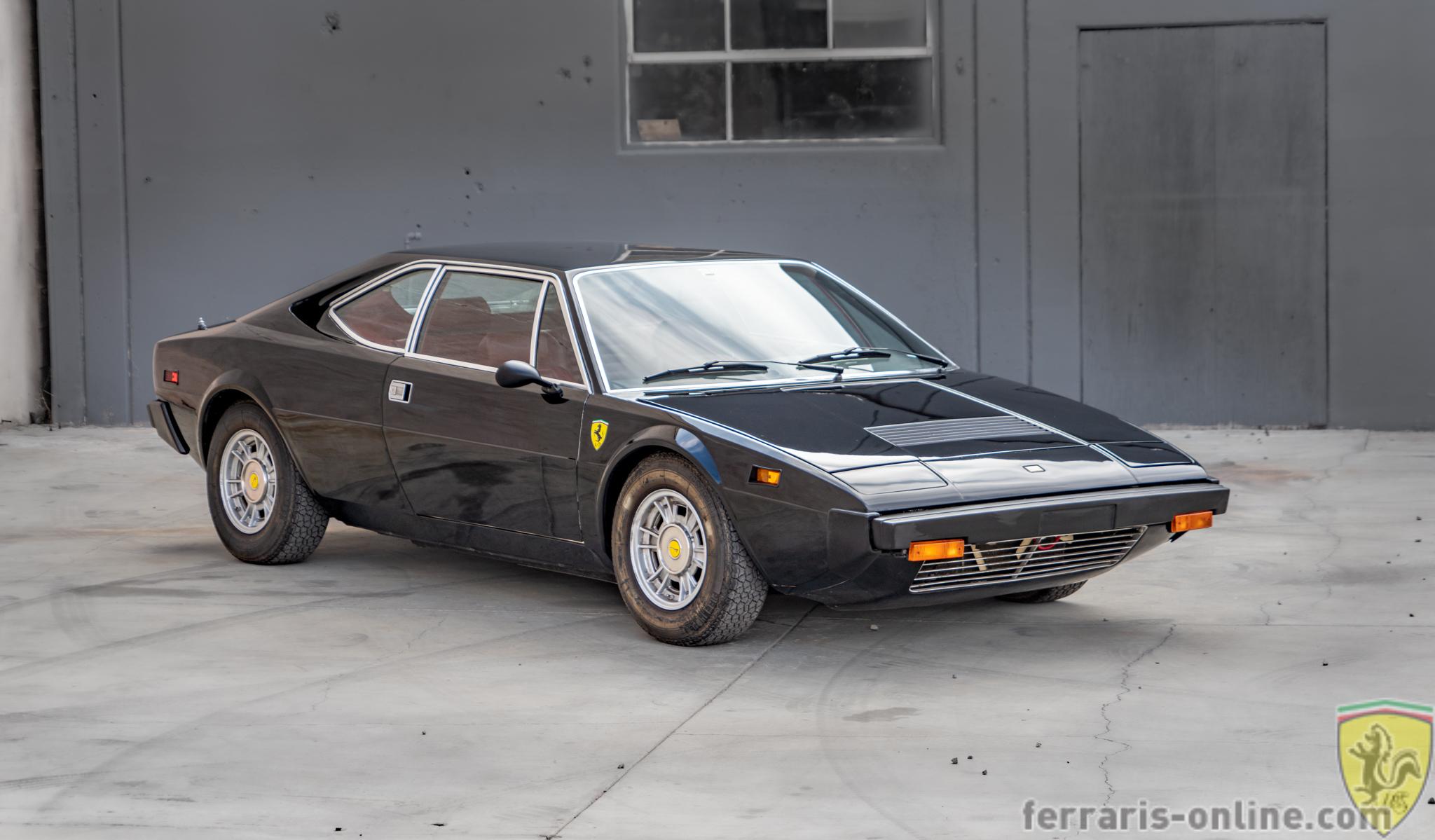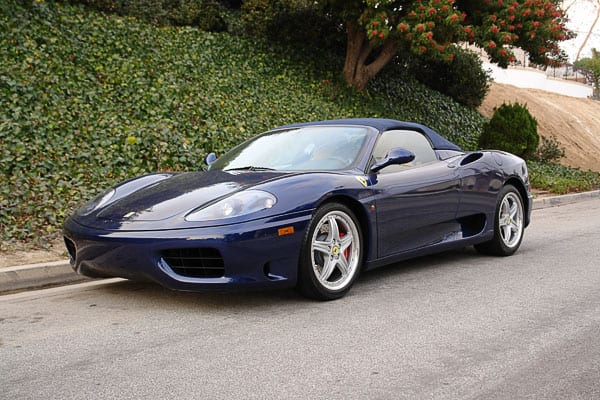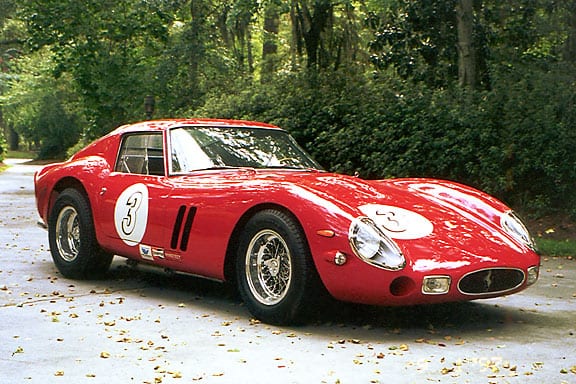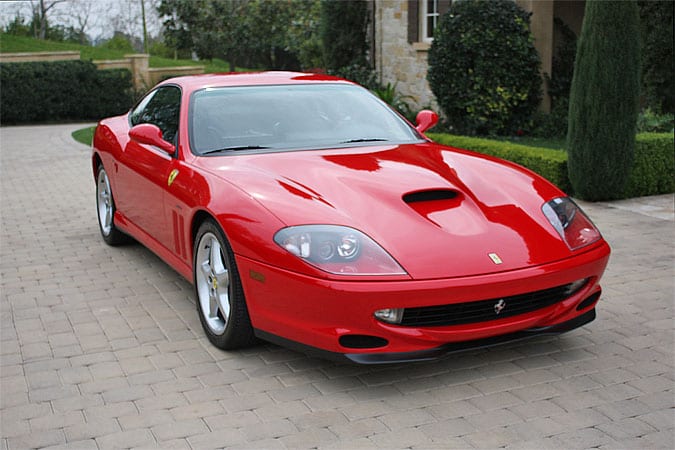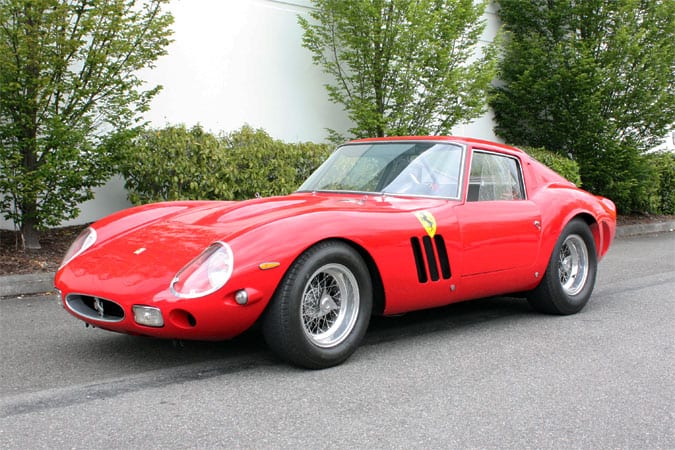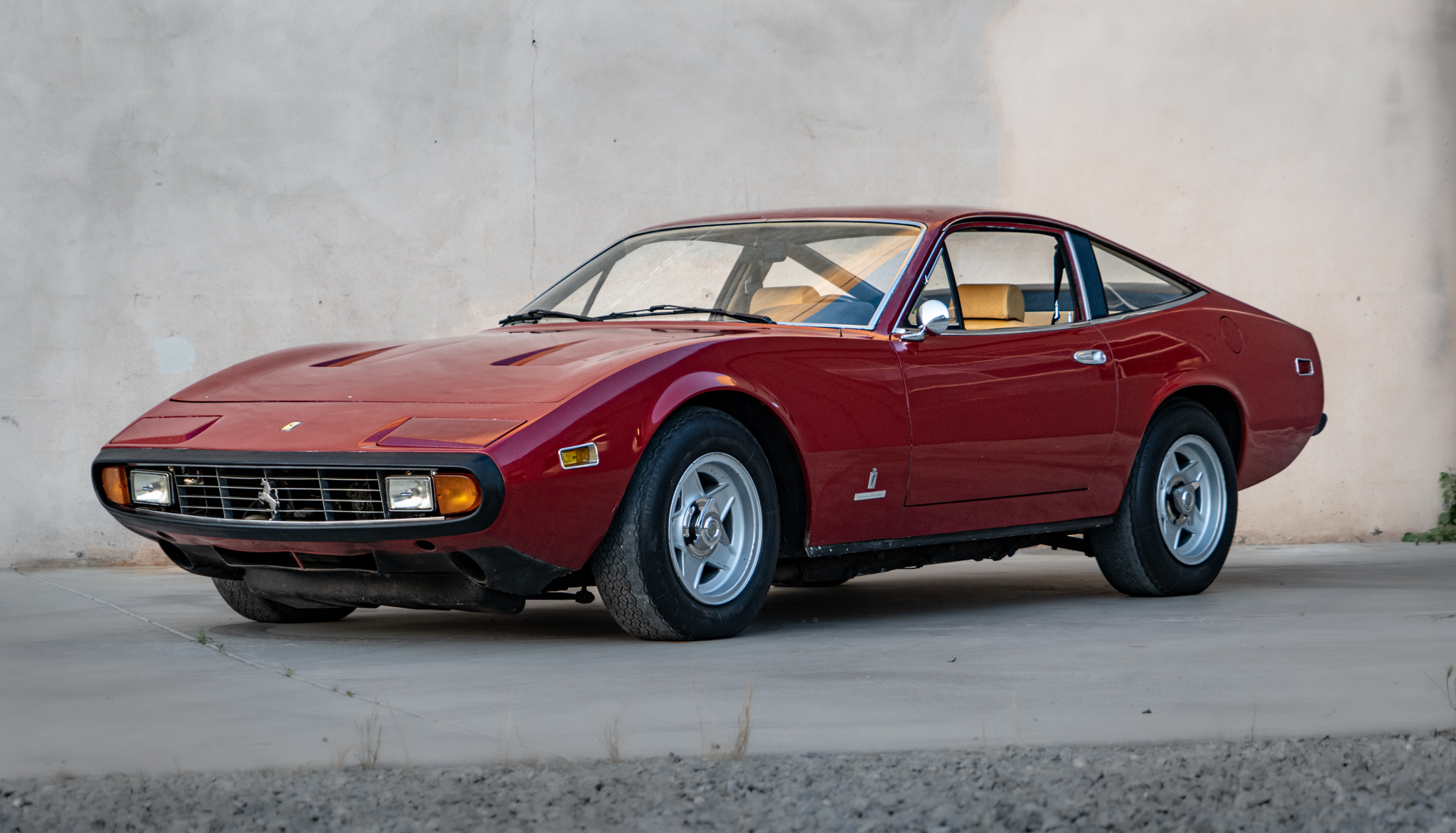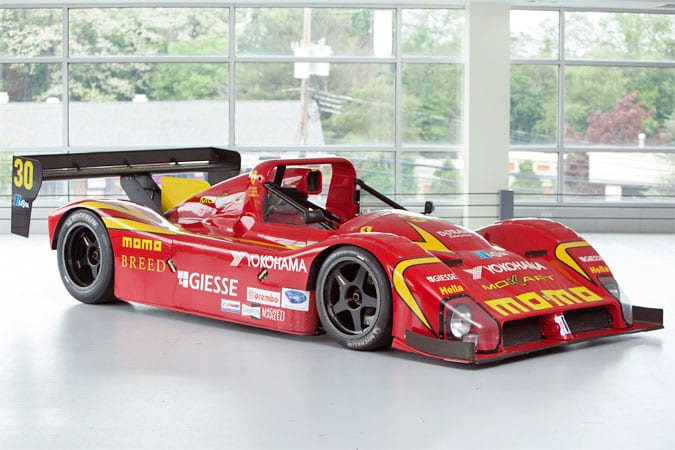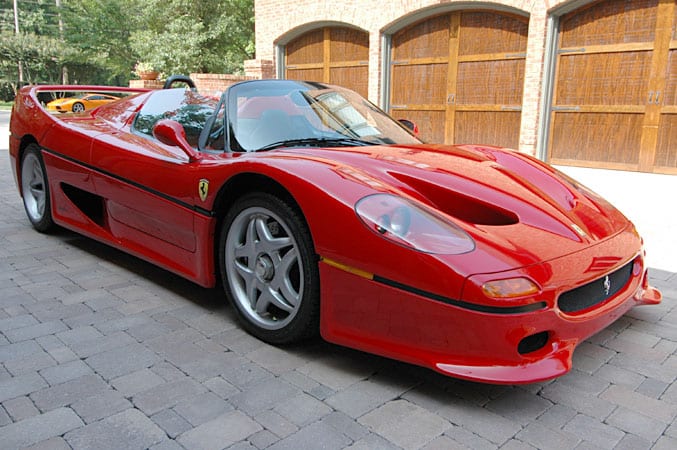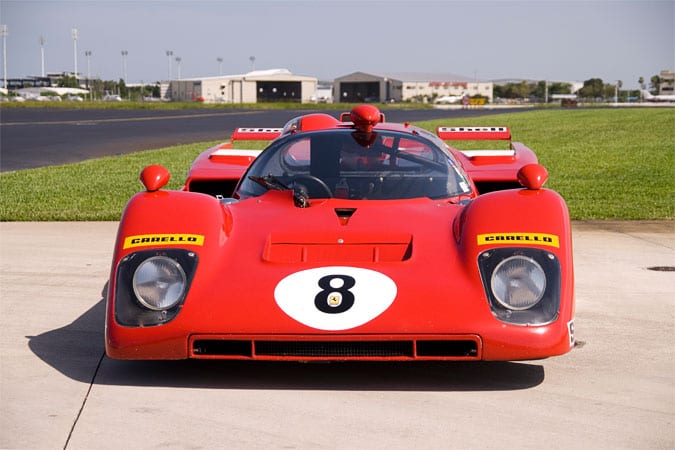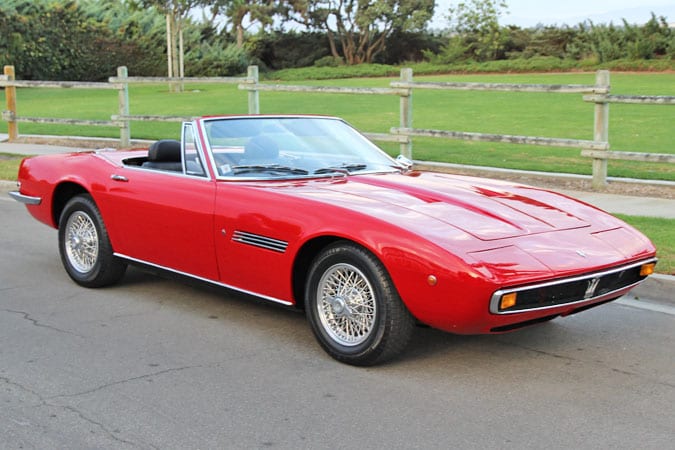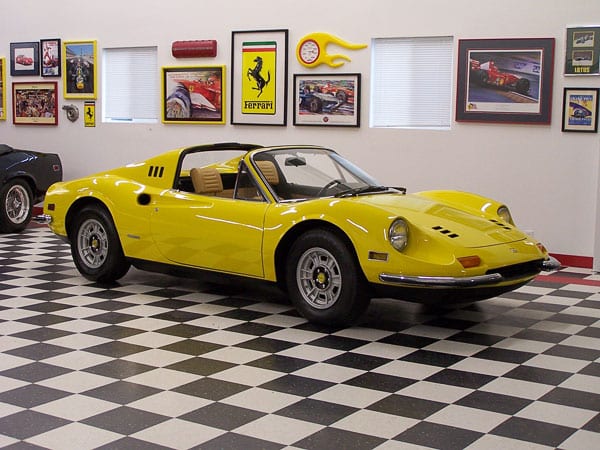SPECIFICATIONS
- Year1966
- MakeFerrari
- Model275GTB/C
- Serial Number09063GT
One of only twelve 275 GTB/Cs built for the 1966 race season as a rule-bending
“pure” race car that shared some parts and styling with the much heavier, less sophisticated and
less powerful standard “road” cars. Fitted with a tipo 213/comp 3.3 liter engine with three special
40 DFI3 Weber carbs, the 275 GTB/C engine is a mildly detuned 275 LM engine and features dry sump lubrication,
a 22 quart oil capacity and a massive oil cooler. The pistons are forged 9.3:1 with lightweight connecting rods
and a competition crankshaft. Cams are tipo 130 (GTO and LM) competition camshafts with high temperature steel
valves and needle bearing rocker arms. The valve and camshaft drive chain covers, the bellhousing and the
transaxle case are in magnesium alloy. With 320 hp the 275 GTB/C engines were the most powerful GT motors as
yet made by Ferrari. Supported by a lightweight chassis tipo 509 A and covered with an aluminum body even
thinner than that used on the legendary 250 GTO; the 275 GTB/Cs also featured larger and wider wheel wells and
wider wheels and tires. These powerful, wel-balanced and lightweight racers were truly built as a
replacement for the highly treasured (and very expensive) legendary 250 GTOs. With only twelve 275 GTB/C
“silhouette racers” built, these cars are an important asset to any Ferrari collection. Priced
correctly at $1,250,000.
S/n 09063 GT.
This car was one of the most heavily campaigned of the 275 GTB/Cs, being
originally sold to Pedro Rodriguez. The car ran at Nassau in December of 1966, finishing 2nd in the Tourist
Trophy race, and was then sold back to Chinetti. In 1967 it retired from the 24 hours of Daytona with Salas
and Rebaque as drivers. In 1969 Sam Posey and Pedro Rodriguez drove this car to 23rd overall at Daytona. In
1970 Harley Cluxton and Gordon Tatum DNFed at Daytona. This car then became a successful SCCA racer, racing
up to 1975!
To Rodriguez (MEX), through Chinetti.
1966, 08 Dec. the Nassau Tourist Trophy Race, originally scheduled for 25 Nov.,
1966, was held late because of shipping problems. Many cars did not arrive in the Bahamas in time for the
scheduled Nassau Tourist Trophy Race so that race was postponed. It was then run concurrently with the
Governors Trophy Race.
Rodriguez finished 6th overall in the combined Governors Trophy/Tourist Trophy Race.
Rodriguez also finished second in the separate Tourist Trophy Race classification.
To Chinetti (USA).
To Dr. Gerardi (USA).
1970, to Harley Cluxton (Chicago USA).
1970, to Peter Johantgen (Colorado, USA) Peter had the car driven by Danny Collins
in SCCA & local races.
197680 Ferrari Owners Club Roster, listed by Tex Arnold, Aurora,
Colorado. (USA). Edwin (Tex) Arnold then raced 9063 in SCCA AProduction in Texas in 1976.
To Steven Stephner (USA).
To FAF Motorcars (Atlanta, USA).
To Dr. Ron Finger (Savannah, USA).
To Joe Marchetti (Chicago, USA).
1992, to Al Obrist (Switzerland).
To Bernie Eccelstone (GB).
1999, 25 Aug., as per long talk with a client, the McCaw brothers have just bought
9063 GT and 7437 GT from Obrist for a very substantial sum, and will be soon selling s/n 9007 for some reason!
2000, 1015 Apr., Tour Auto, McCawMcCaw.
2000, 17 Aug., Brooks Quail Lodge. Not sold at $980,000.
As per Sports Car Market review: Burgundy/tan leather, cloth. LHD. Odo: 268 kms.
5speed manual. Borrani wire wheels. A superbly restored competition 275 with significant history. Pristine
condition, factory roll bar is standard. ExPedro Rodriguez. Cond: 2+. Not sold at $980,000. This 275 was
superb, but Brooks had estimated it at $1.2M to $1.5M and the last few known sales of this type tended to be at
the $1M level or just below. The crowd seemed to want this car at the same level and refused efforts to kick it
up a notch.
2001, Cavallino Classic Shell Historic Challenge. Driven (very well) by Dominic Dobson.
2001, 10 Mar., at RM Amelia Island auction. Per catalog: Mexicos Rodriguez
brothers, Ricardo and Pedro, were racer wonderkids in the Sixties. Sons of an ambitious father who had built a
fortune in Mexico, their toys were Porsches and Ferraris and they proved worthy of driving the best of them. Ricardo,
the younger by two years, stepped into Formula 1 at the age of 19 years, 6 months and 7 days at the wheel of a Ferrari
in the cradle of Italian Motorsport: Monza. He qualified it second. While their fathers money might buy rides,
only talent could buy the exceptional results of Pedro and Ricardo Rodriguez.Pedro, two years older, shared
many epic drives with his little brother. Known for their codrives, the brothers Rodriguez frequently competed
against each other in storied contests and if Ricardo was more often the faster, Pedro was more often the finisher.
Senor Rodriguez could afford the best for his boys. The best came from Maranello and Luigi Chinettis
NART was the conduit through which many of Ferraris best cars flowed out to the world. Testa Rossa, Dino, GTO and
others migrated from the Scuderia to NART. Perhaps to stimulate the interest of potential buyers, NART frequently
demonstrated their prowess in a race or two, often with a Rodriguez behind the wheel. At important events NART fielded
its best cars and drivers. The audience was right for attracting both paid and paying drivers and for promoting the
attributes and availability of the cars to wellheeled racers.Nassau in the Sixties was one such event.
Promoted by the legendary Capt. Sherman F. Cruise (known universally as Red) Nassau was known to be a
party punctuated by a few races, but it attracted the best teams, cars and rivers. Spectators were few and far between.
This was the racers Speed Week and they gathered in Nassau to sip, slip and slide around its sandy runways and
abundant watering holes among a comprehensive sampling of their brethren.It was in this starstudded
enclave that the car offered here made its debut in the talented hands of Pedro Rodriguez. Ferrari had introduced the
275 GTB in 1964. Its Colombobased V12 now displaced 3.3 liters. Its suspension derived from Ferraris recent
racing experience with the 250 LM, employing independent rear suspension and a transaxle for better road holding and
balance, the first road Ferrari to feature IRS Ferraris race car development was now being focused, forced both
by competition and by regulations, onto single purpose sportsracers but the 275 GTBs combination of
performance and handling commended it to GT competitions. The series was offered from inception with the buyers
choice of steel or lightweight aluminum coachwork. In both cases bodies were supplied by Scaglietti to an aggressive
yet gracefully curvaceous design by PF. The single cam V12 was homologated with three dualthroat downdraft Webers
40DCZ6 carburetors and was noted for its smooth power delivery and broad usable torque band. This was really the last
Ferrari street car that could be driven to the track and then raced with reasonable prospects of a competitive performance
and Ferrari drivers did so in some numbers and with success.Always ready to capitalize on a niche, and bedevil
the technical inspectors of the FIA. Ferrari created a sixcarb version of the 275 GTB with 20 more hp that was even
more effective but often raced in the Prototype class when event scrutineers realized the 6 Webers, so familiar on Ferraris
sportsracers, werent homologated on the Berlinettas. But competitors were nipping at Ferraris GT heels
so in 1965 a true competition Berlinetta was created with three Weber induction, meeting the letter of the 275 GTBs
homologation. It was designated 275 GTB/C (Competizione), with GTOlike nose that marked its departure
from the production 275 GTBs. Prepared for Le Mans in 1965, Ferraris competition challenged the cars homologation,
but it was approved just before the race, justifying Ferraris efforts with a sterling finish, 3rd overall and 1st in GT
driven by Willy Mairesse and later won the 1965 Nassau TT with Charlie Kolb.A short run of similar cars followed,
sporting the standard 275 GTB nose which had been subtly lengthened to eliminate lift at high speed. The first series of 275
GTB/Cs had wet sump engine and were more modified alloy body production 275s than racing specials.That was
not to be the case in 1966 when the success of the first series of 275 GTB/Cs led Ferrari to conceive and produce a second
series in 1966. Only a dozen of these 2nd series 275 GTB/Cs were built. Like other cars being built, developed, designed or
conceived in the backrooms of GM, Ford and Porsche, the second series of 275 GTB/Cs were pure race cars that borrowed some
parts and styling from standard production cars.The 275 GTB/Cs type 213/comp 3.3 liter engines used three
Weber carbs and there the similarity to the type 213 engines in the road 275 GTBs ended. In fact, the 275 GTB/Cs engine was
more similar to the 275 LM engines than to the regular type 213 engines. Dry sump lubrication with 22 quart capacity and a
massive oil cooler ensured reliable operation. Forged 9.3:1 compression pistons operated a competition crankshaft through
special connecting rods. Type 130 competition camshafts operated high temp. steel valves through needle bearing rocker arms
as fitted to the 250 GTO and 275 LM. There may have been only three carbs but they were special 40 DFI3s to cope with the
engines deeper breathing and higher revs. Wherever possible, engine components including the valve and camshaft drive
chain covers and the bellhousing, were cast from magnesium alloy. The factory claimed 320 hp from this passionate and powerful
heart; probably about the same relationship to true power as Chevys 1967 claim of 425 hp from its 500 hp L88 corvette.
The lightweight chassis was specially built in Ferraris racing department and given its own designation.
Type 509A. While the A is most likely an alphabetic variant, it could equally be the Italian Alleggerita,
for these affairs were most seriously lightweight. Constructed of the lightest practical tubing but stiffer in
torsion than the production 275 GTB, the elimination of unnecessary mass throughout the chassis was comprehensive. Bodies too,
were greatly hammered from aluminum even thinner than that used on the legendary 250 GTO and sported larger and wider wheel
arches to accommodate wider wheels and tires. The gearbox and drive train are special, retaining the open driveshaft of early
275 GTBs, albeit with constant velocity universal joints, for easier inspection and service.Weighing 300 pounds less
than standard aluminumbodied 275 GTBs, the GTB/Cs designers and builders had achieved their objective. The
performance of these powerful, wellbalanced and lightweight racers is scintillating and comparable with that of the 250
GTO. In these twelve exotic GTs almost silhouette racers, Ferrari created one of the marques rarest variants. It
is only this second series that carries the 275 GTB/C designation on their chassis id plates.Rodriguez found himself
driving 09063s debut at Nassau in a race which combined the Governors Cup modified cars with the Tourist Trophy
productionbased cars because of a delay in some of the cars arrival in the Bahamas. Despite competition from the
likes of Ferrari sports racers and American CanAm specials like the Chaparrals the brilliant Pedro Rodriguez showed both
his ability and his 275 GTB/Cs pace by finishing second in the Tourist Trophy and sixth overall, a remarkable accomplishment
among such a starstudded entry of cars and drivers. However, even recognizing Pedro Rodriguezs talent, his ability
to master 09063 without practice or familiarization is both a testament to the potential of the 275 GTB/C and an example of the
balanced and predictable performance that makes the 275 GTB/C an ideal historic racer.Following Pedro Rodriquezs
demonstration of 9063s capability at Nassau, Luigi Chinetti sold 9063 to one of his established clients, Ennio Gerardi, who
retained it for three years without exploiting its proven competition potential. In 1970, however, 9063 passed to Harley Cluxton who
quickly entered the now wyear old GT in the 1970 Continental with Gordon Tatum codriving, classified 23rd at the finish.
Cluxtons subsequent entry in the 1970 Sebring 12 Hours with codriver Dr. Wilbur Pickett was frustrated by a piston
failure in practice. After Harley Cluxtons ownership 9063 passed to Peter Johanigen who entered it twice in CA regional events
with Danny Collins driving, then Edwin (Tex) Arnold who raced 9063 in SCCA AProduction in Texas in 1976. Arnolds AProduction
history is all the more remarkable in that it was a full ten yeas after 9063s Nassau debut, further attesting to the competitiveness
of the 275 GTB/C when it was a frontline GT competition machine, as well as the flexibility of SCCAs production
classifications.From Arnold 09063 passed to Steven Stephner, then to FAF Motorcars who completed the restoration begun by
Arnold after which it was acquired by Dr. Ron Finger of Savannah, GA. In 1992 09063 was bought by premier Ferrari collector Albert Obrist
to join his superb collection. After restoration by Michelotto and Cognolato in Italy, 09063 passed to F1 supremo Bernie Eccelstone when
he acquired Obrists collection, then to the most important collection of Ferraris in the US, its current owner, in 1999.
Meticulously presented in its original eggplant livery with outside laced Borrani wire wheels and dry sump 320+ hp 2cam engine,
09063 is one of only twelve second series 275 GTB/Cs, among the most rare and highest performance examples of Ferraris fabled high
performance Gran Turismo. Perhaps unique even in this rarified stratum of racing Ferraris, 09063 sports a factory installed six Weber carb
intake. It has a unique connection with Pedro Rodriguez, one of the most talented drivers of the Sixties, and the legendary NART. It is a
machine that will reward its new owner with exceptional performance, beauty and history, just as it did its present owner at the January
2001 Cavallino Shell Historic Ferrari Challenge where it won its class. Hammered sold at $1 million plus commission.
The buyer is a client of M. Sheehan.
As per Sports Car Market review:Cond: 1. Sold at $1.1 million. Consigned by West Coast reader, this was
the first of several cars to crack the millionbuck mark at this auction. Price was market correct, and about the same money the car
was bought for a few years ago. Bought by another subscriber.
2001, 11 June, seen by Jarrett Rothmeier at Symbolics workshop.
2001, 2 Sept., as per email from client/owner to M. Sheehan: On GTB/C we are asking a fair
market price. Please advise if your buyer/client is serious.
2001, 12 Oct., M. Sheehan met with a buyer/client at a popular cafe for lunch re: this car.
2001, late October, as per our various conversations with client, since we seem to be getting nowhere with car
A, its time to make a run at 275 GTB/C s/n 9063.
2001, 30 Oct., drove (buyer) client to (seller/client) owners home and inspected the car in detail.
Buyer went for a long ride with the seller. Buyer said might be a buyer and an offer was made.
2001, 31 Oct., counter offer made by seller.
2001, 12 Nov., email from buyer/client:Subject: # 9063GTCountercounter
offer made.
2001, 20 Nov., deal done.




